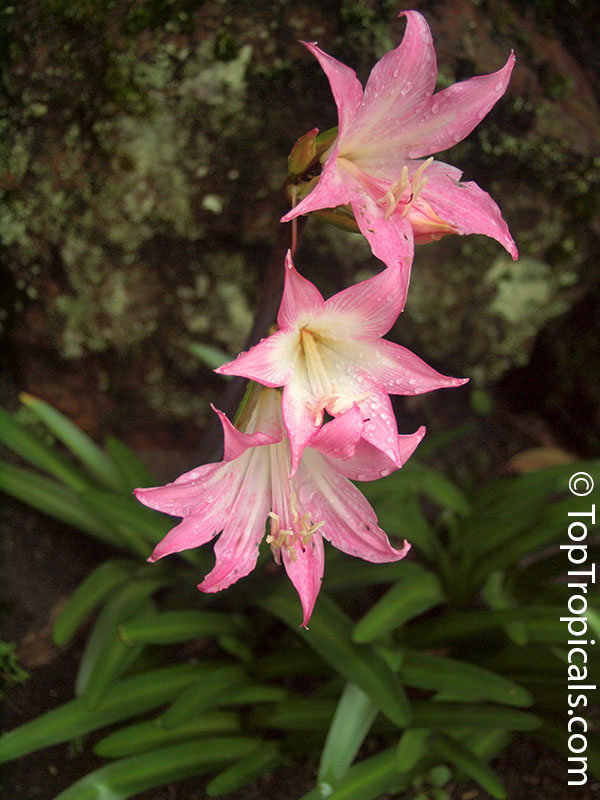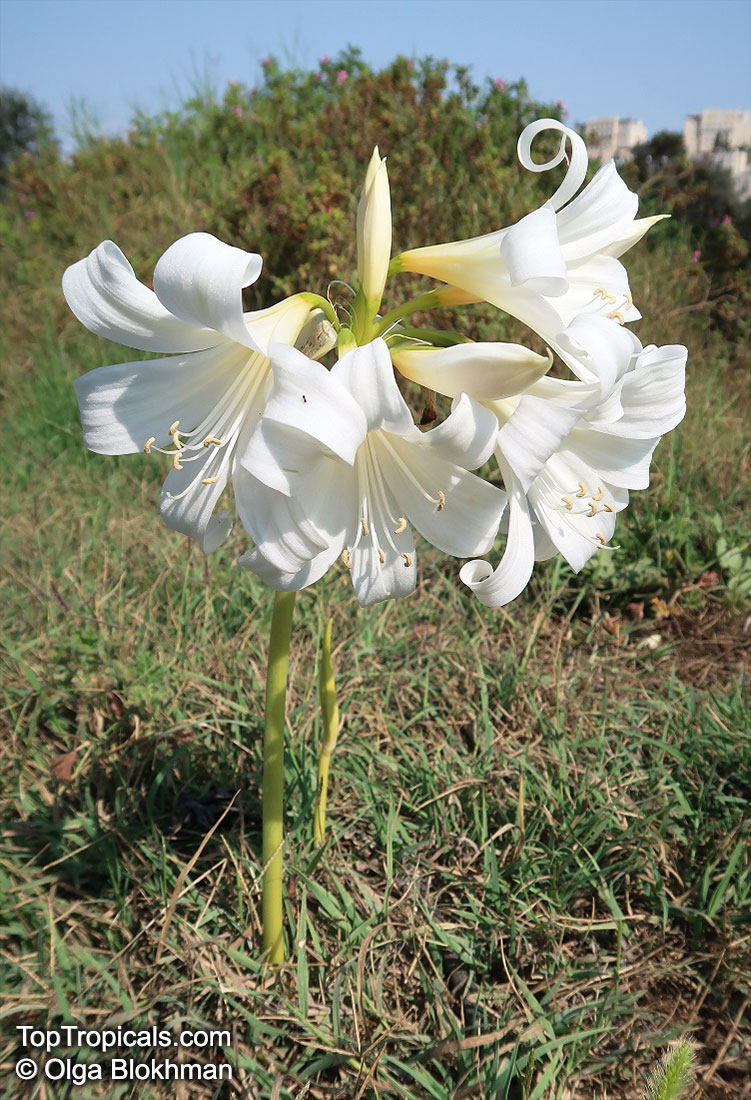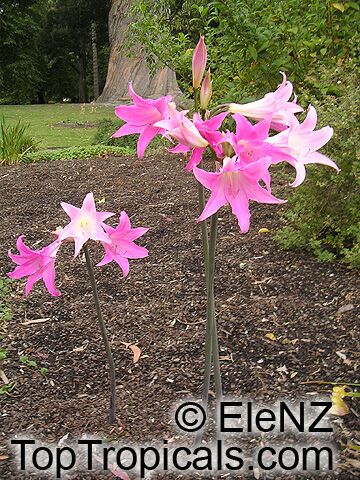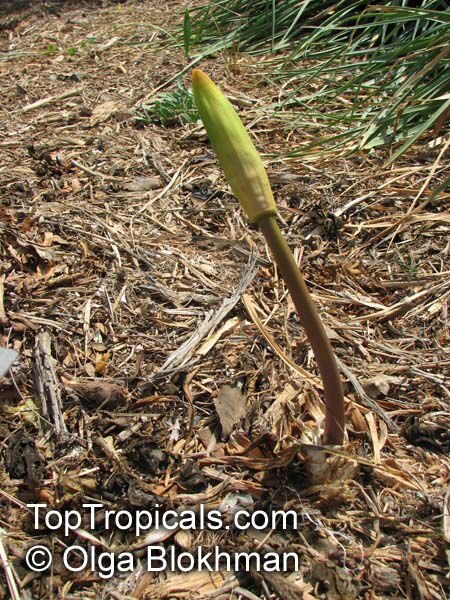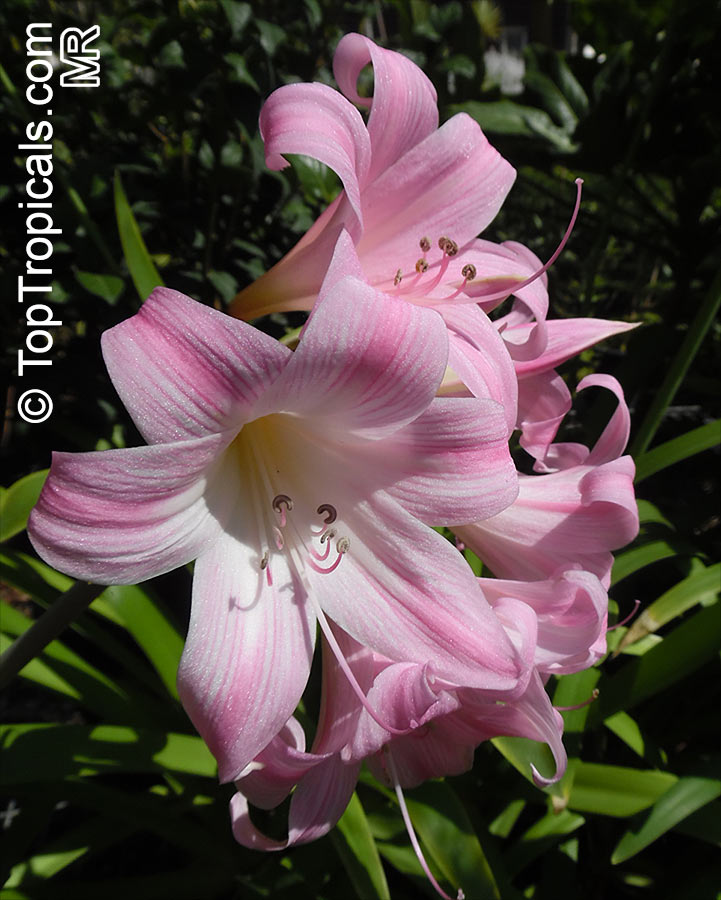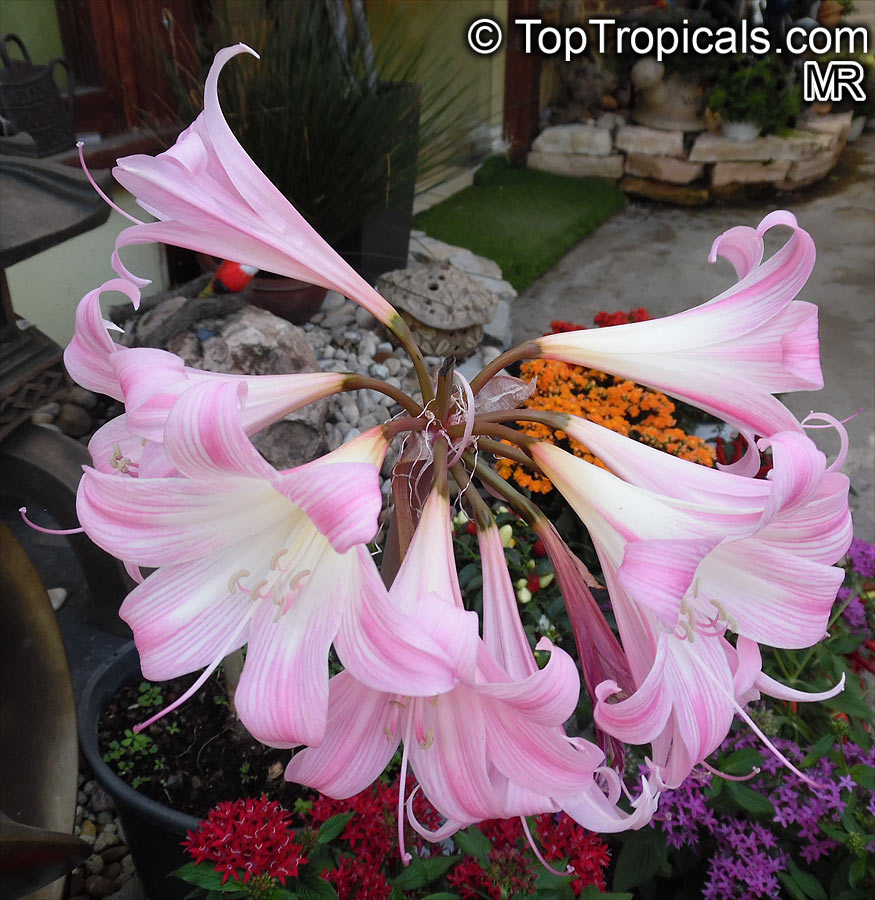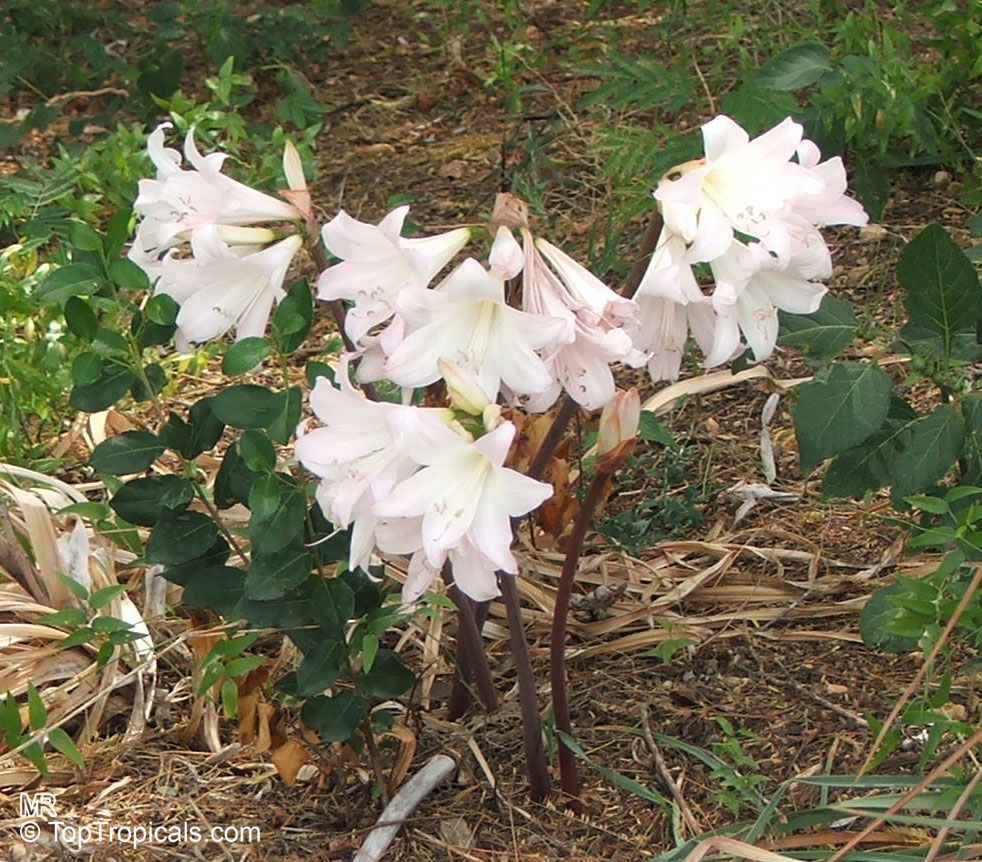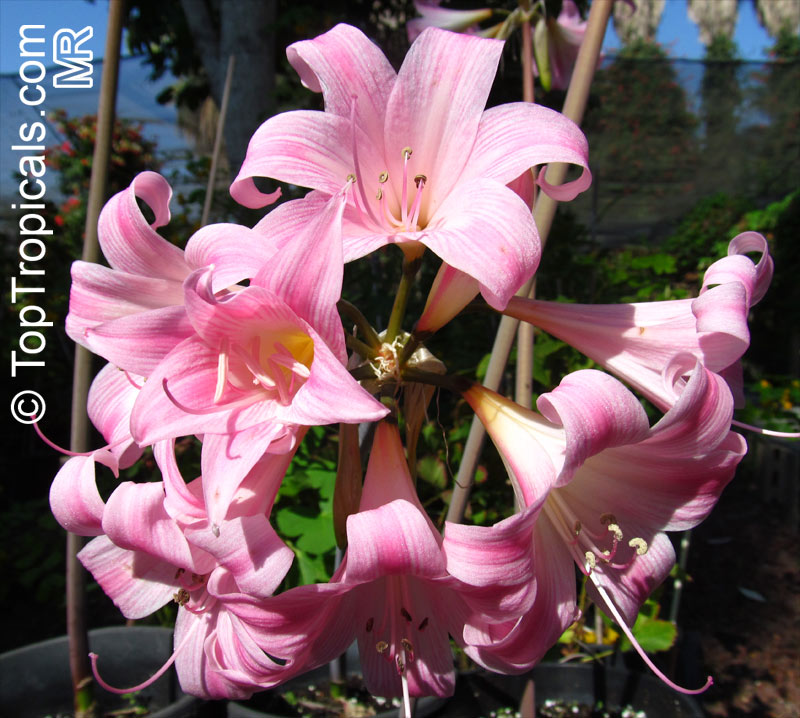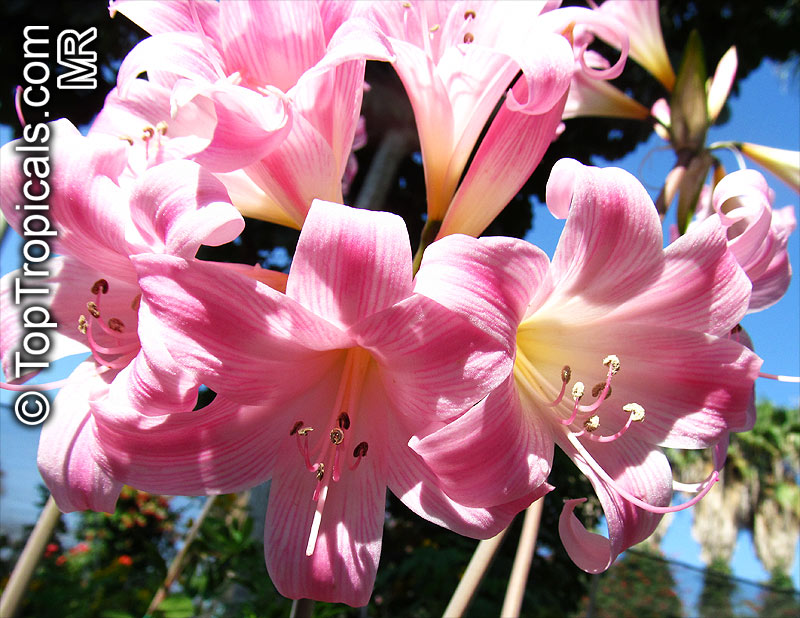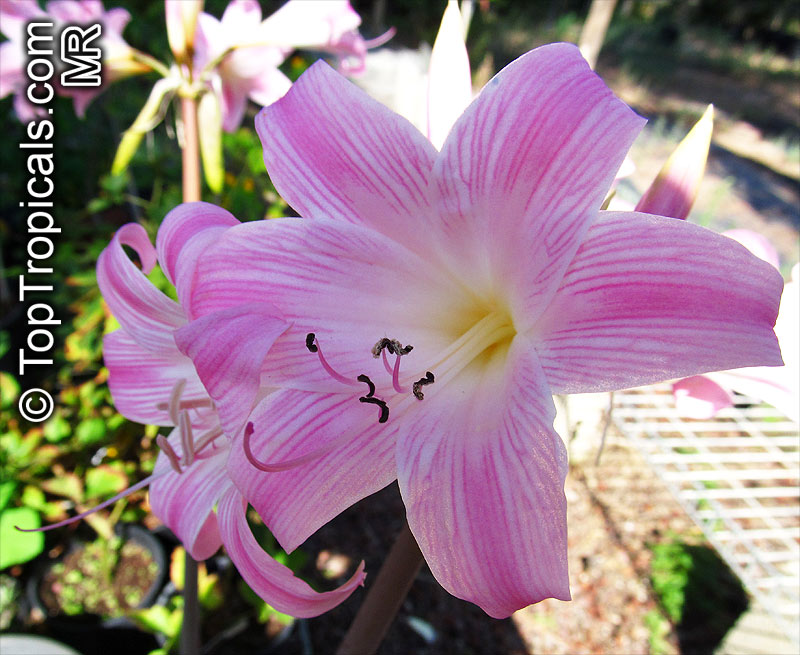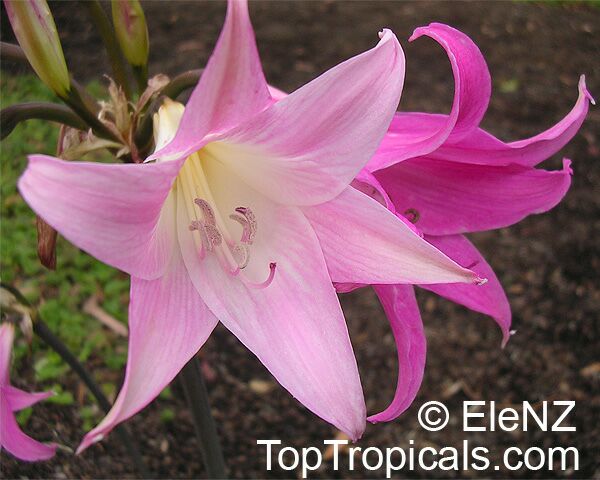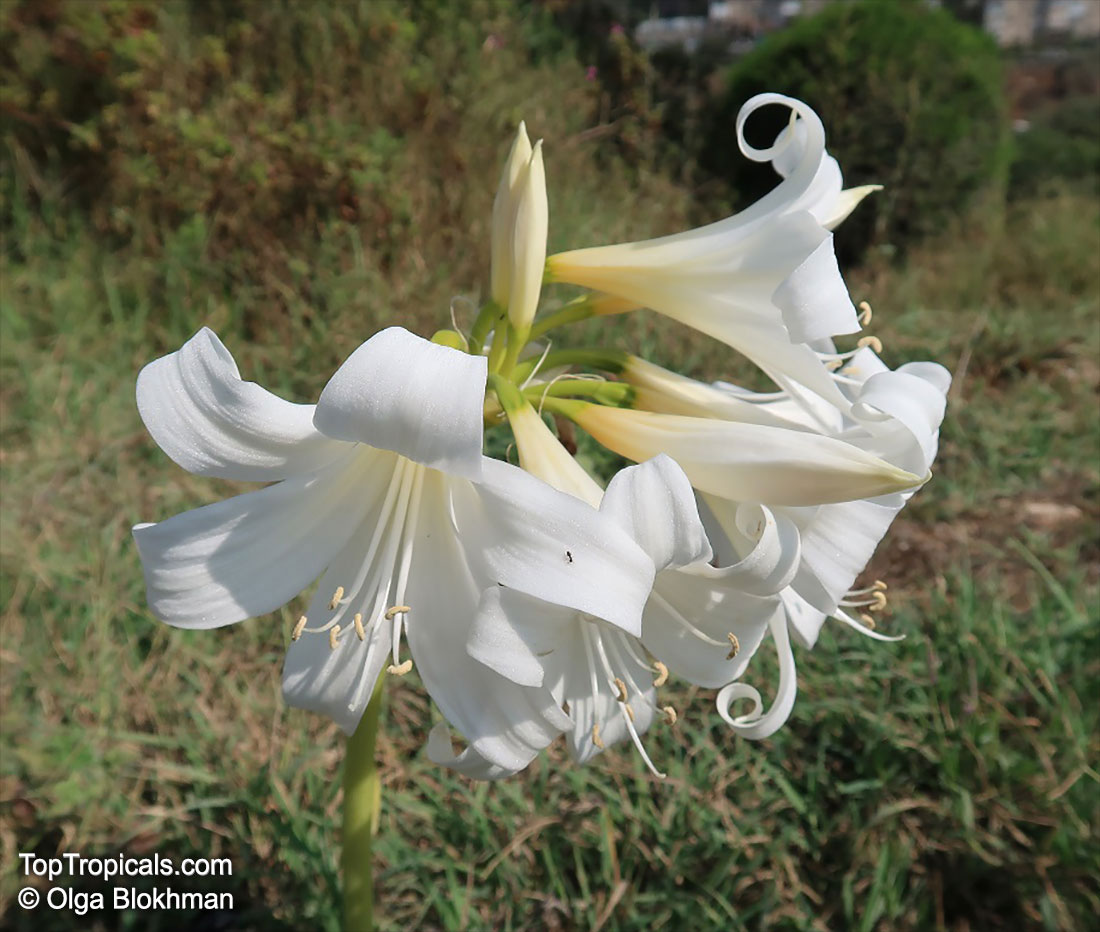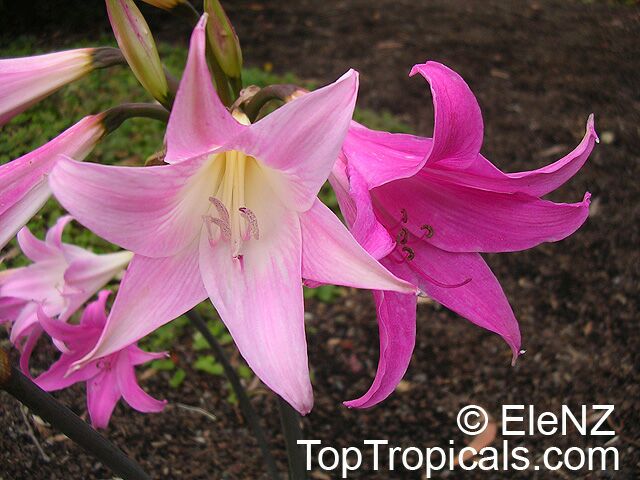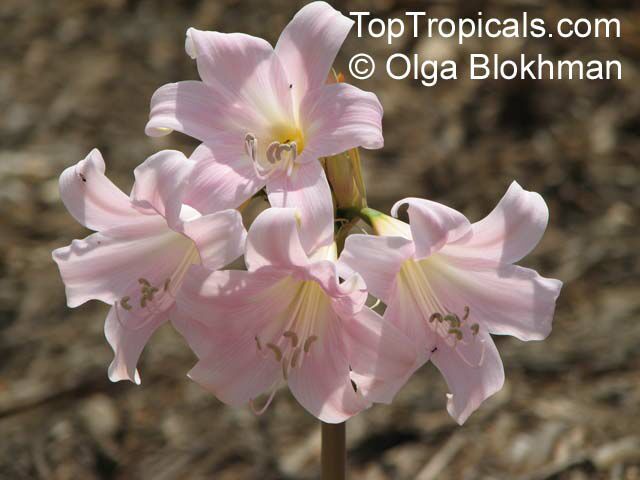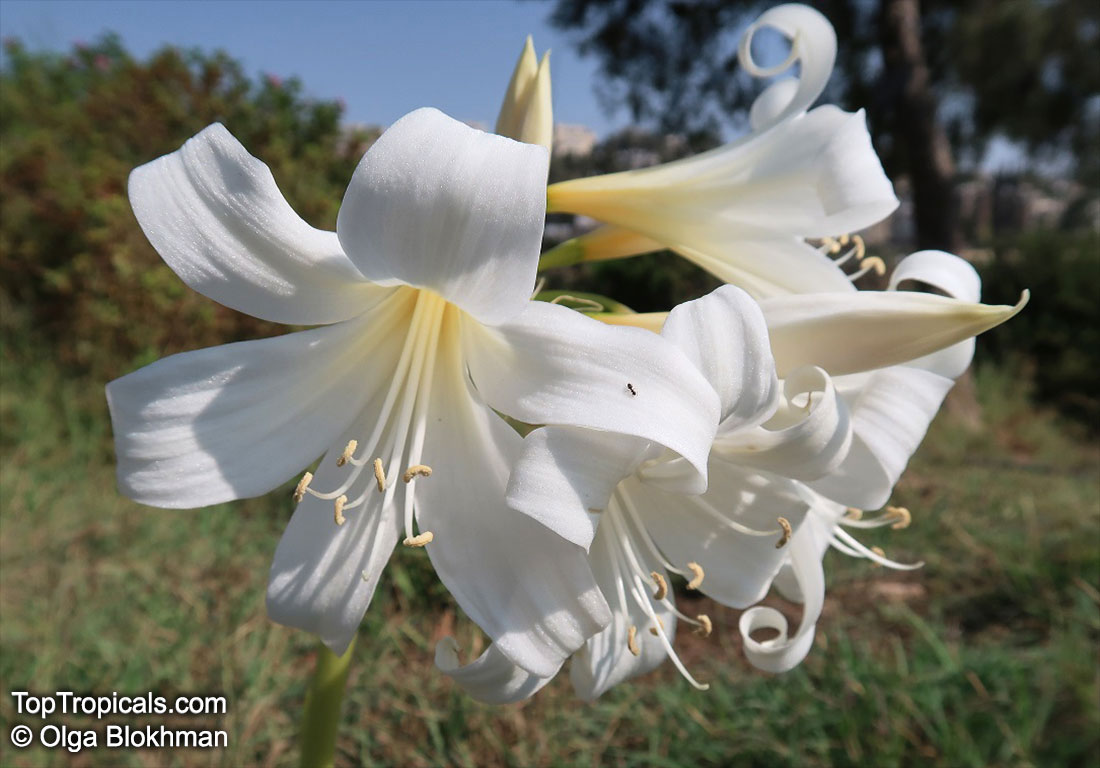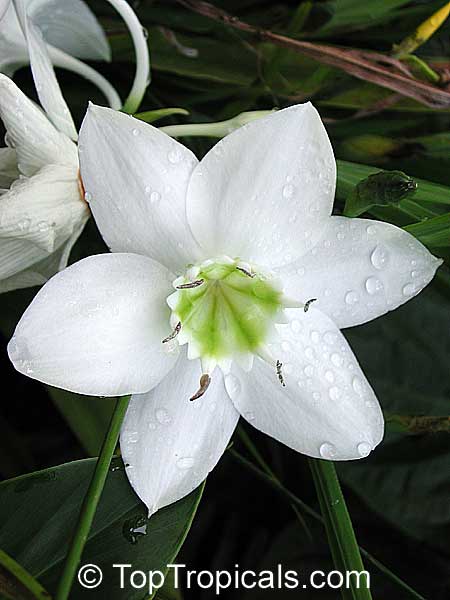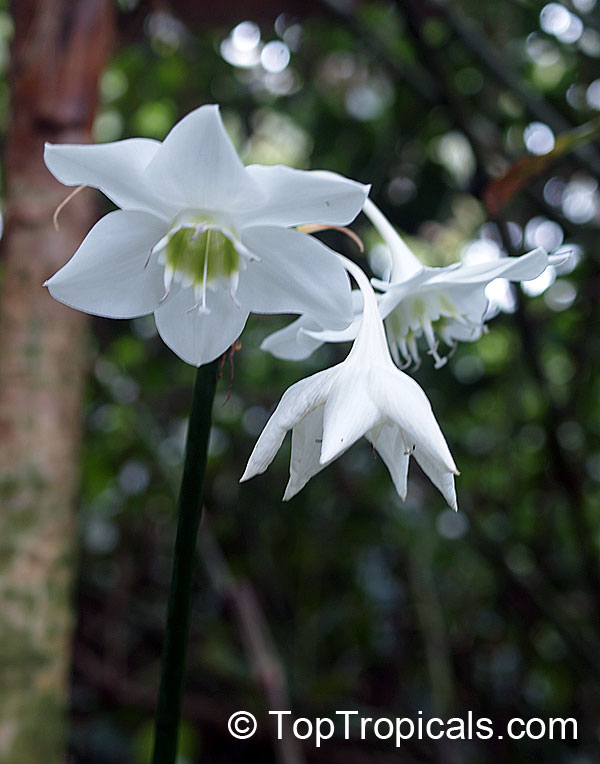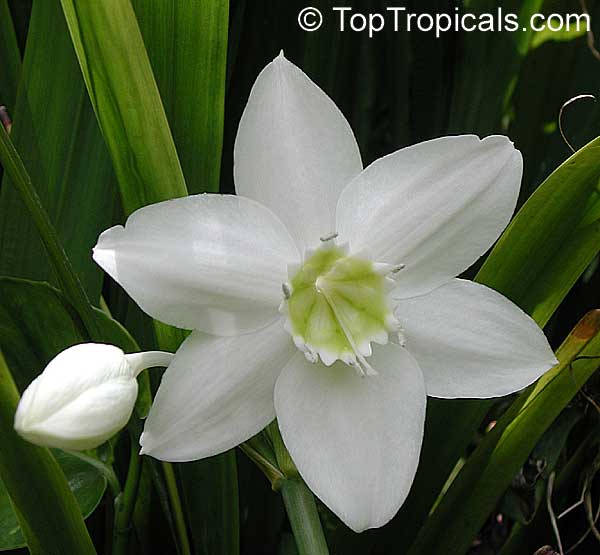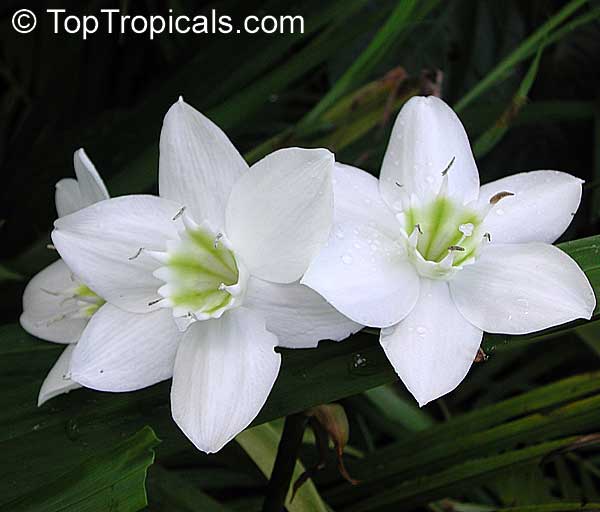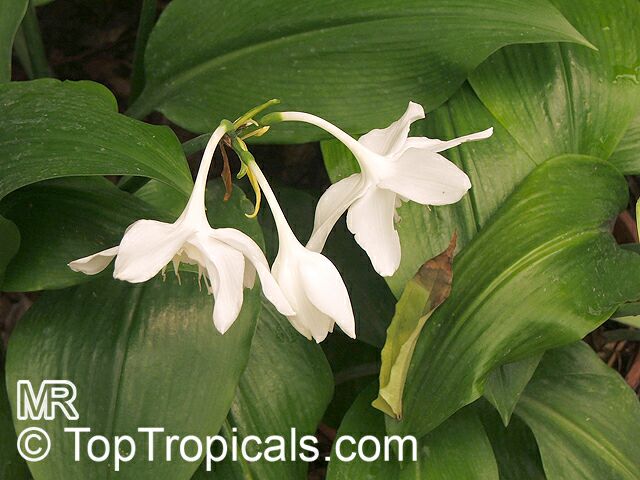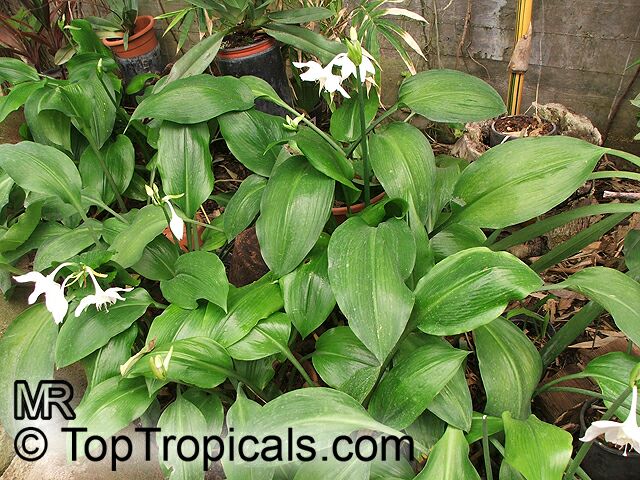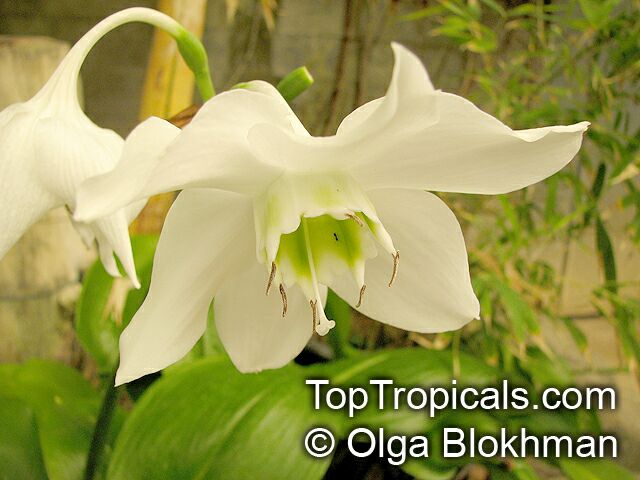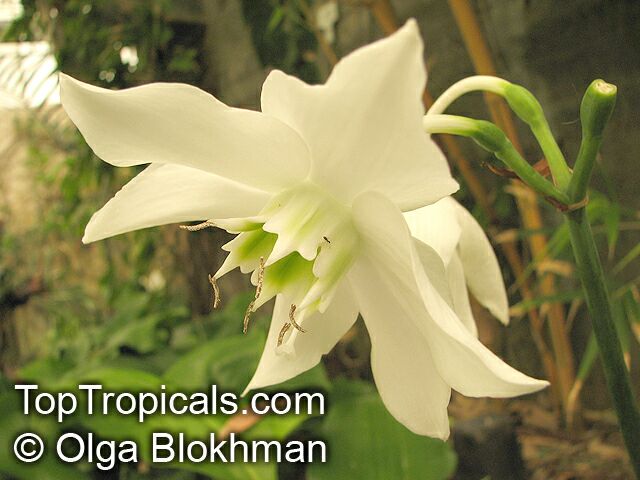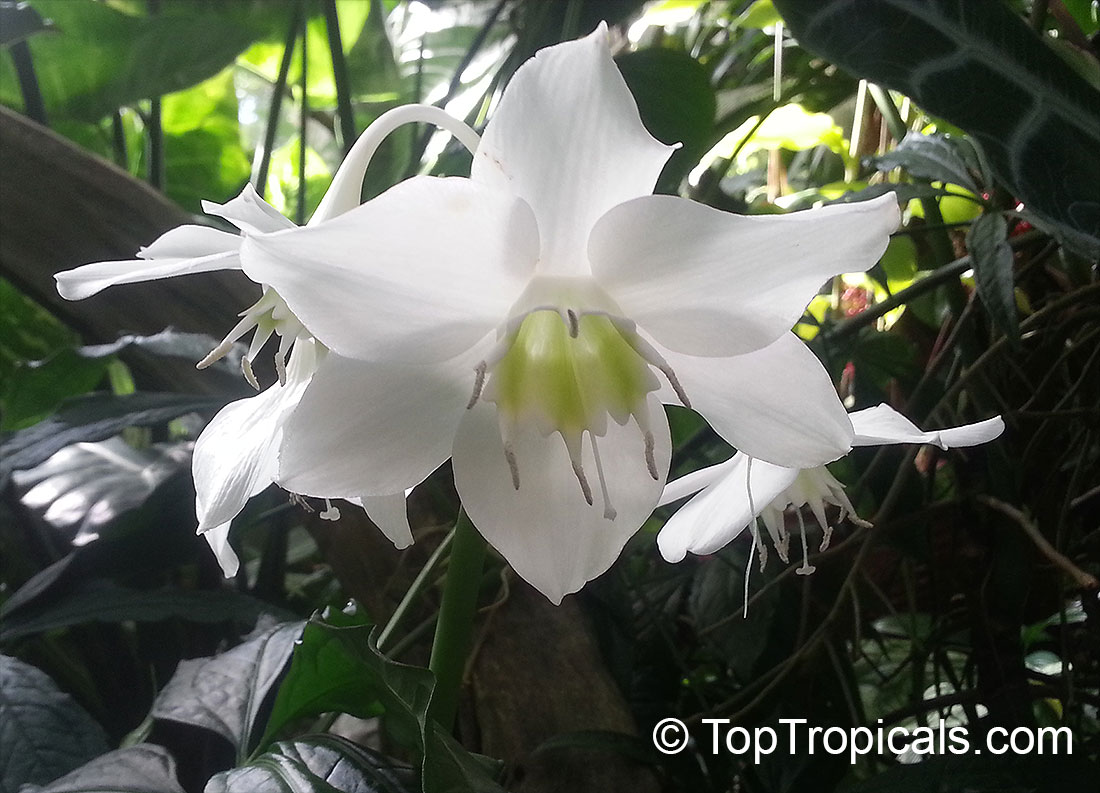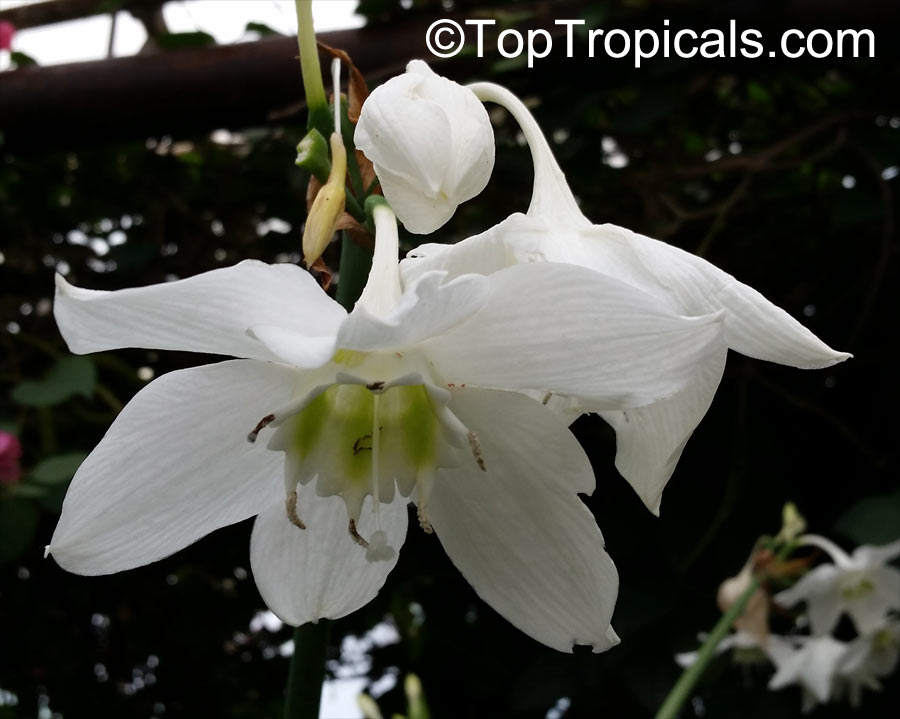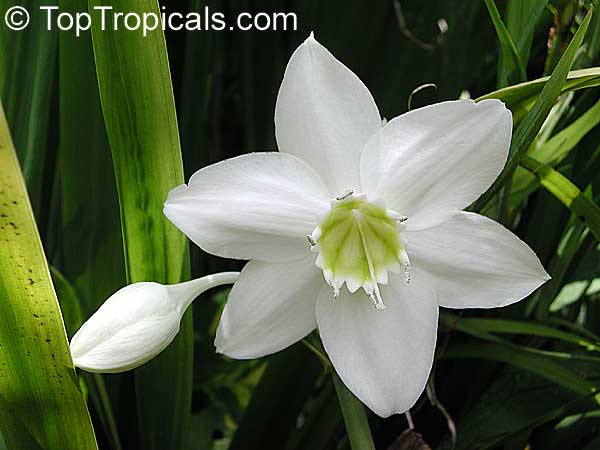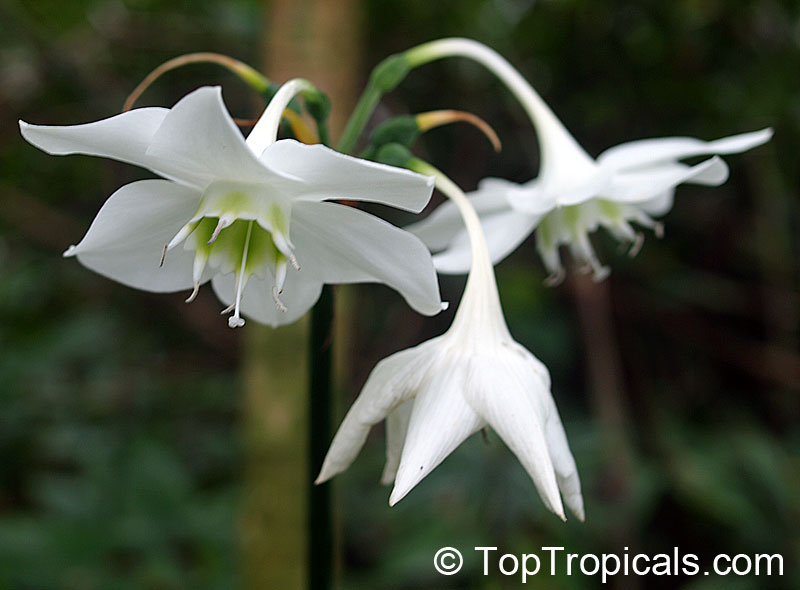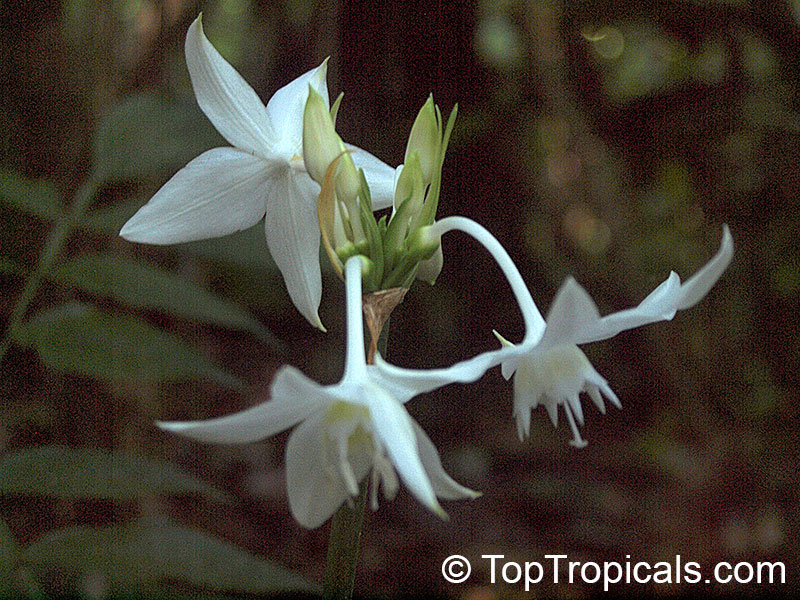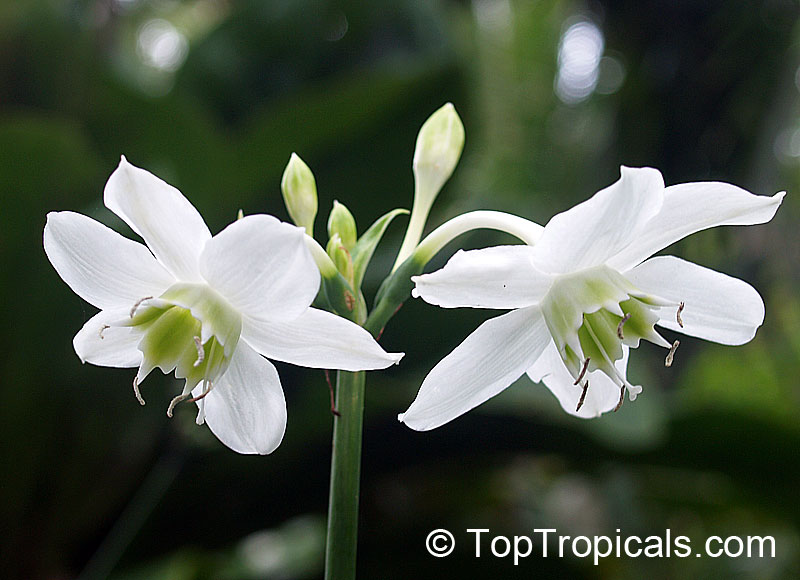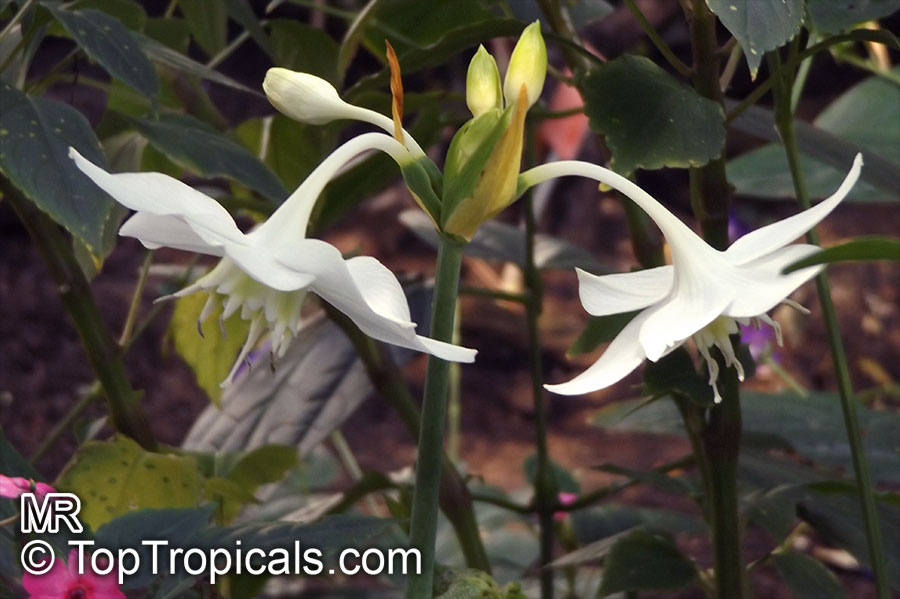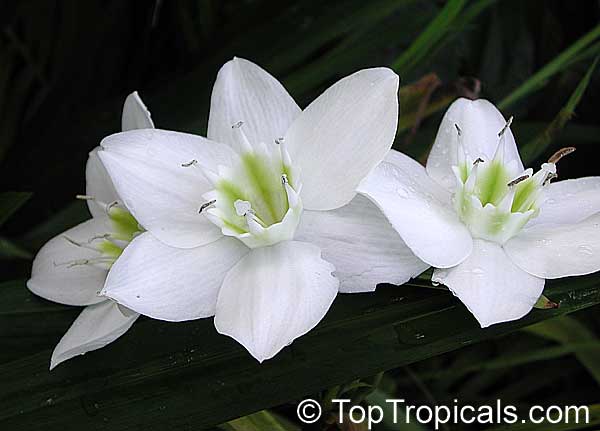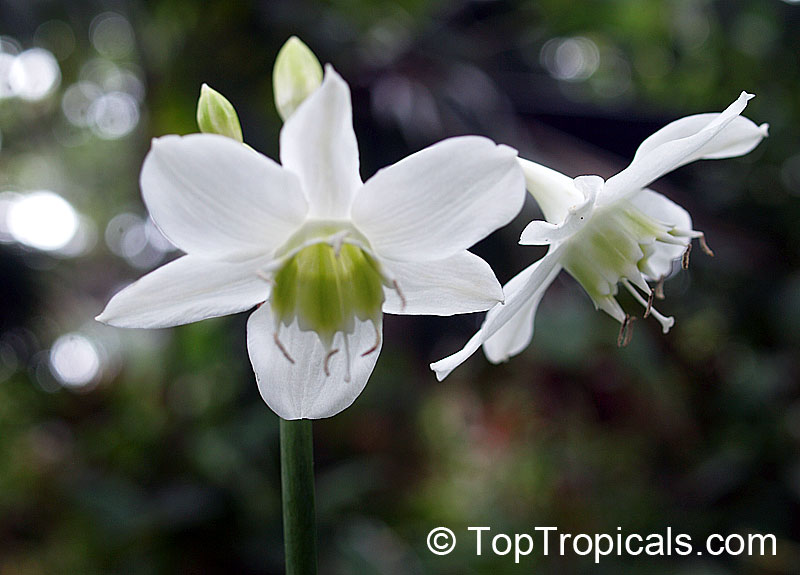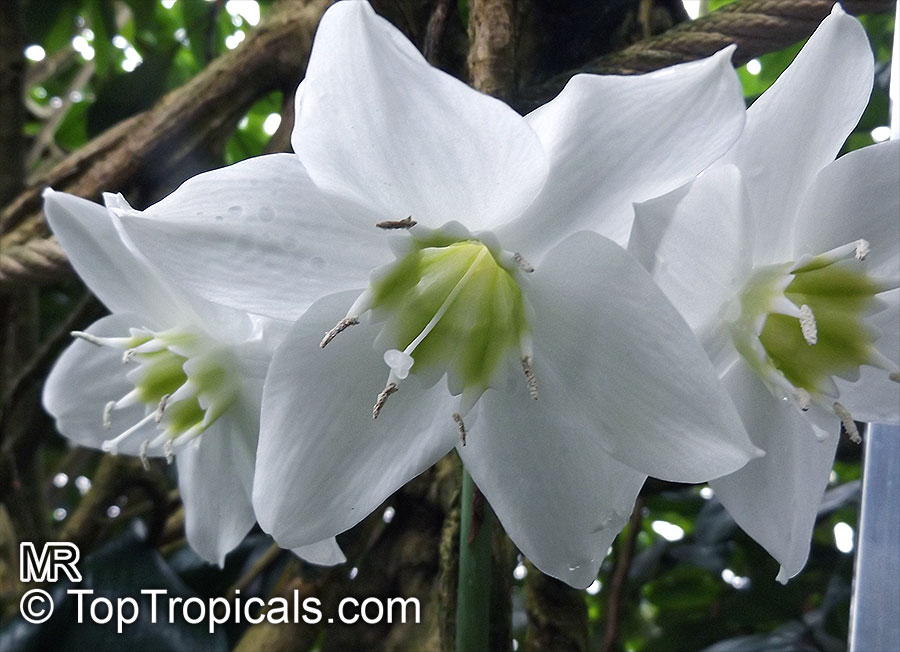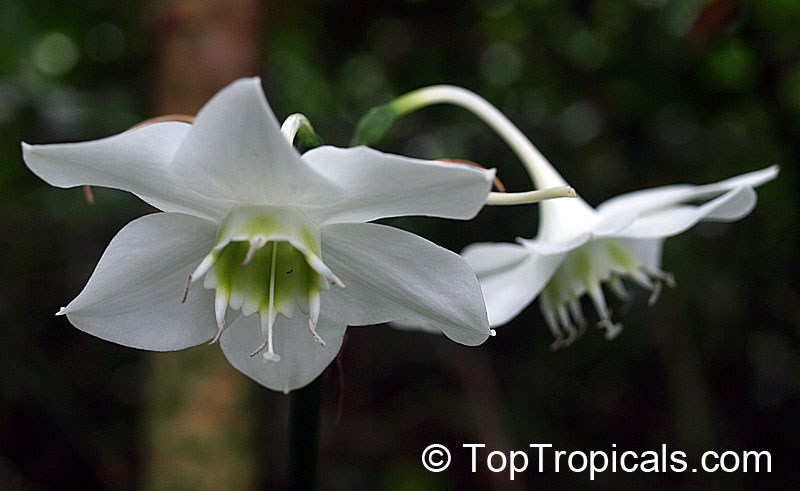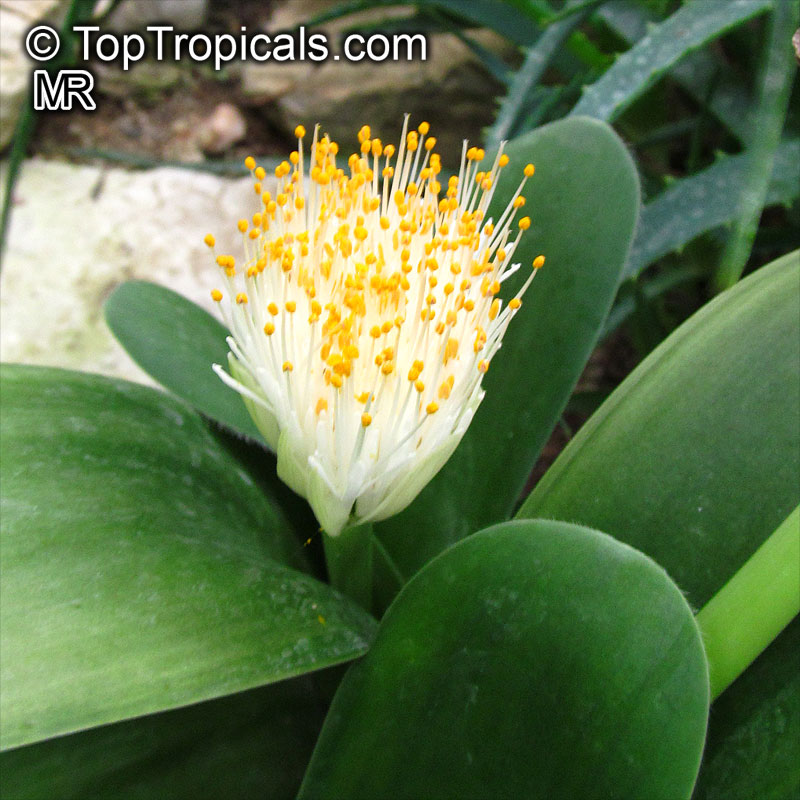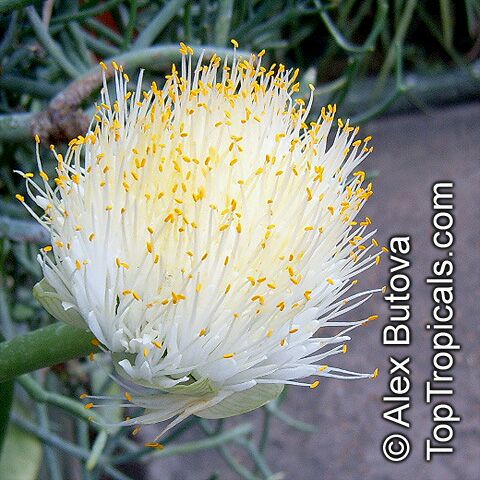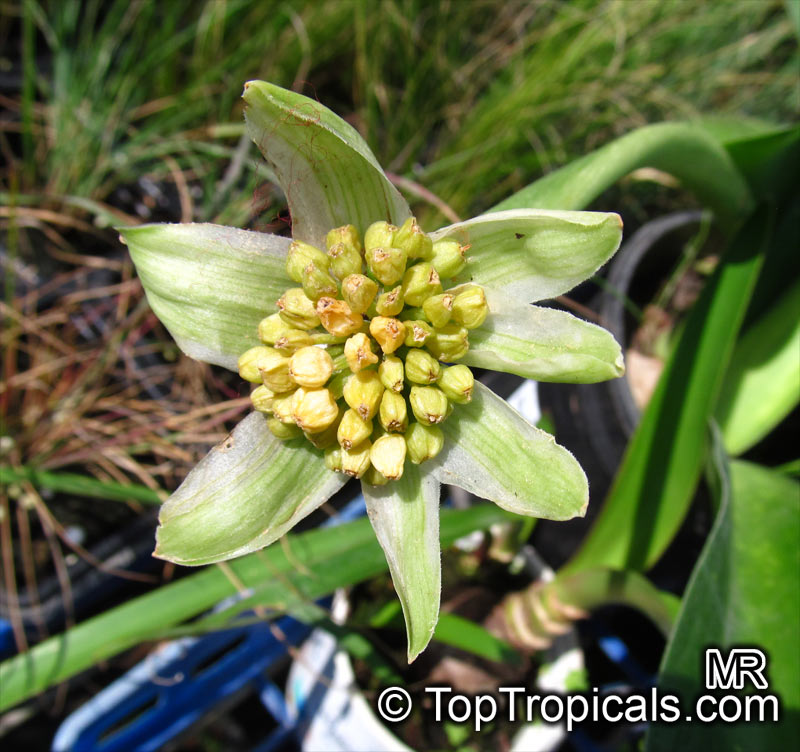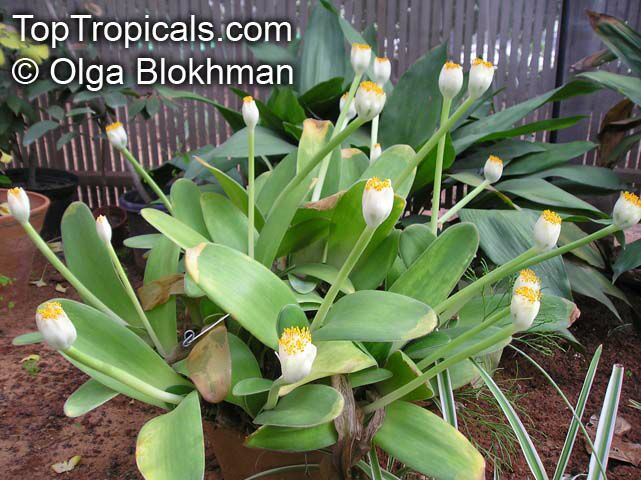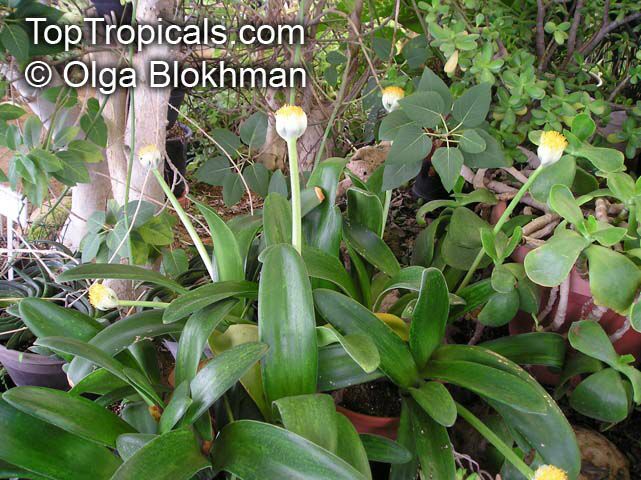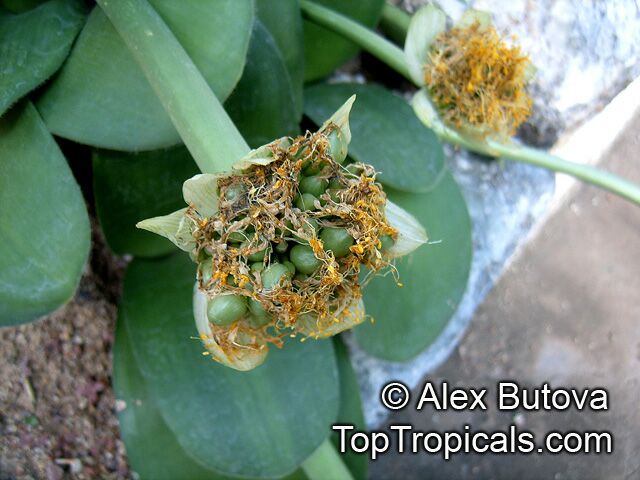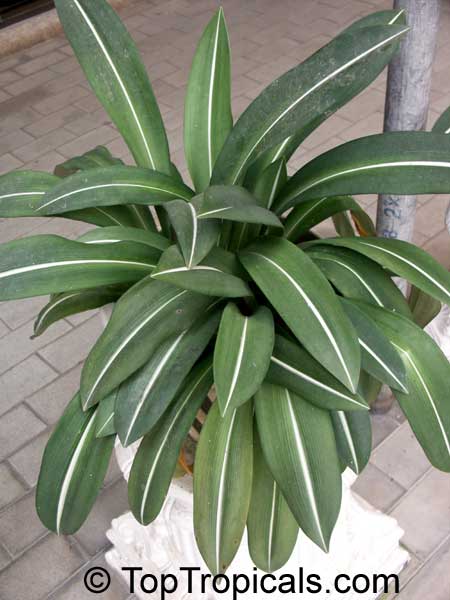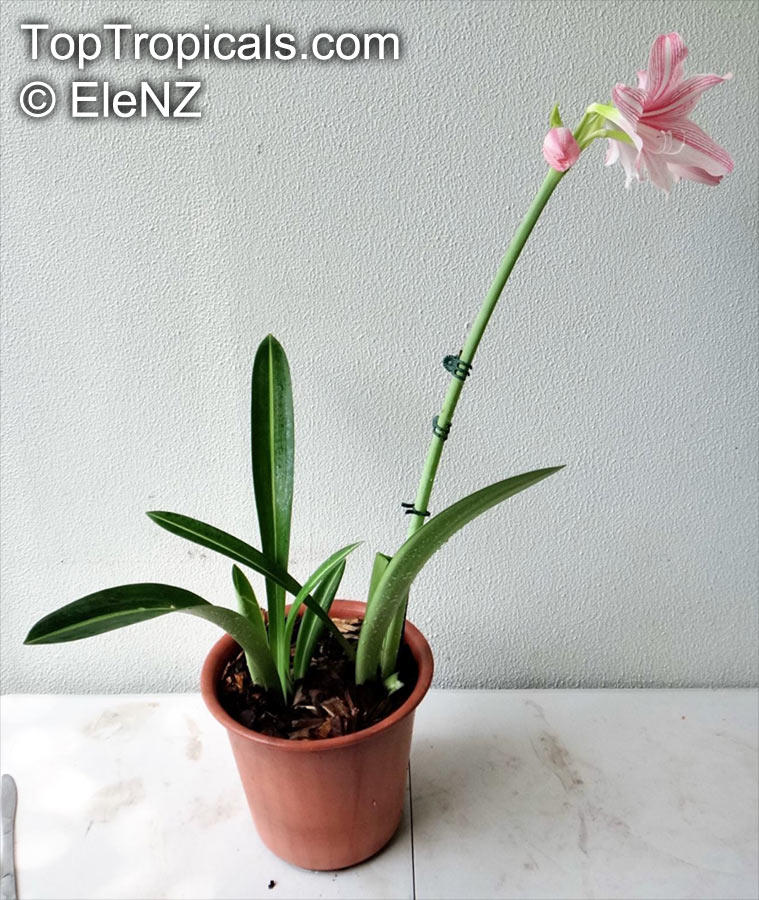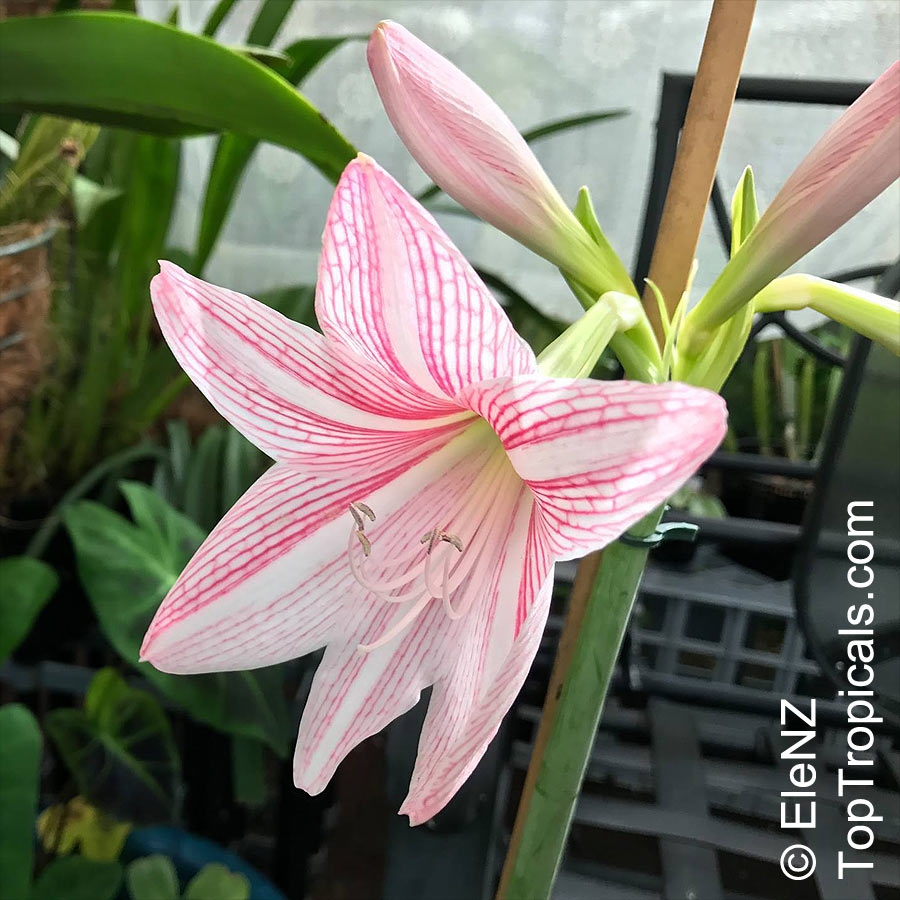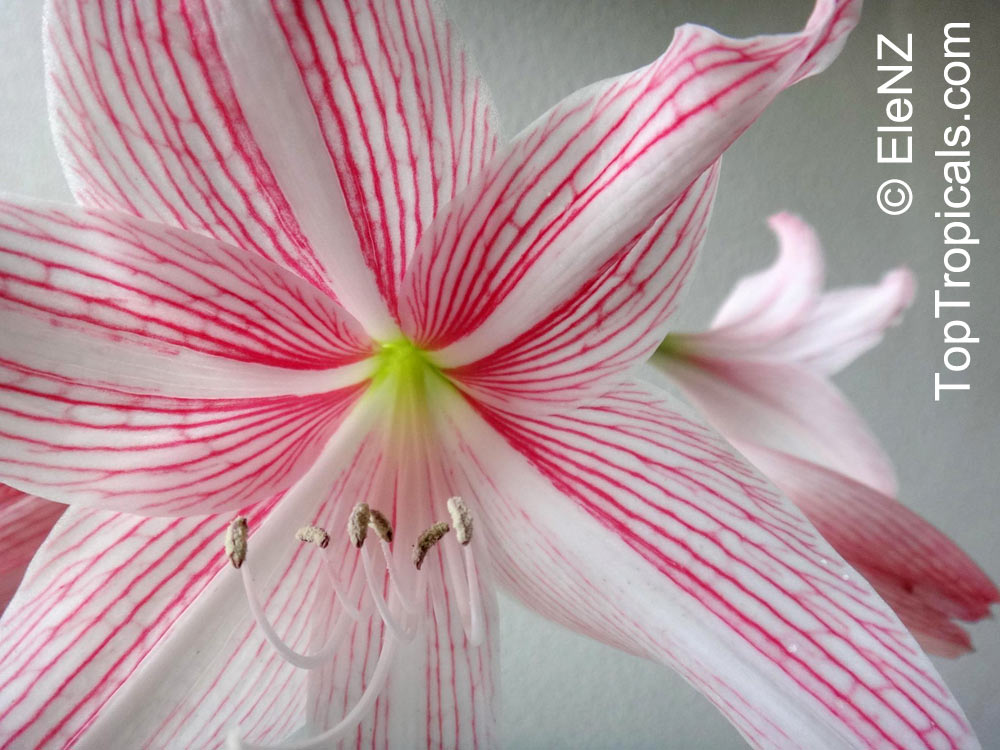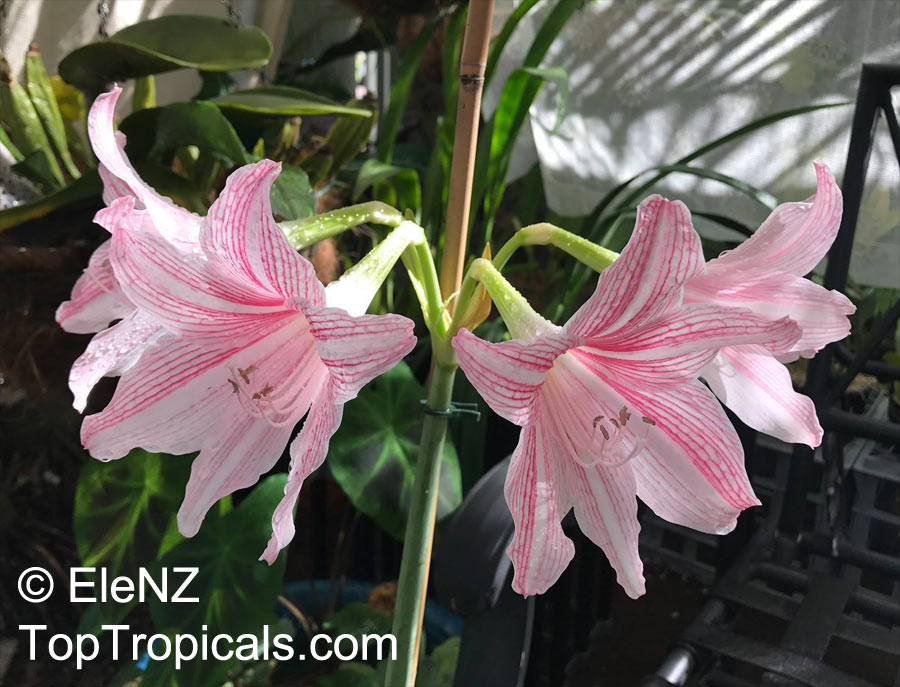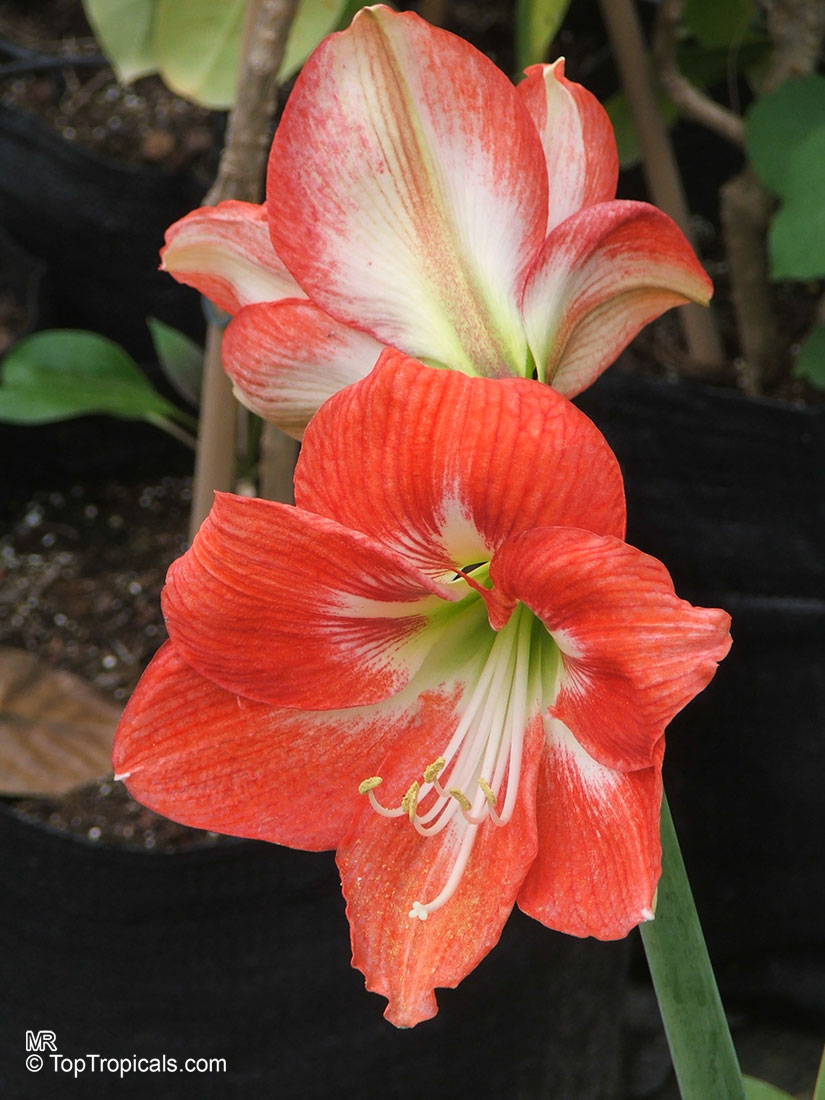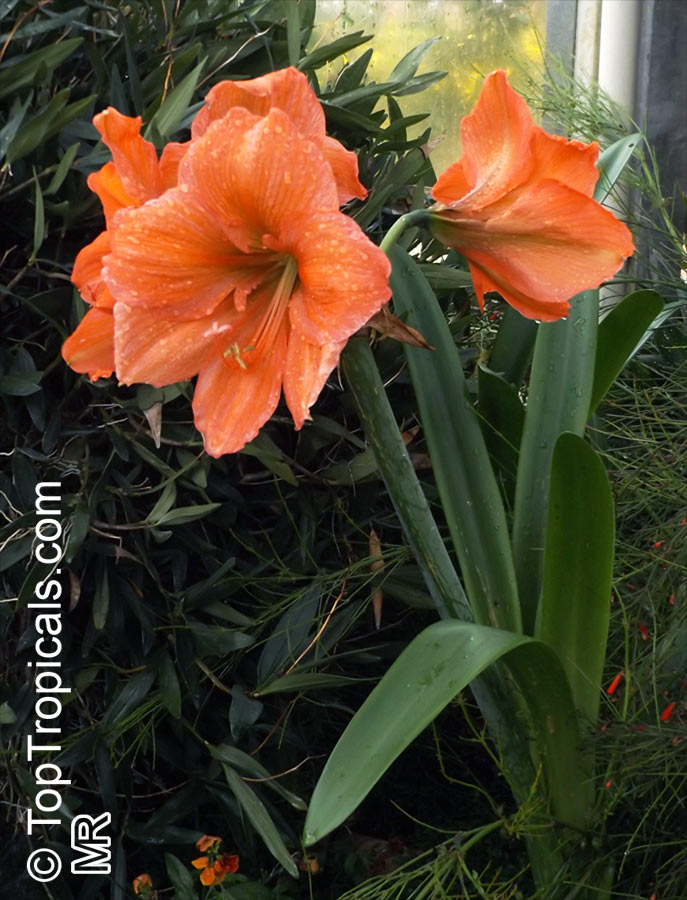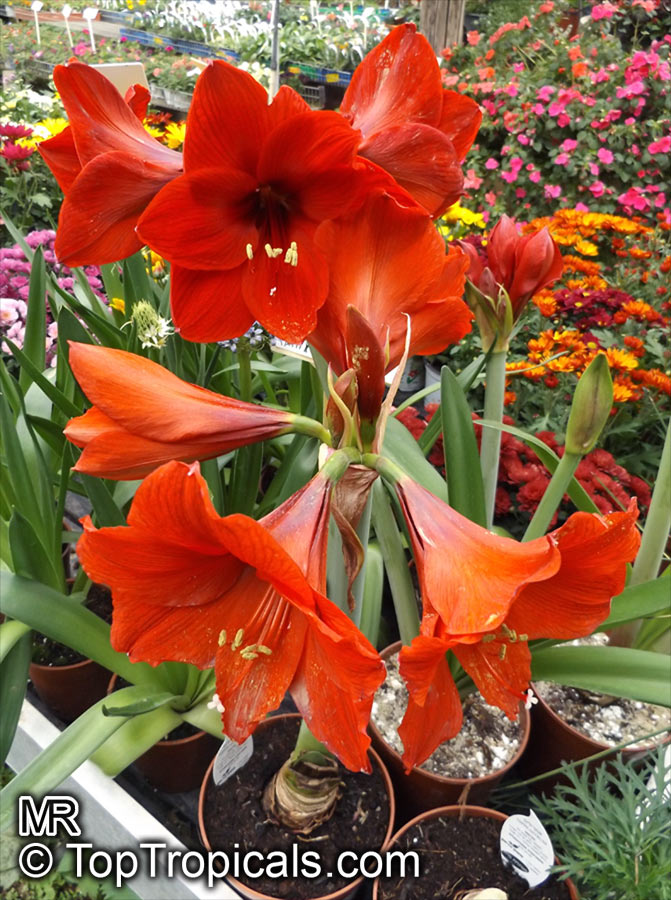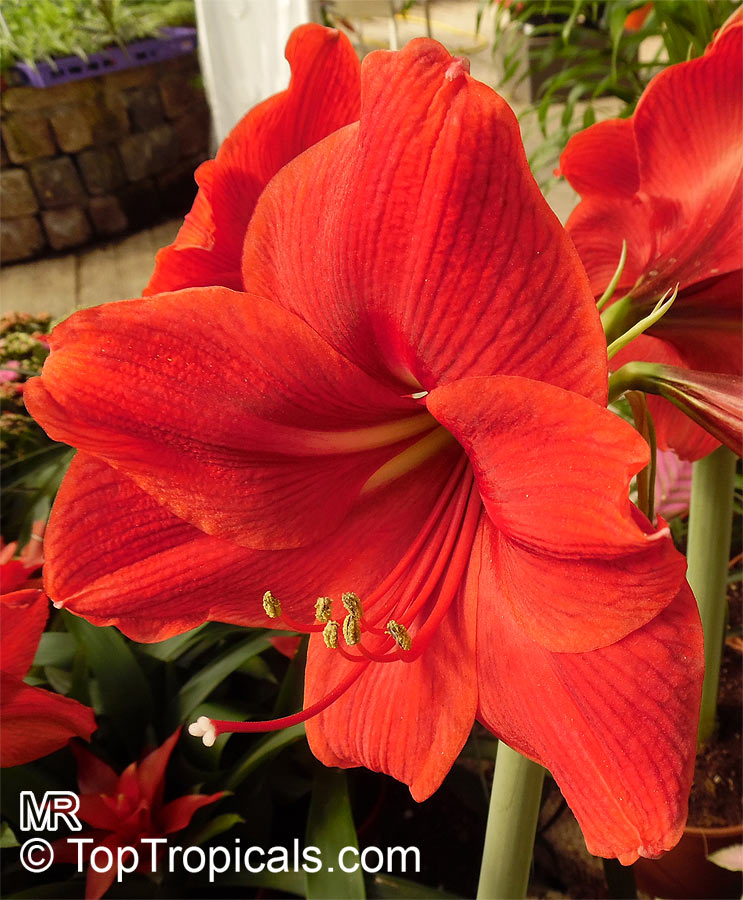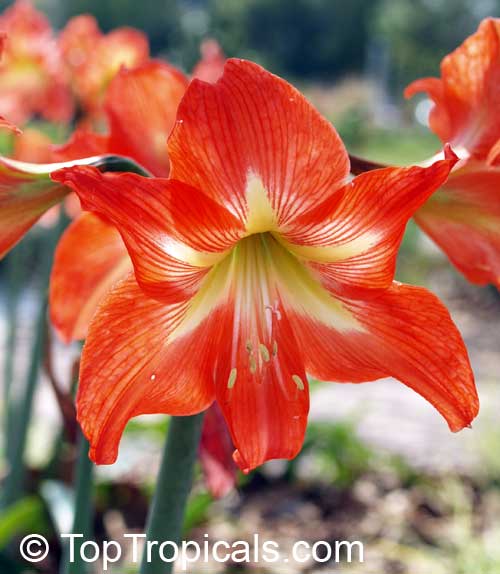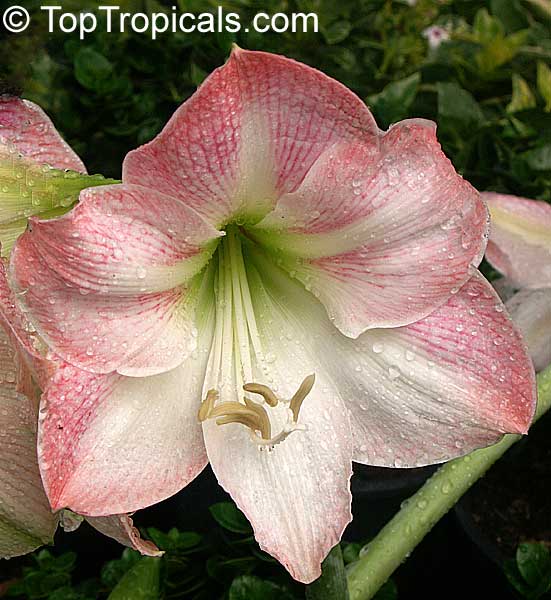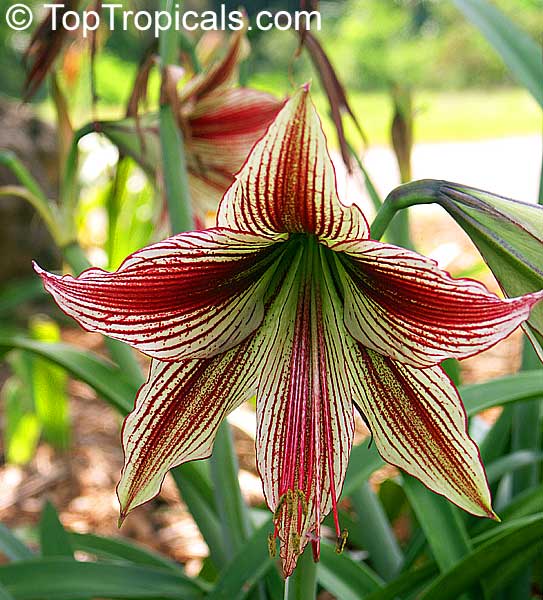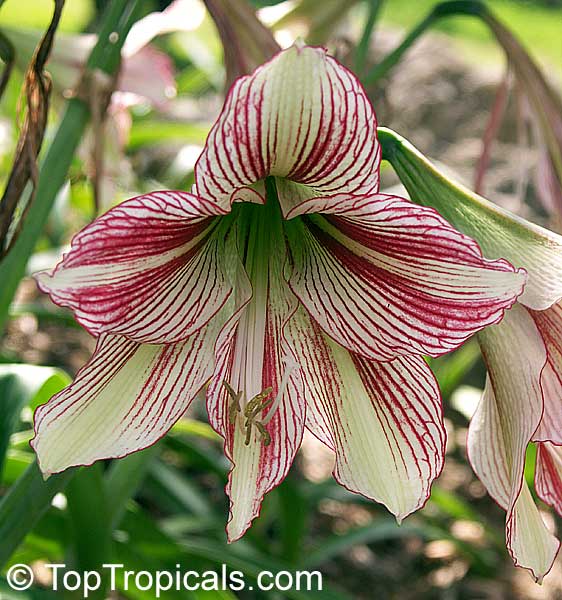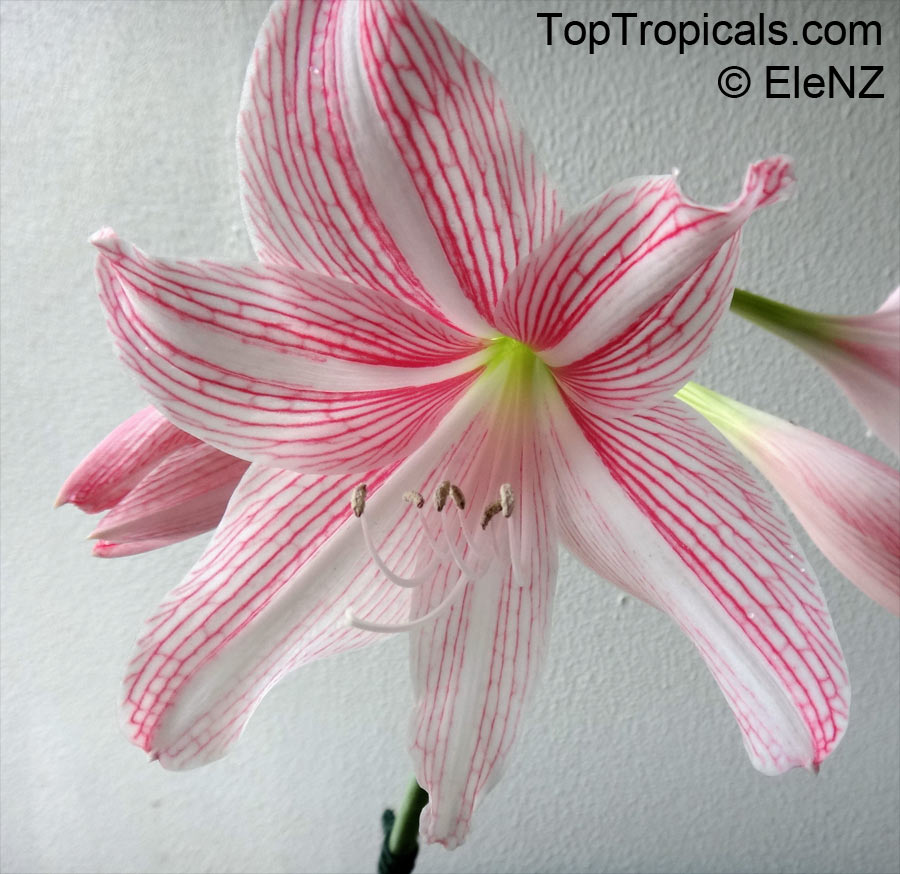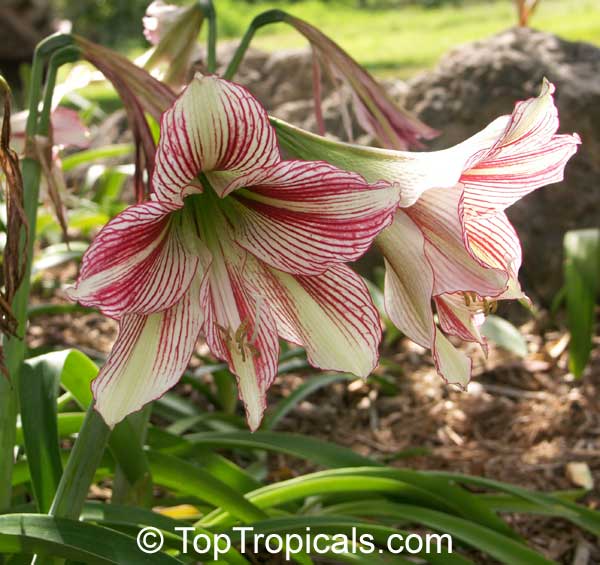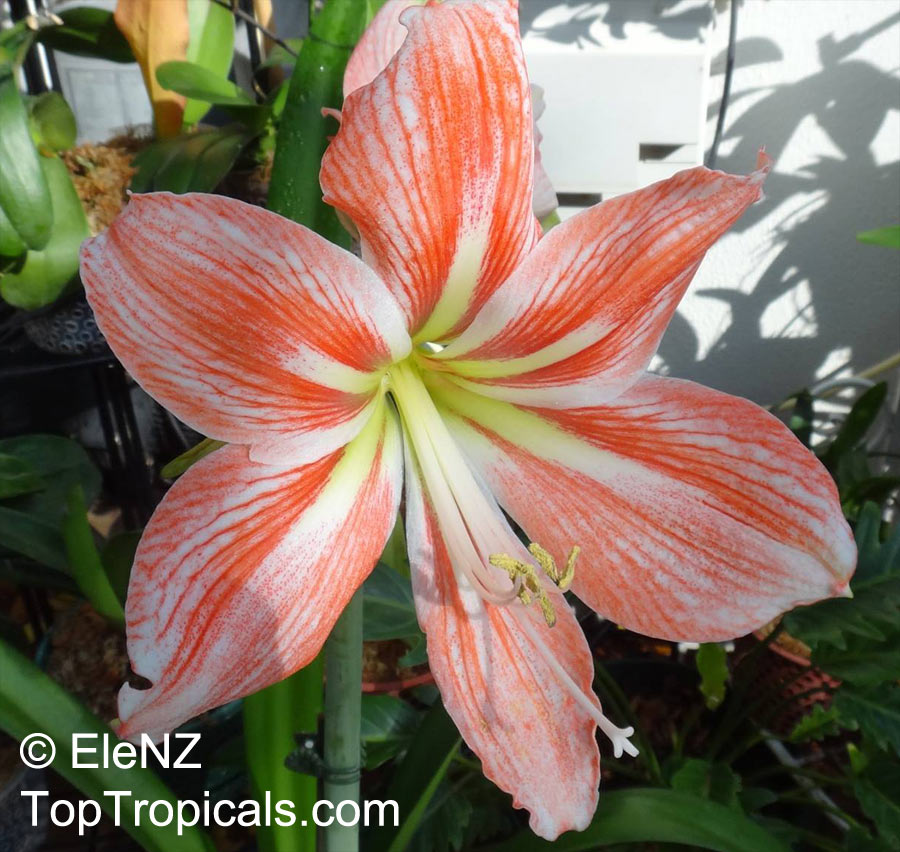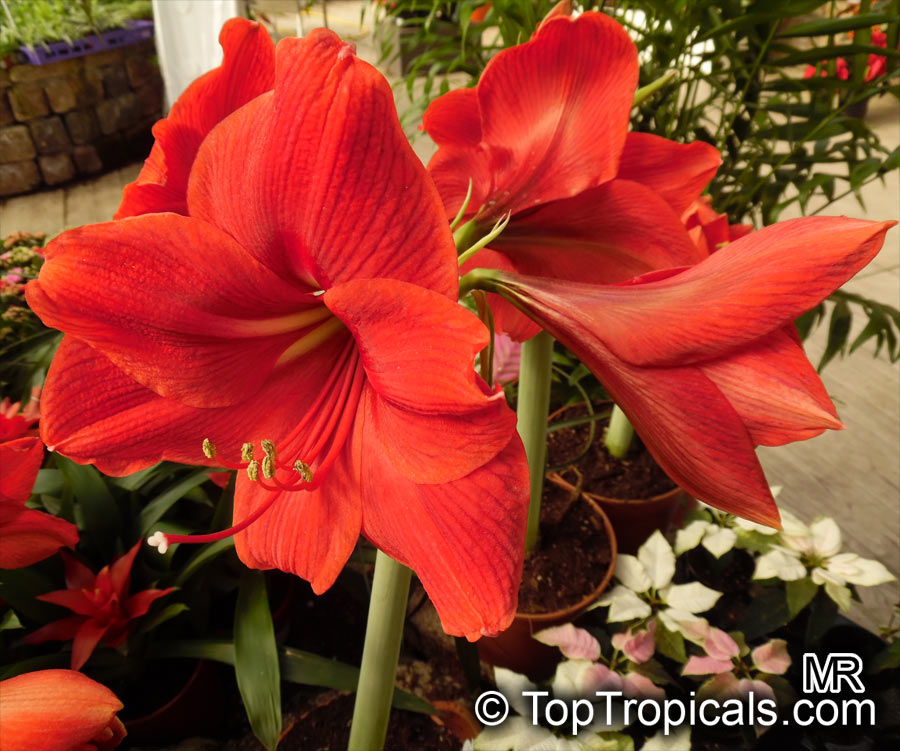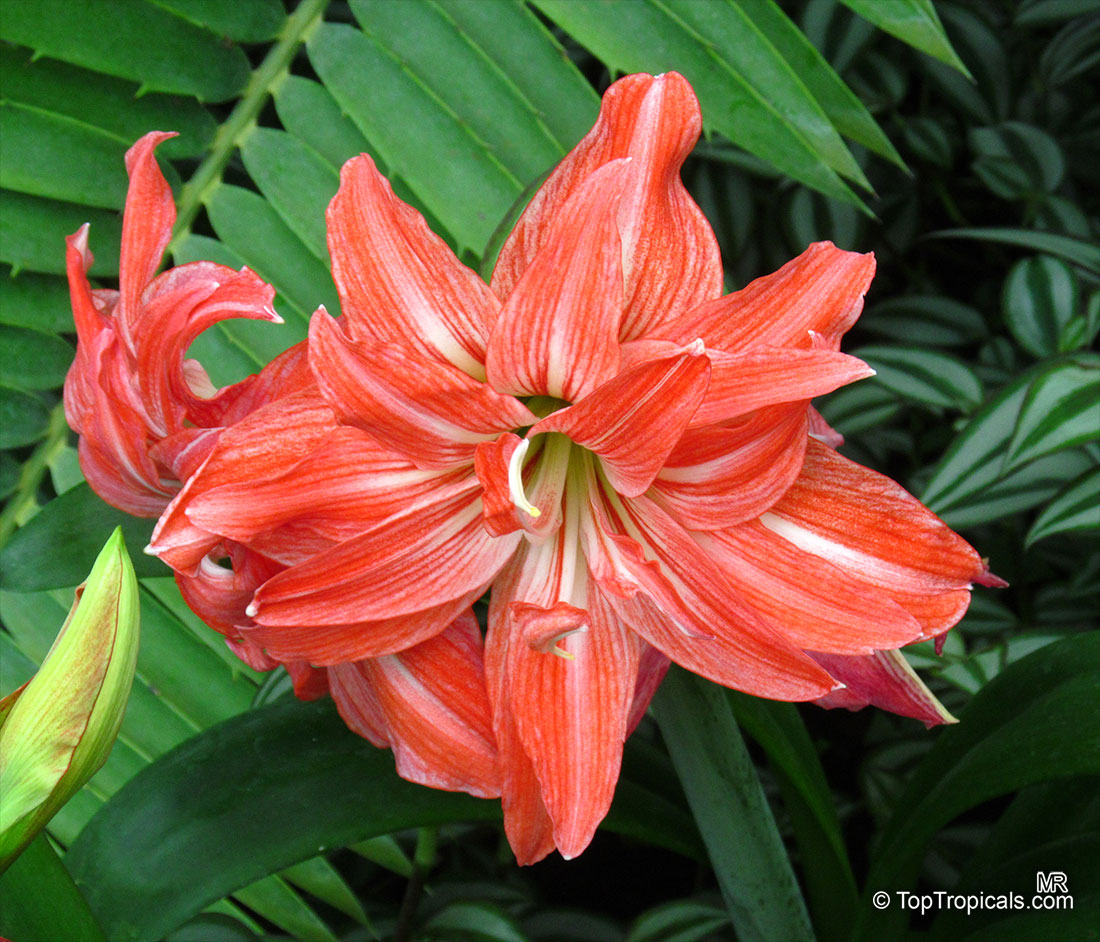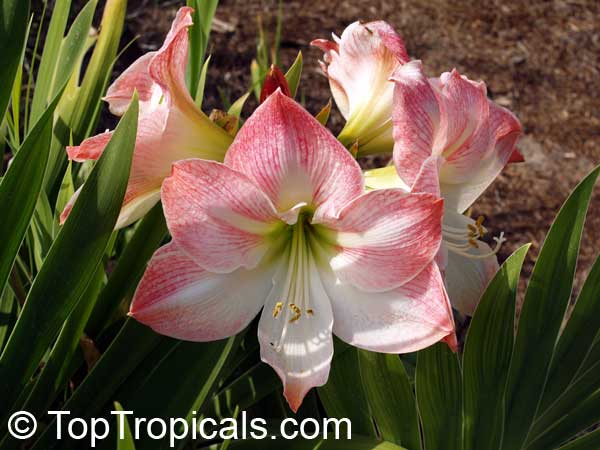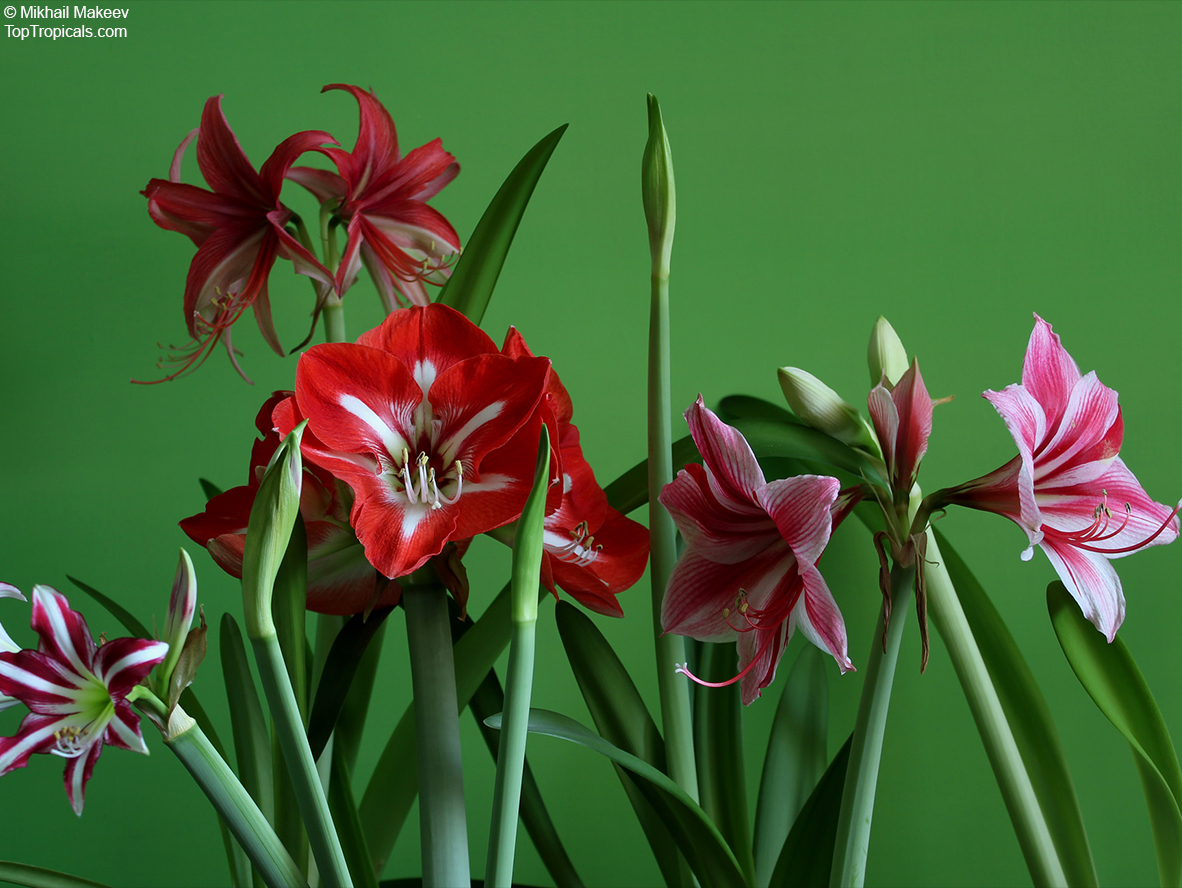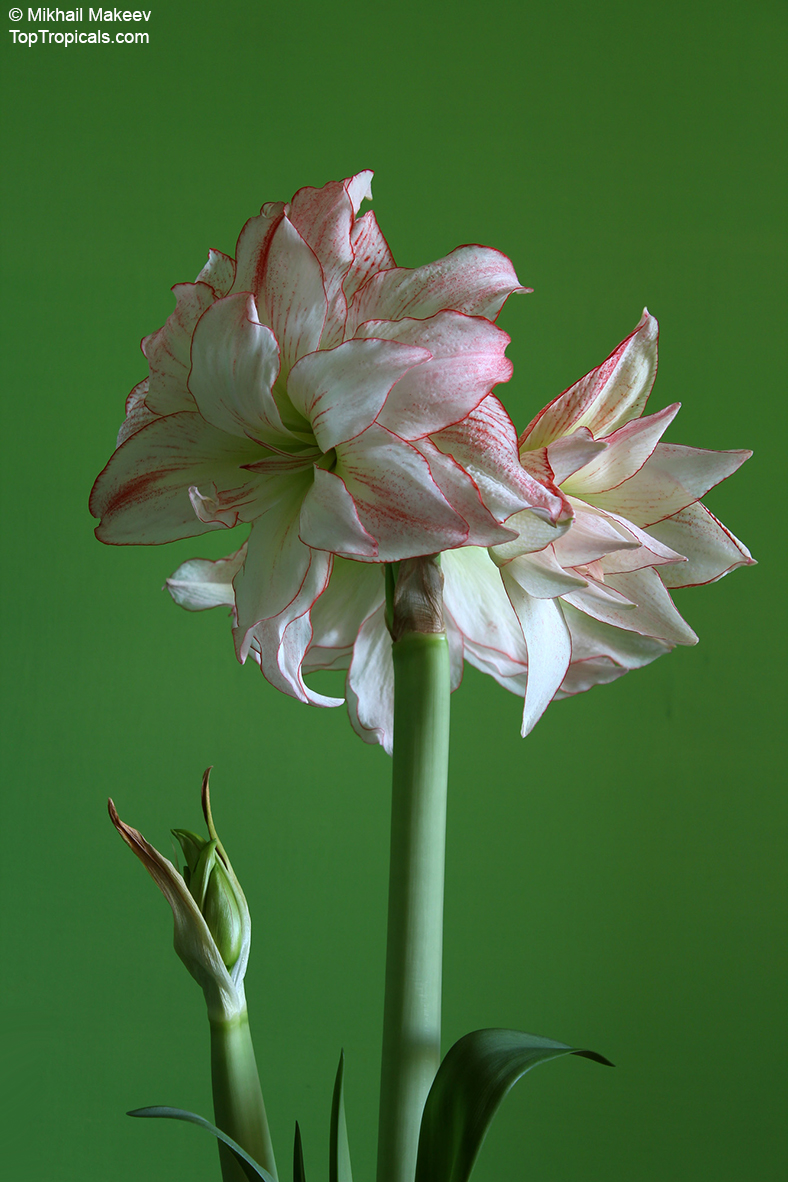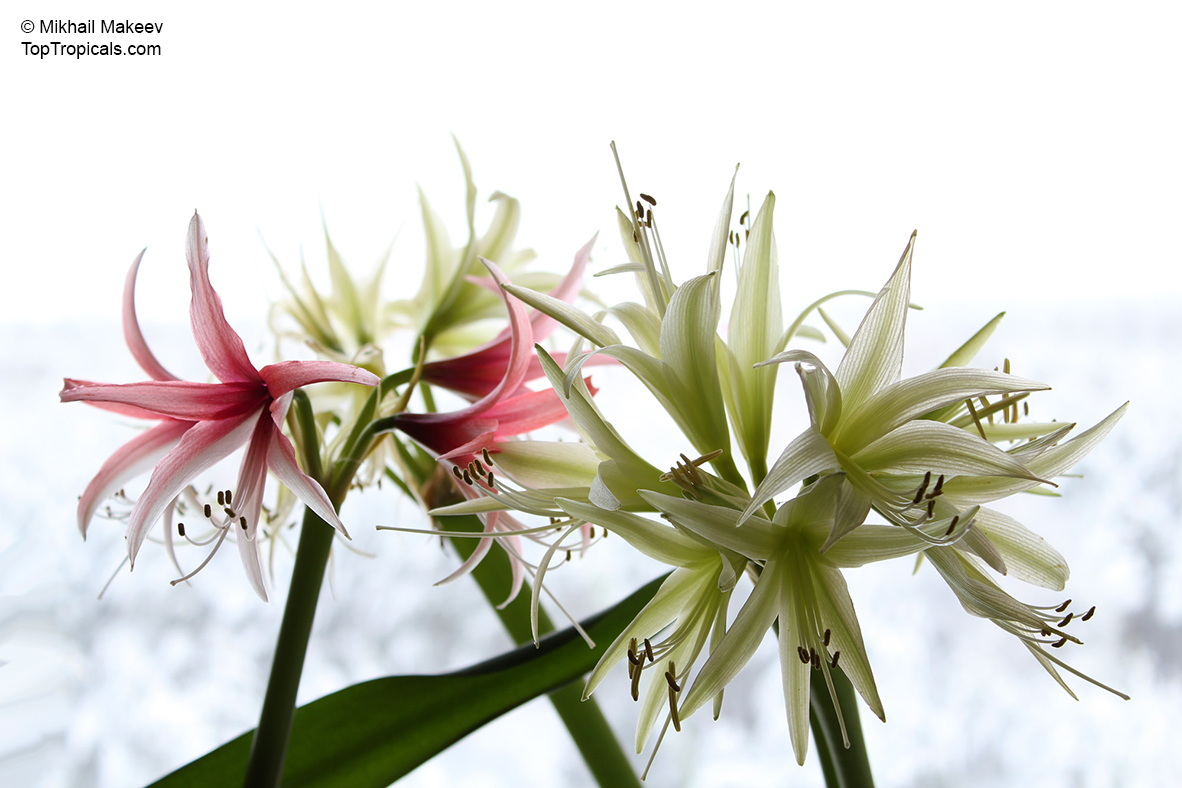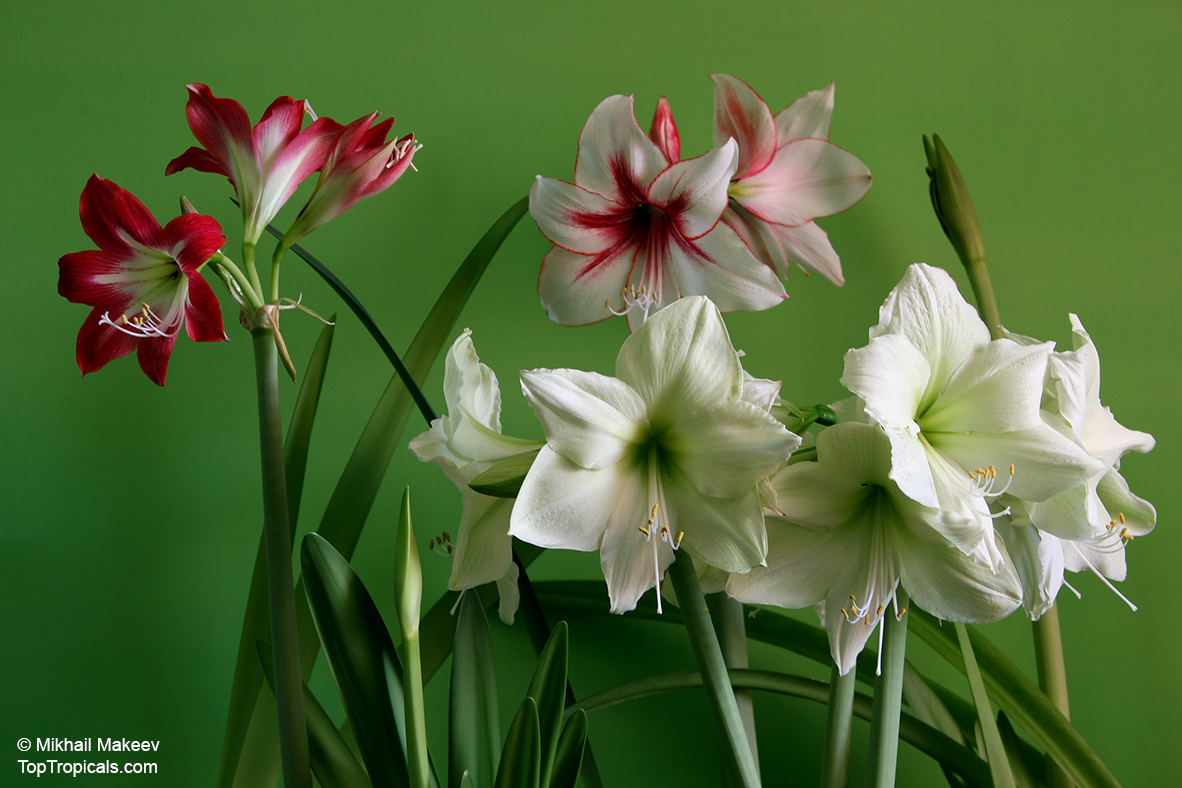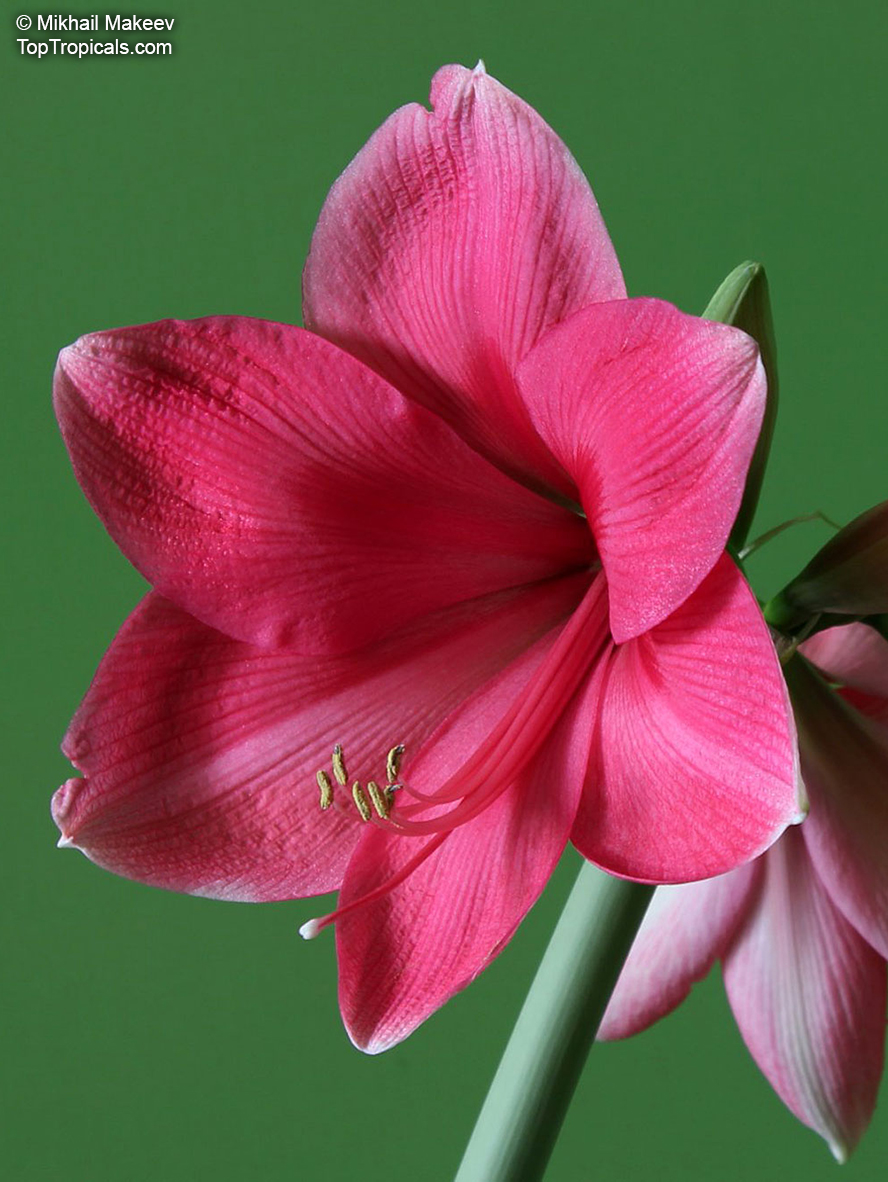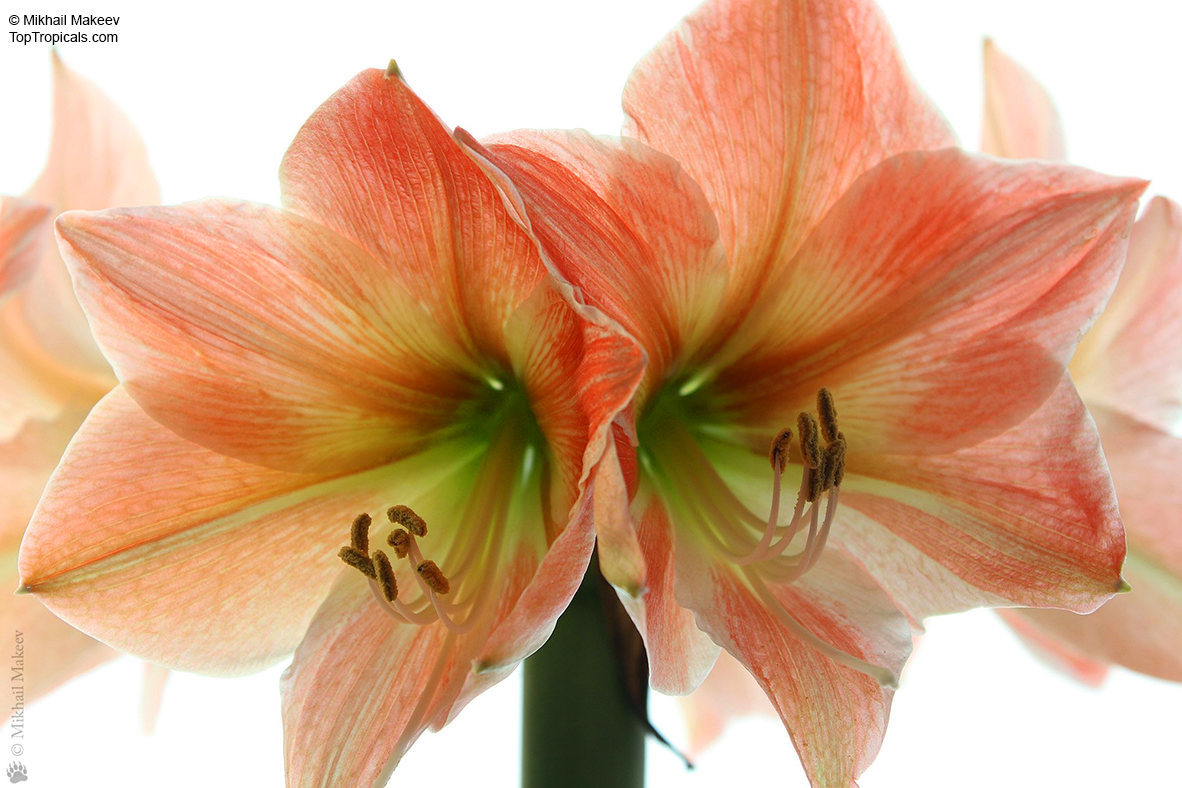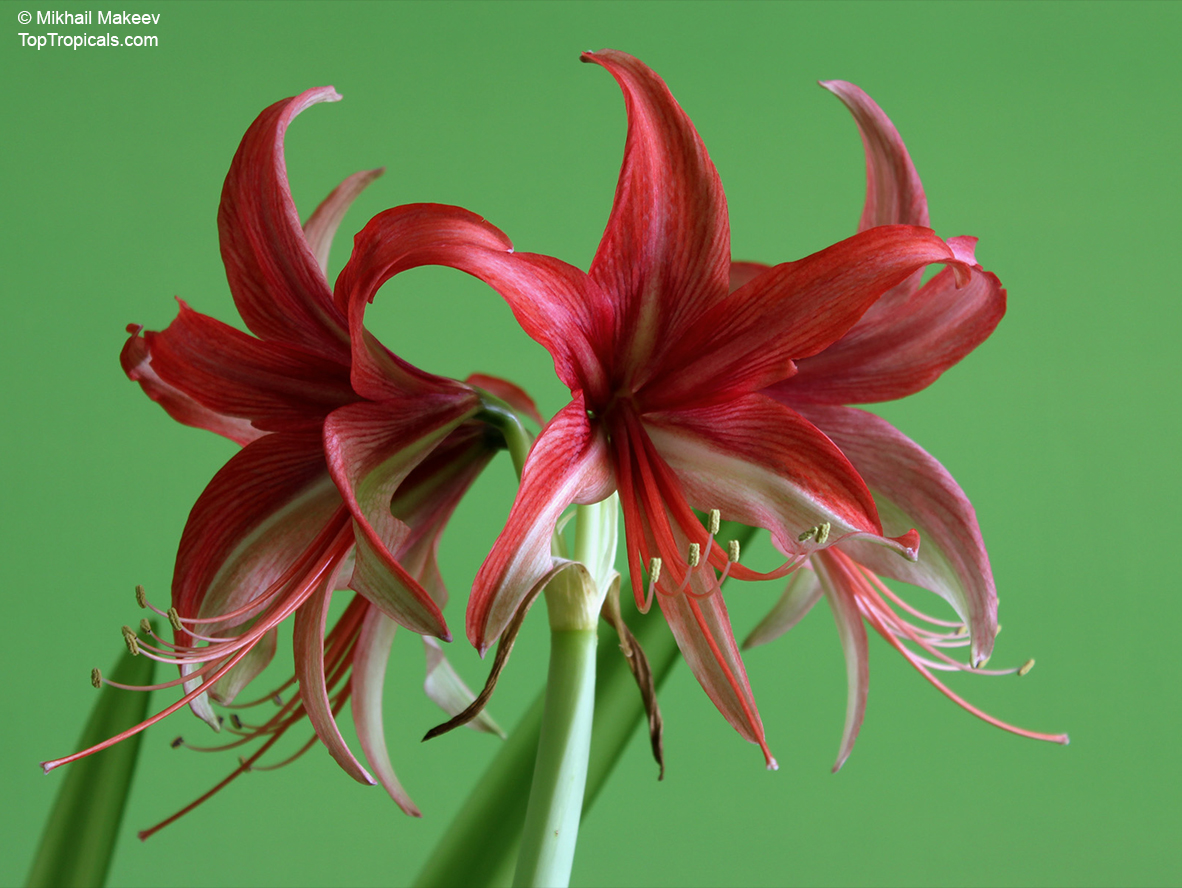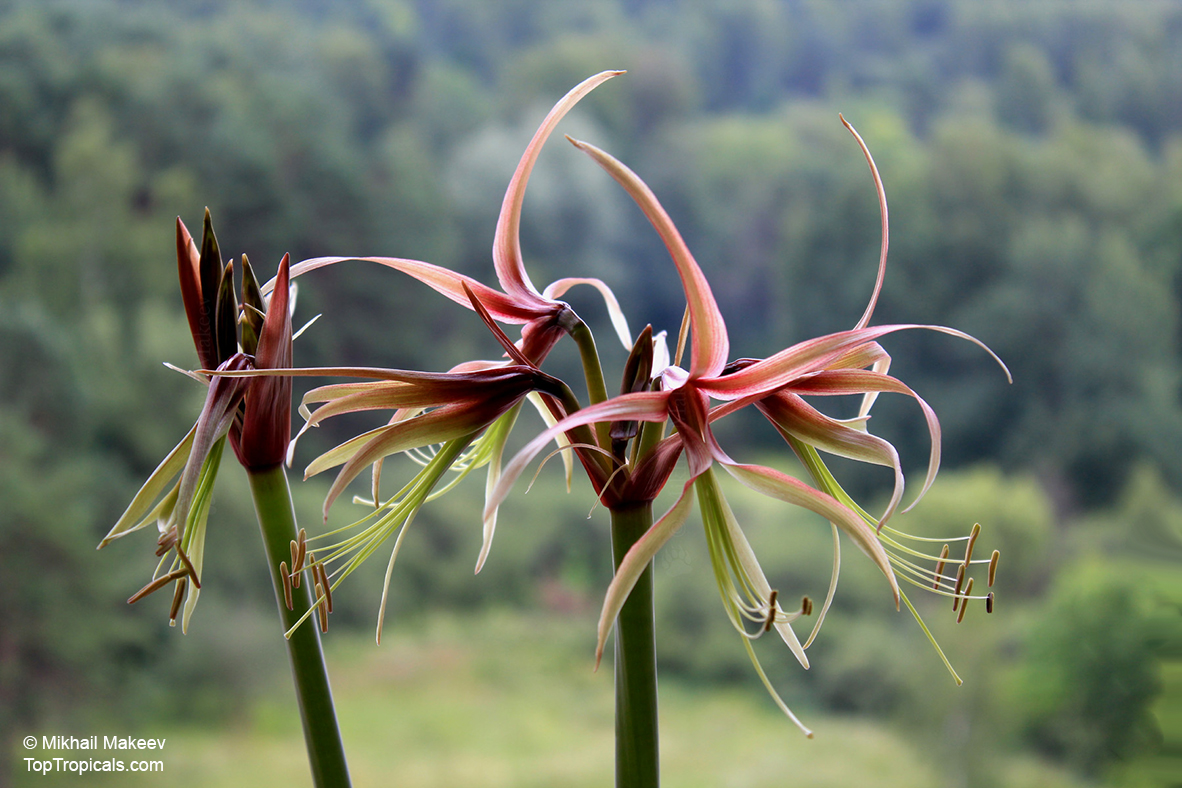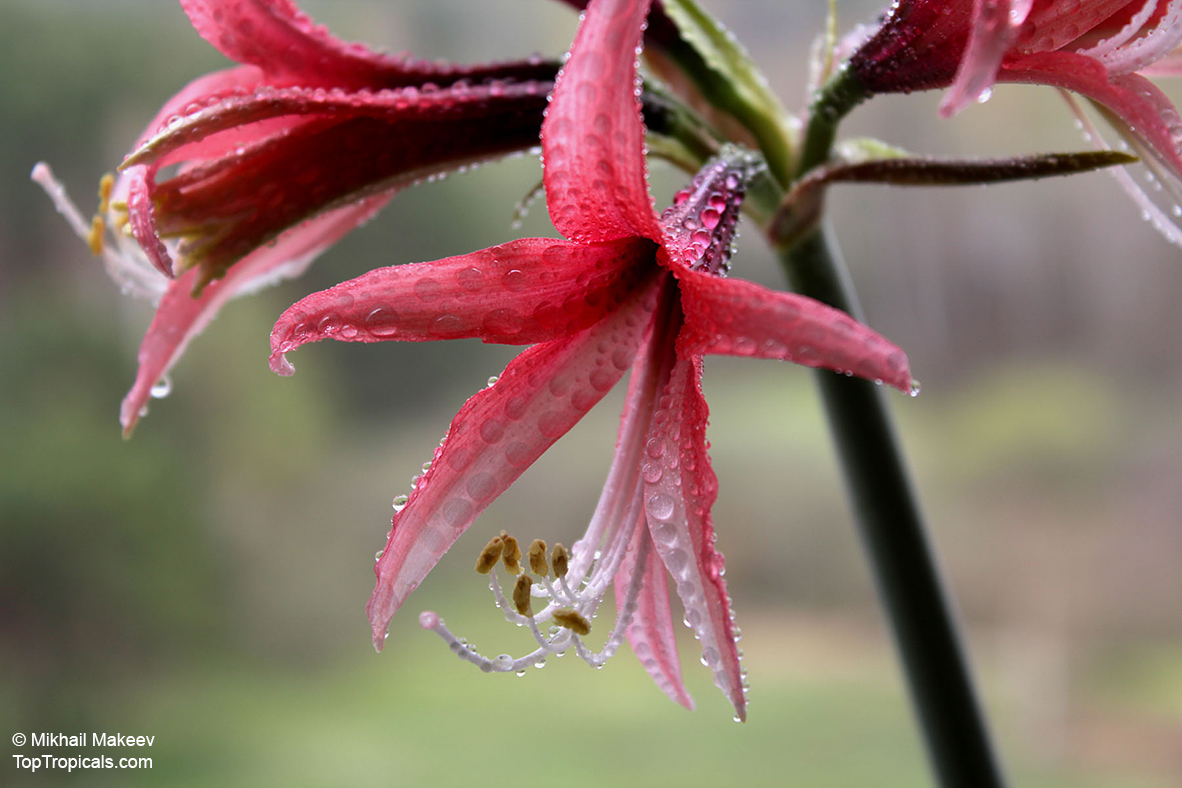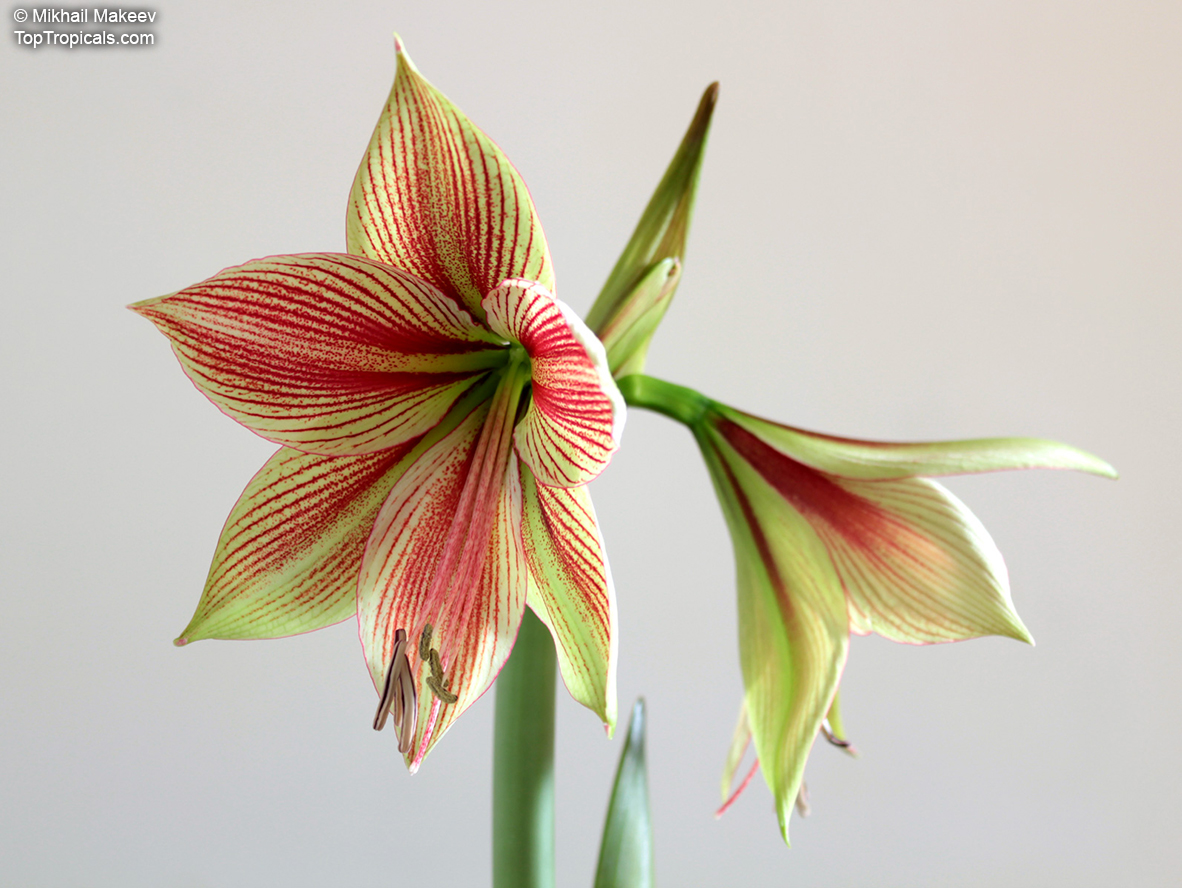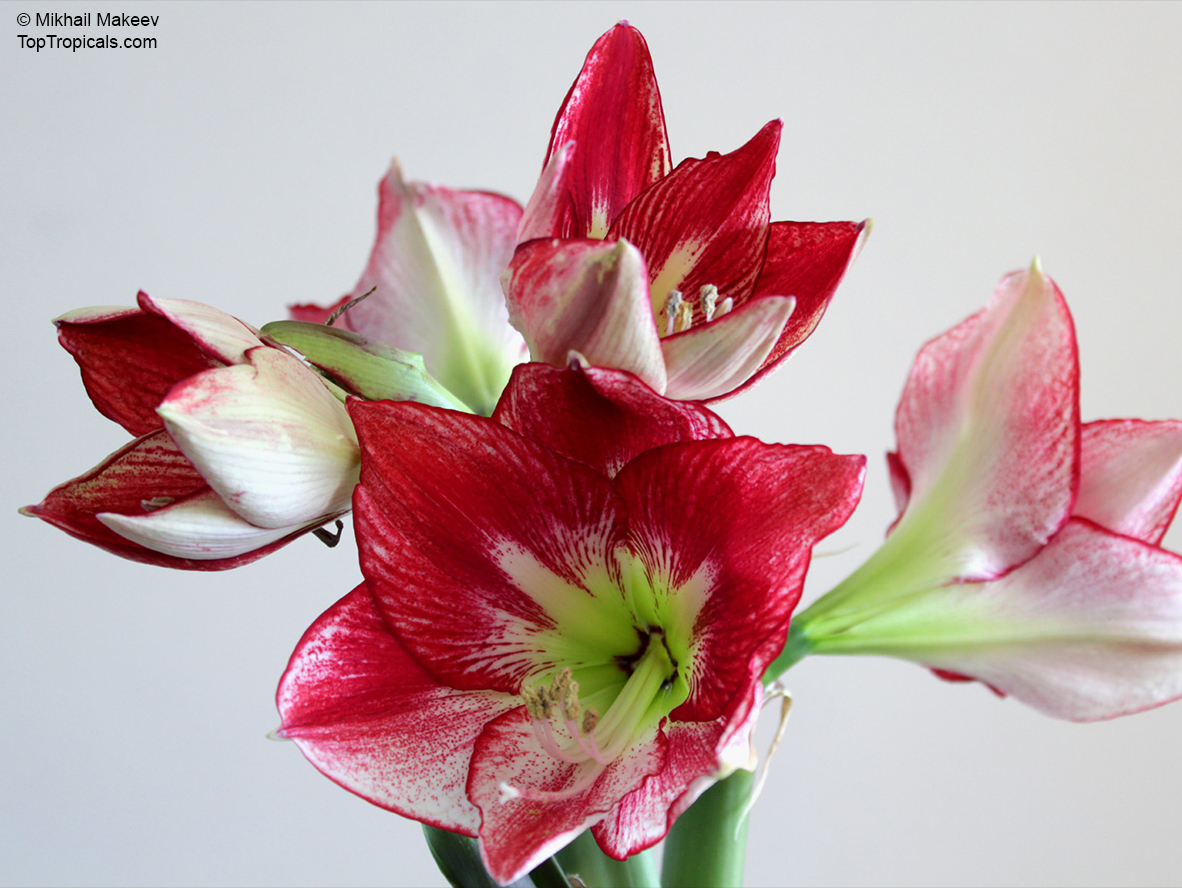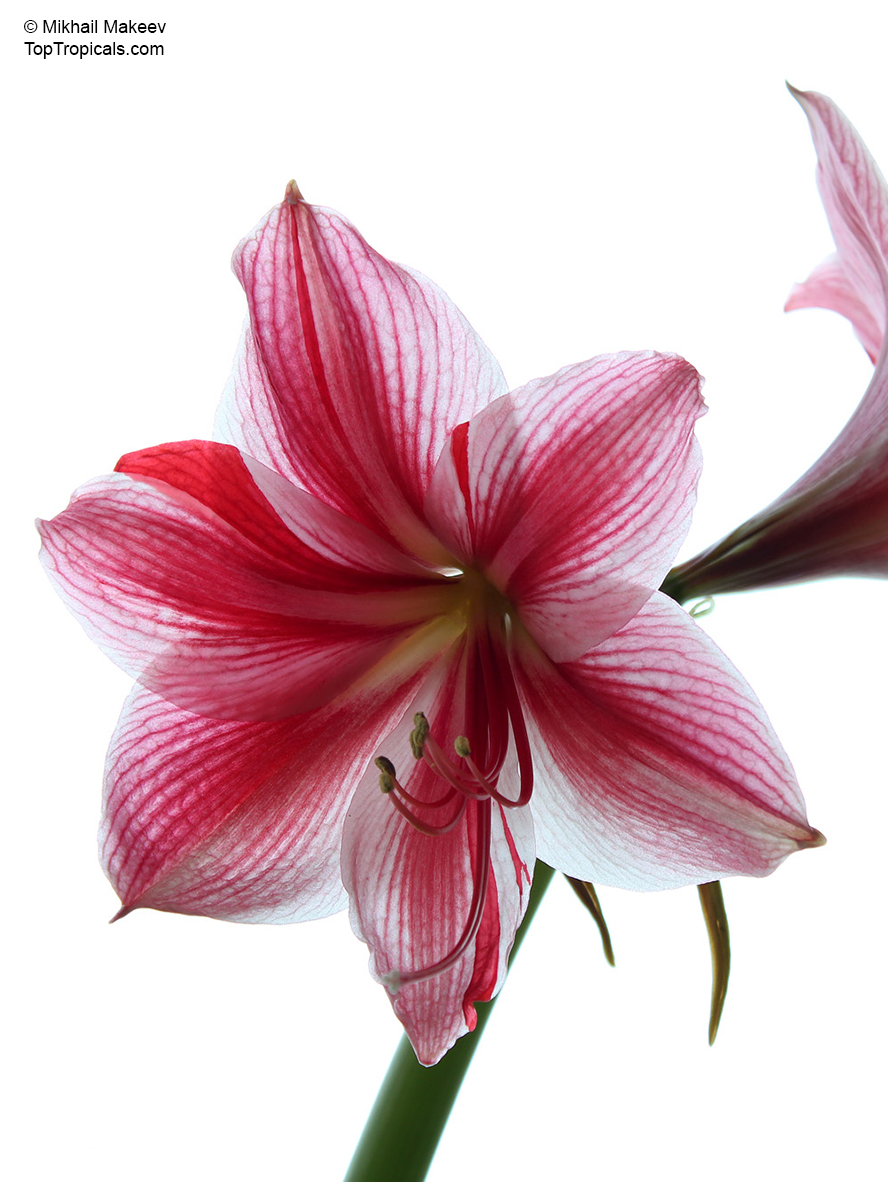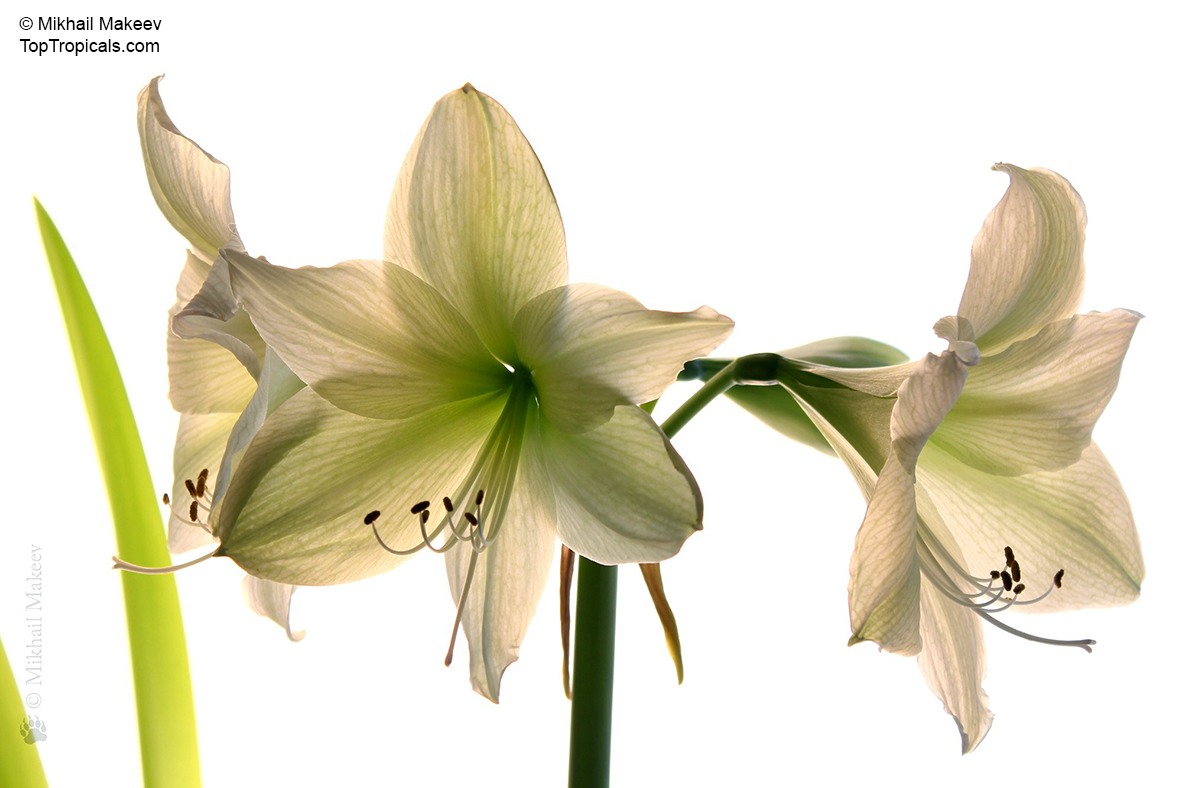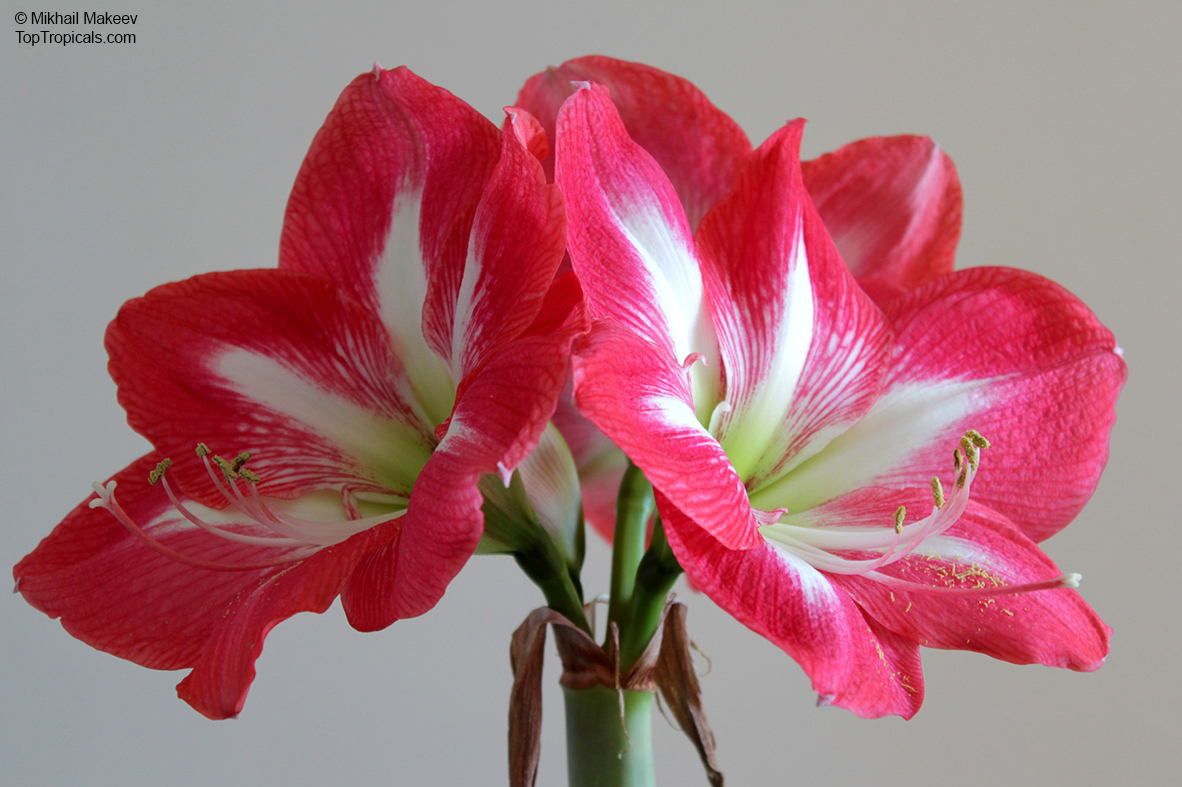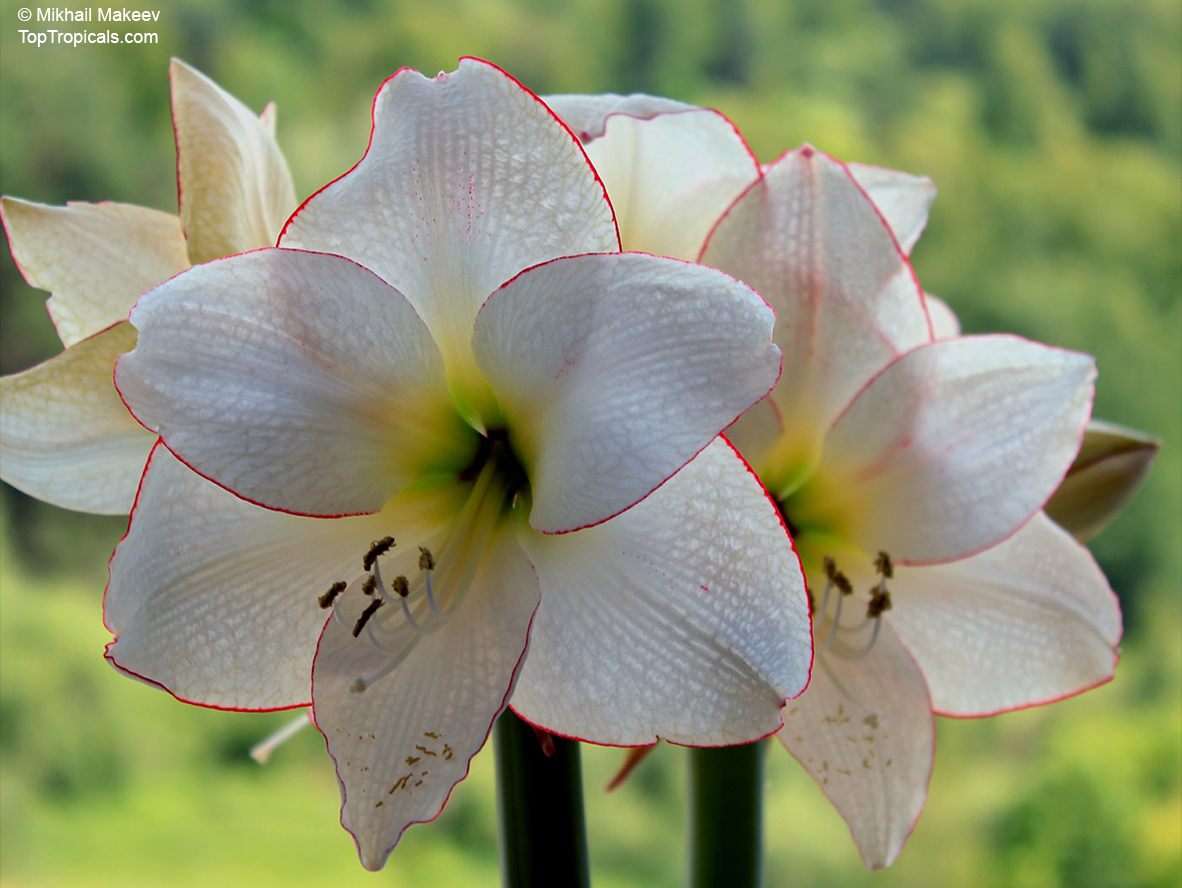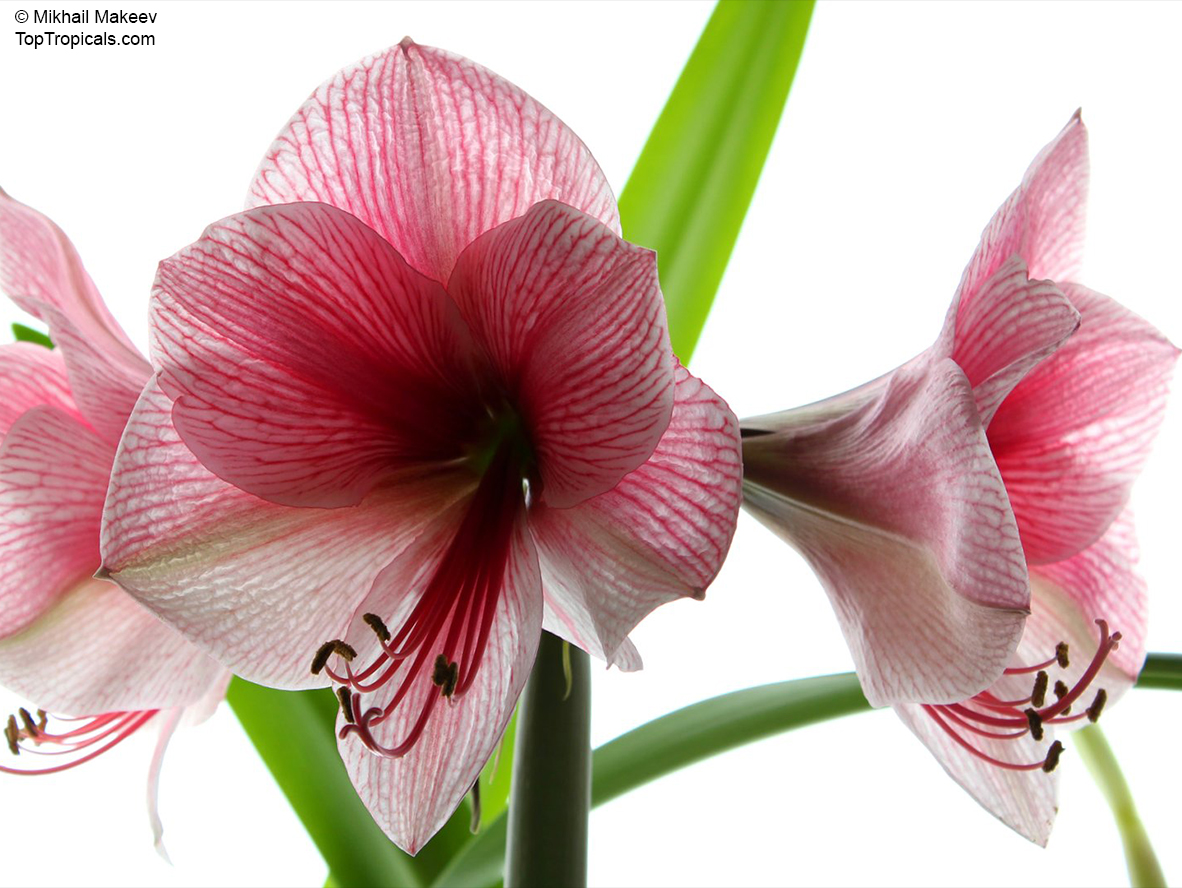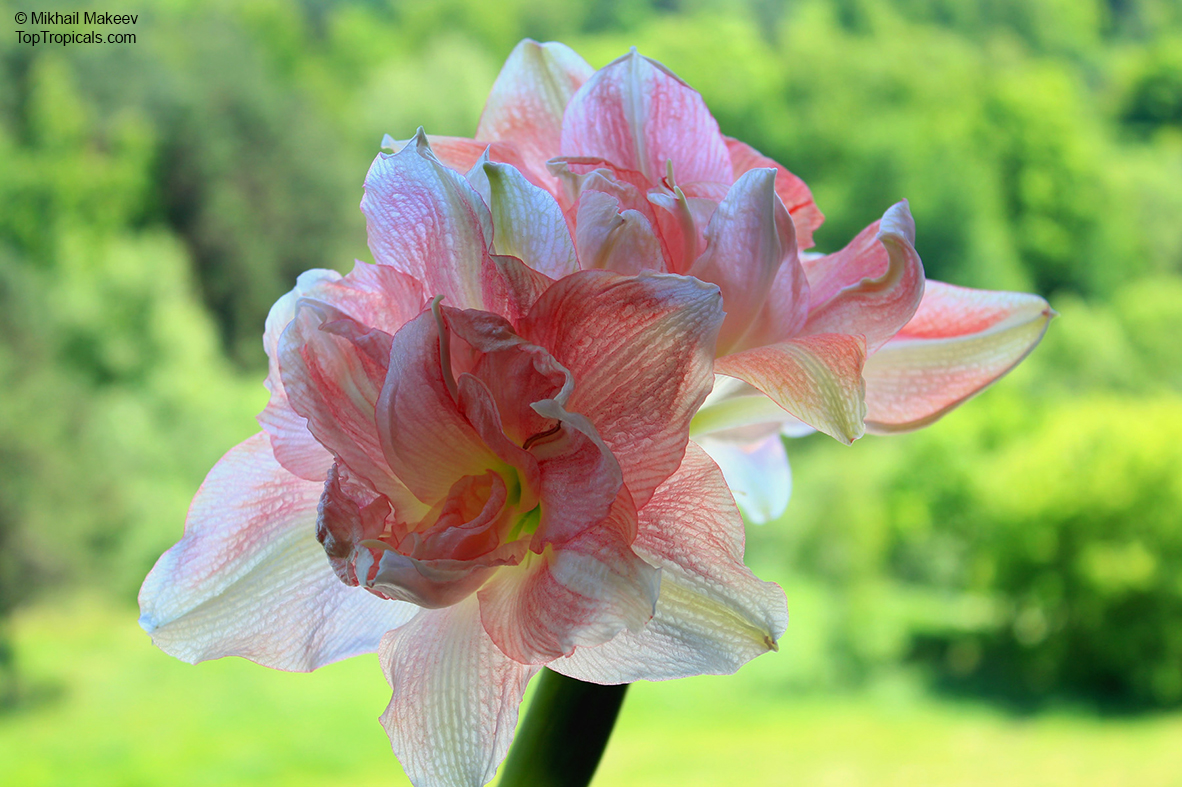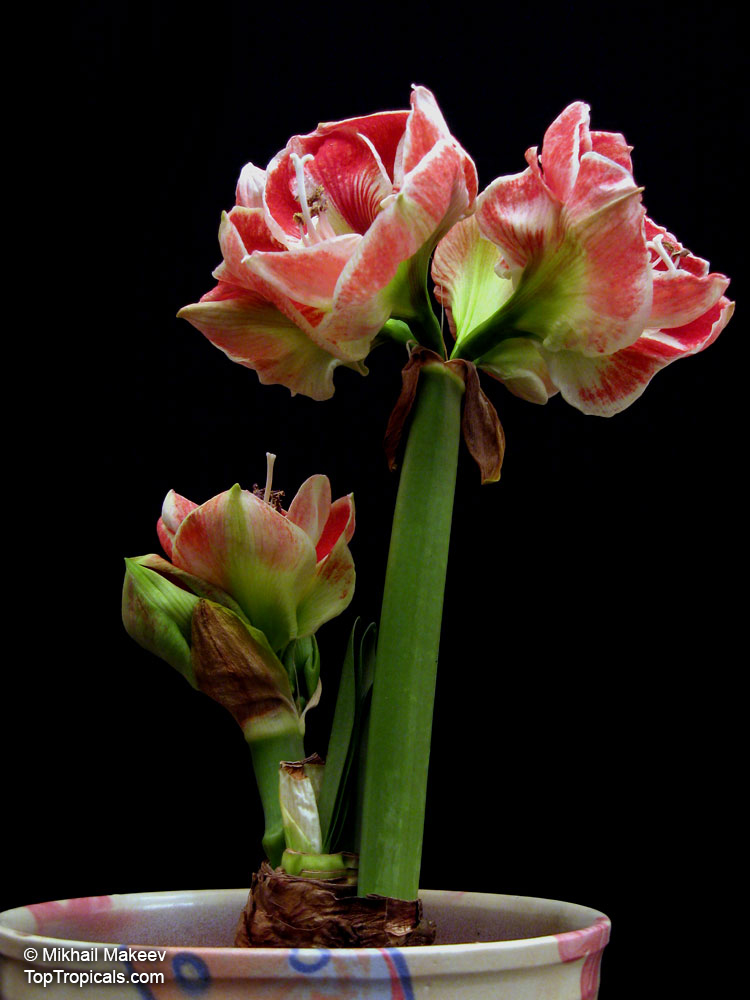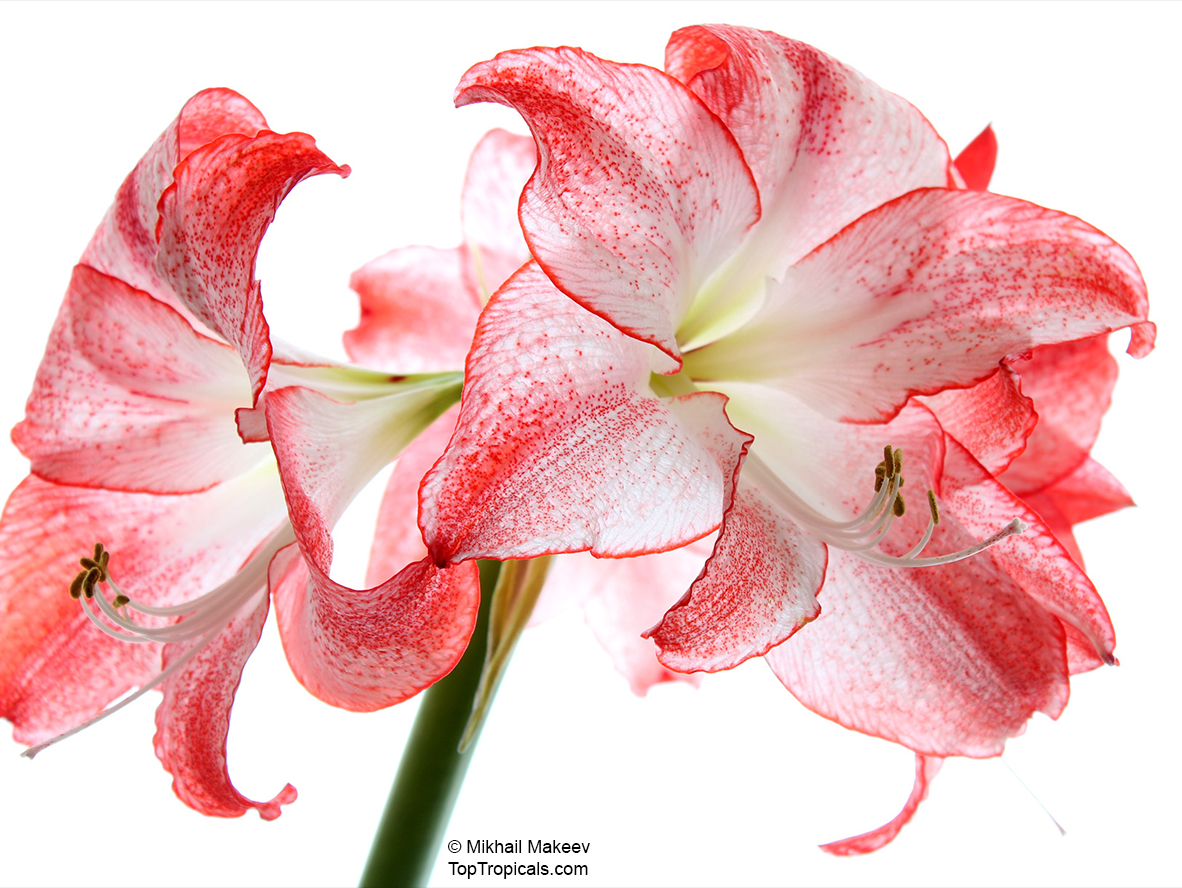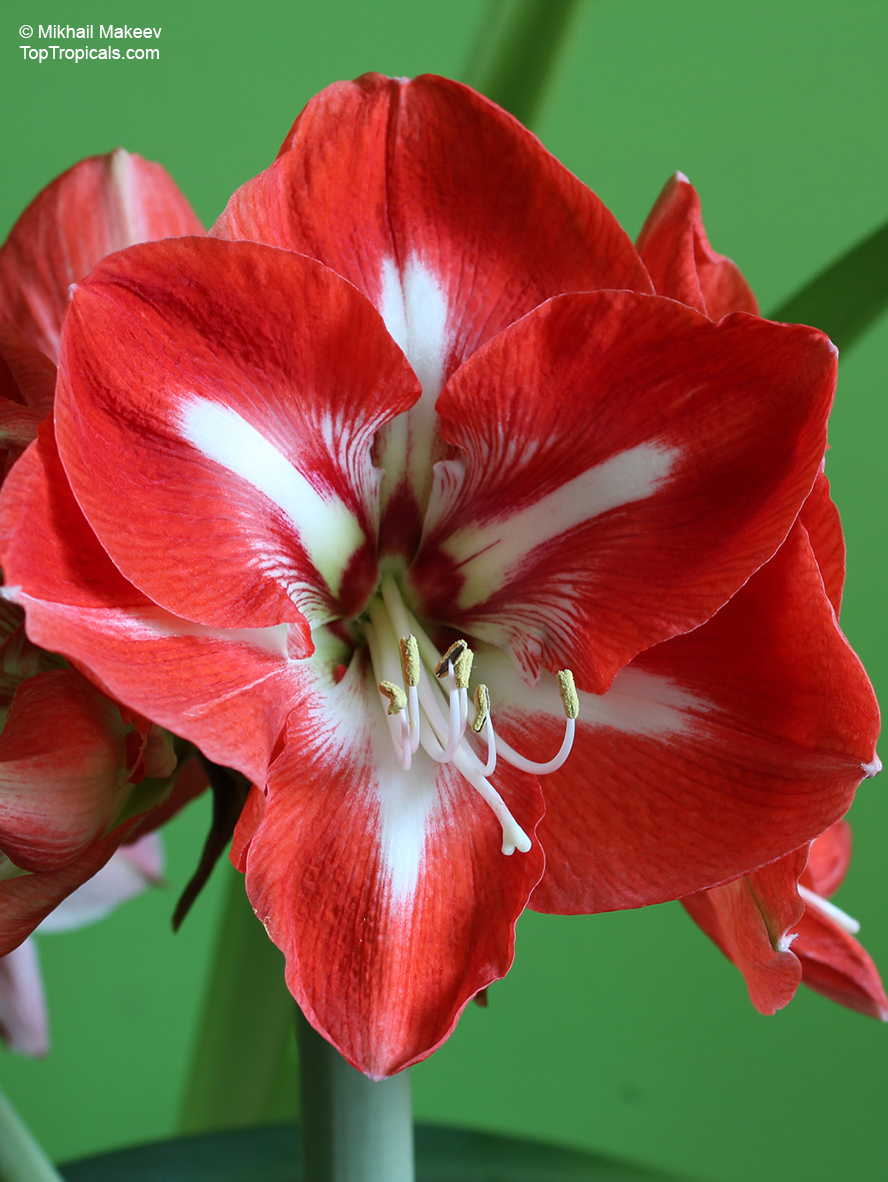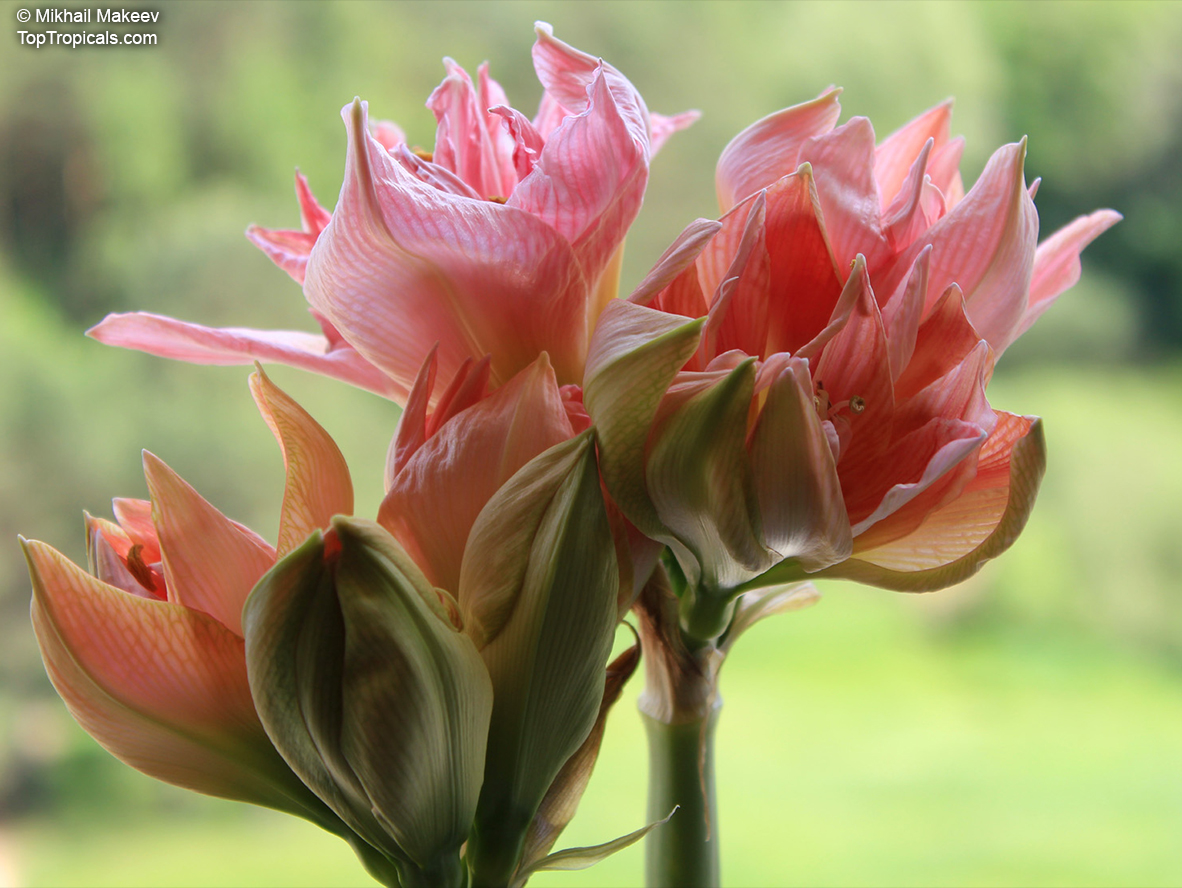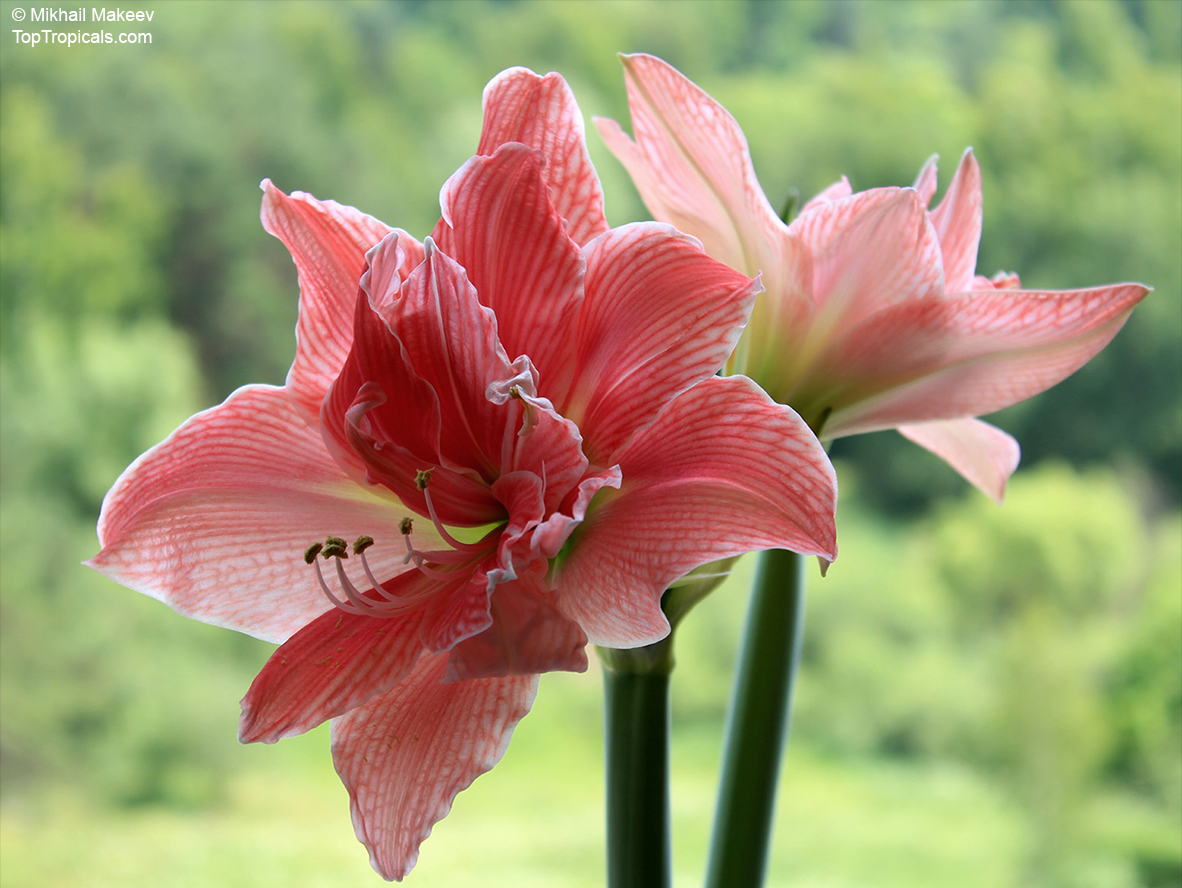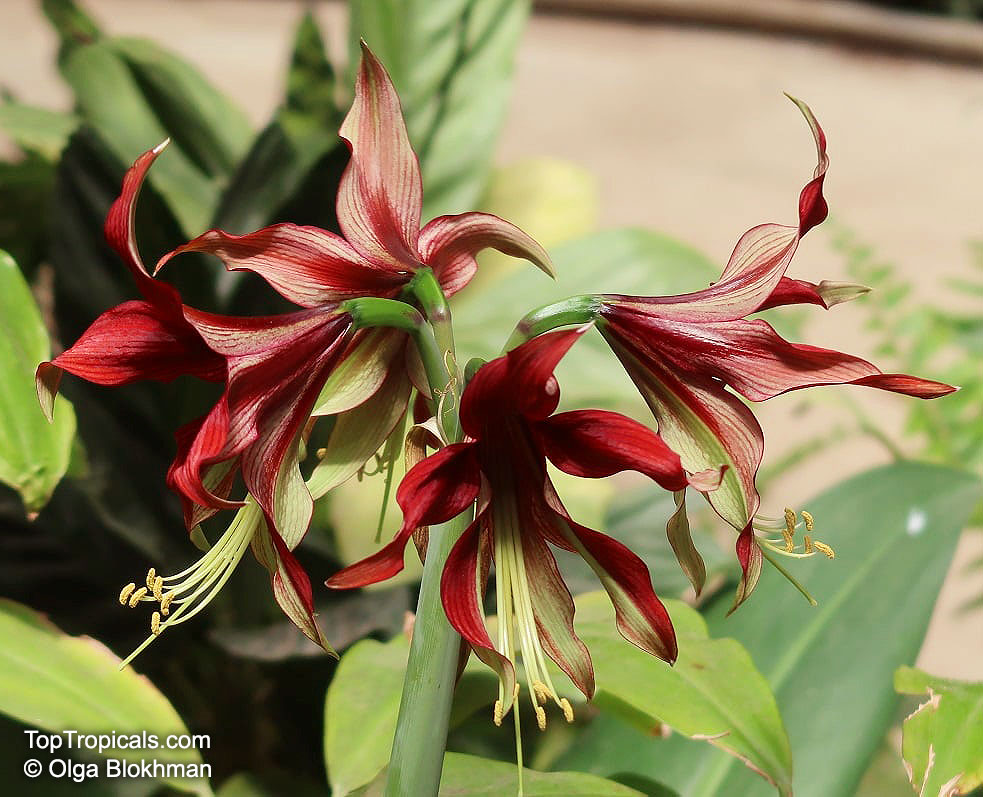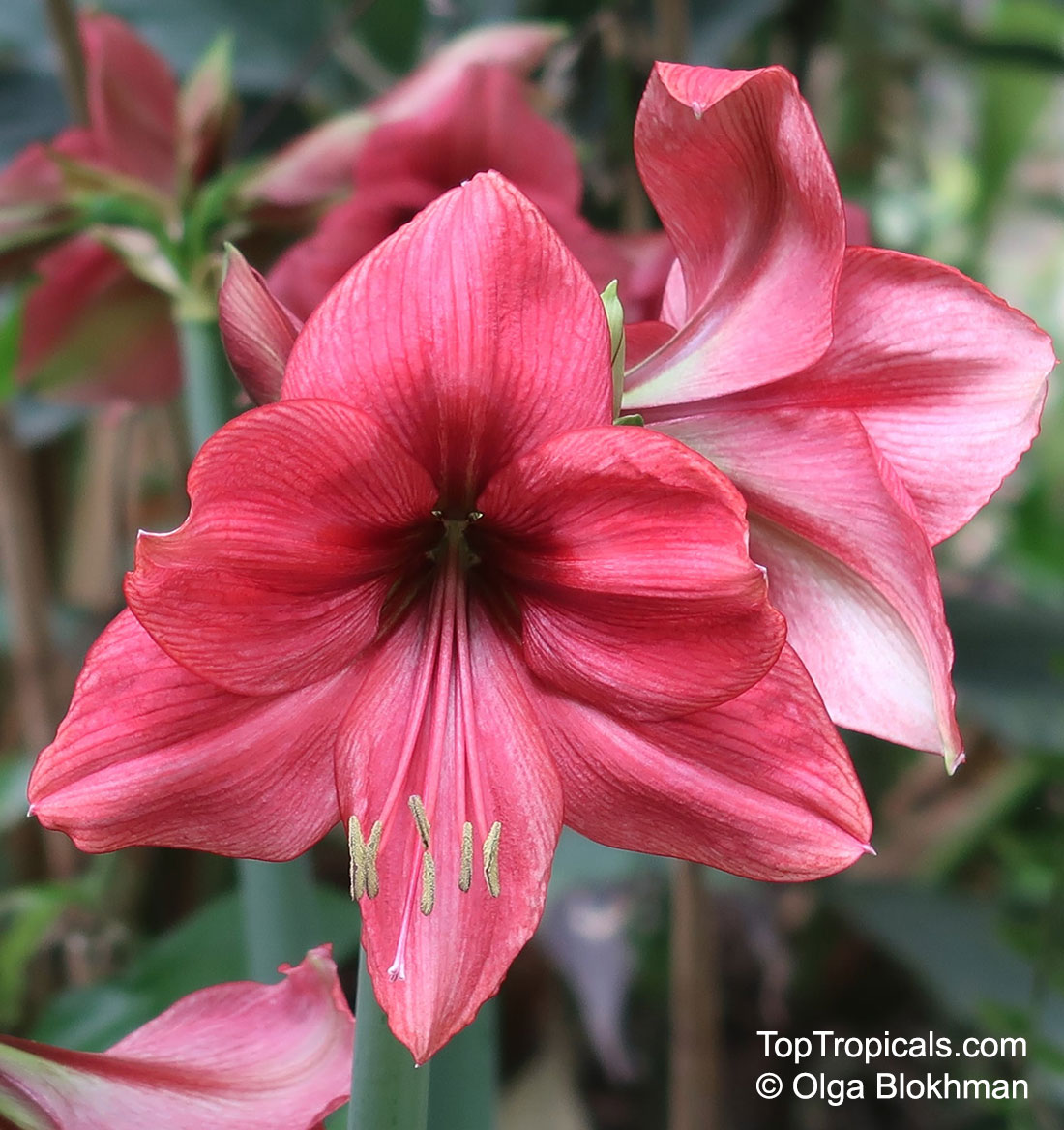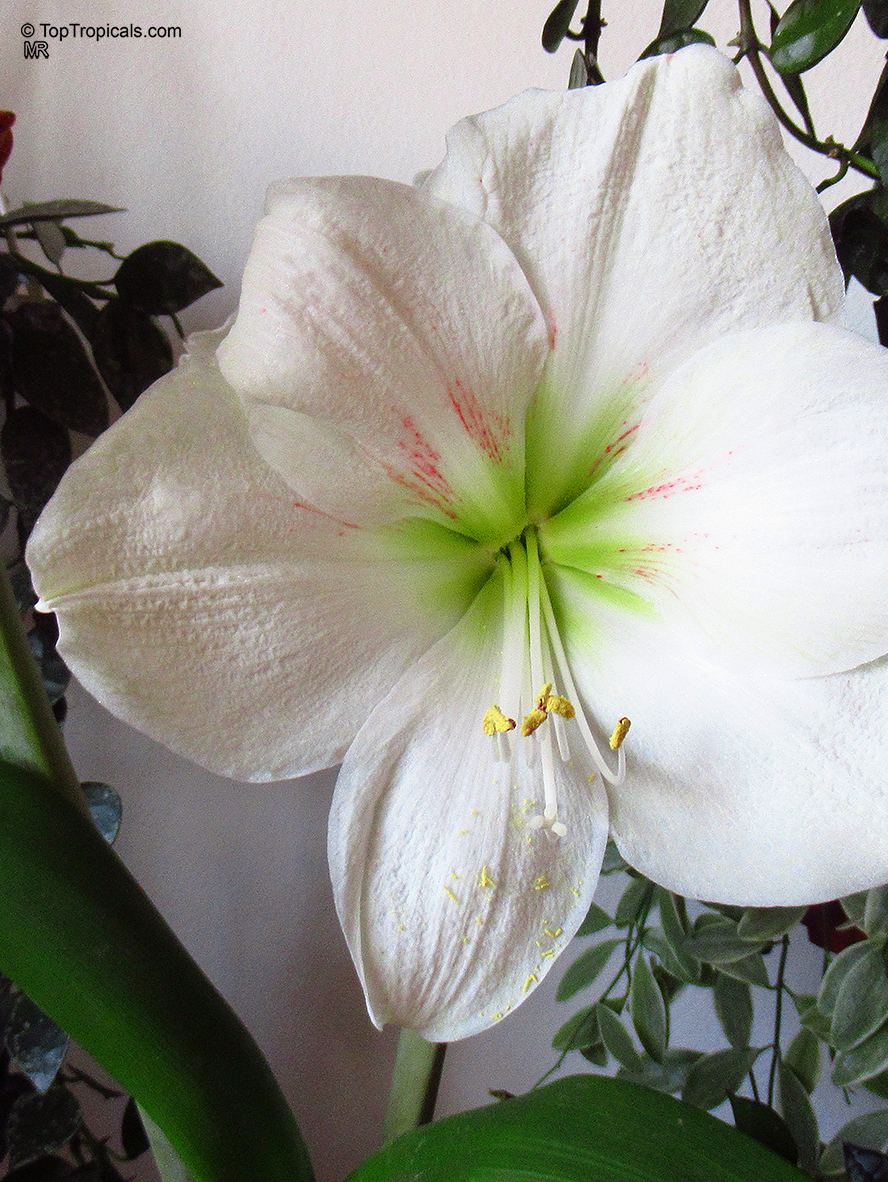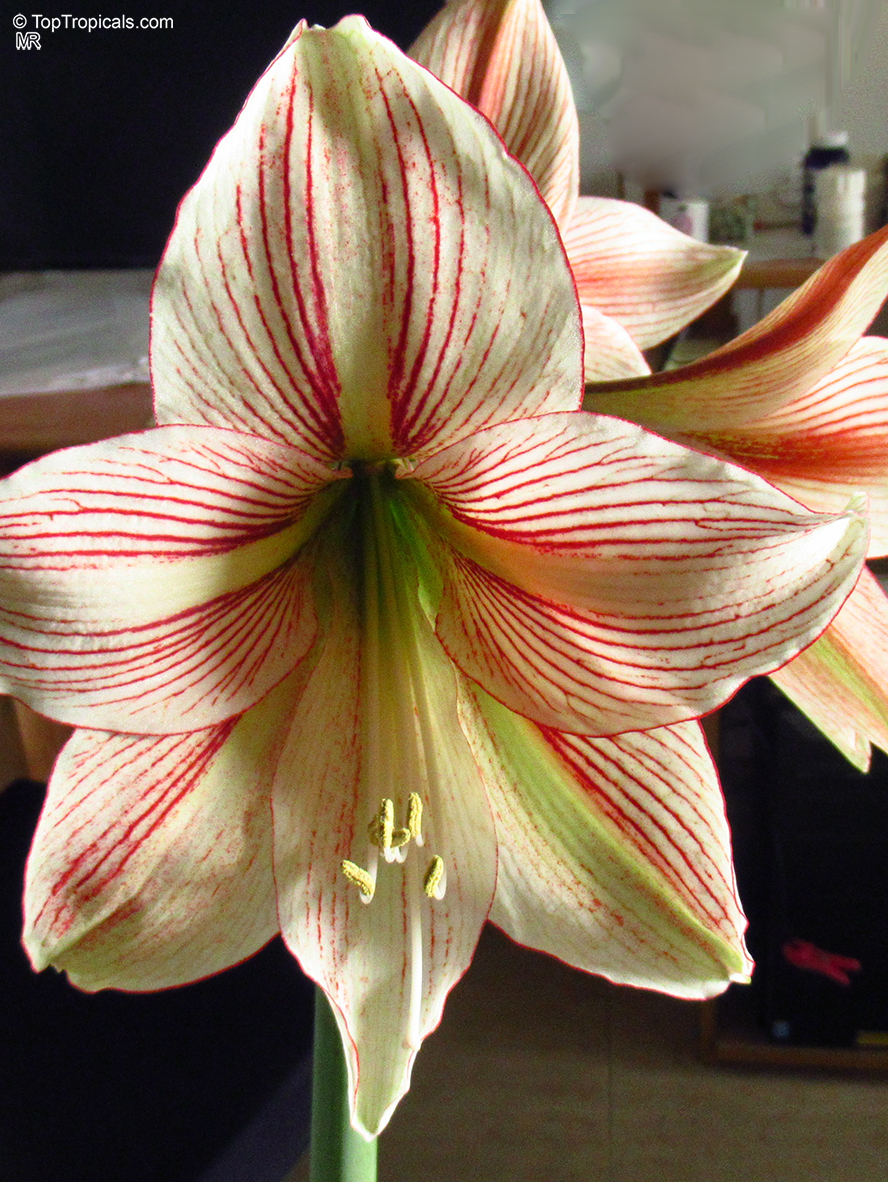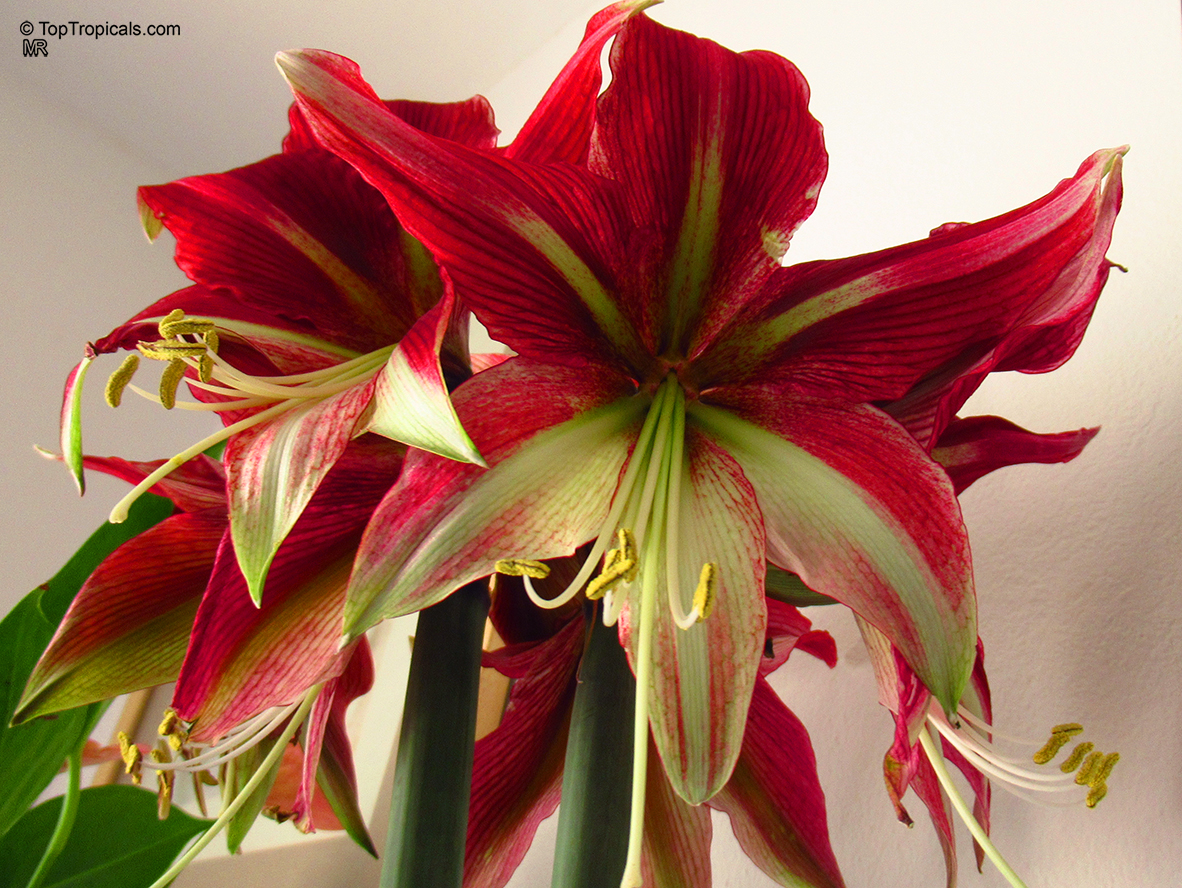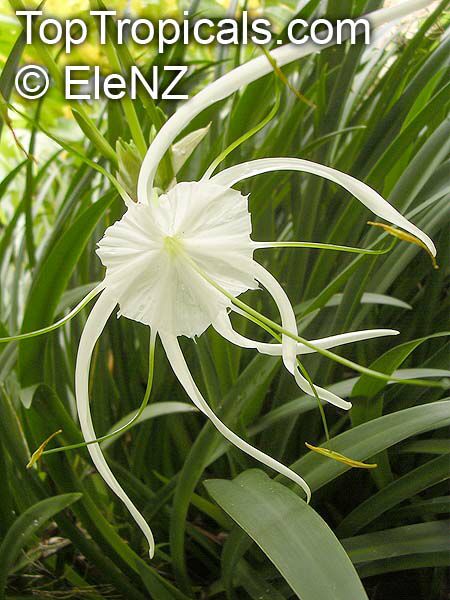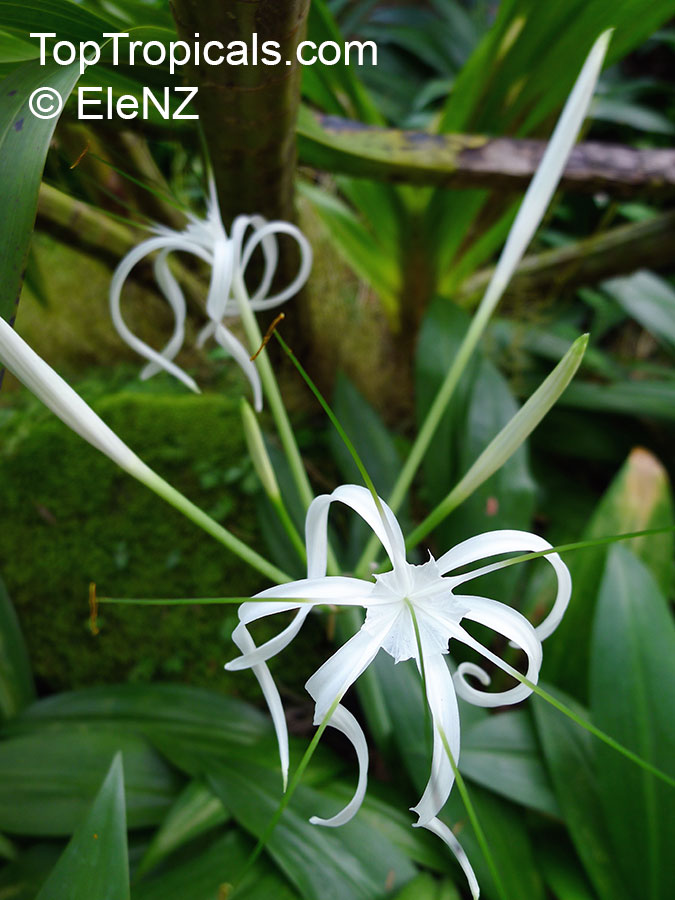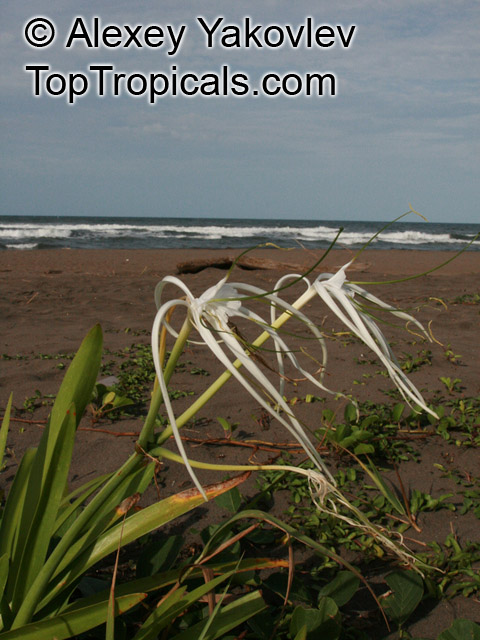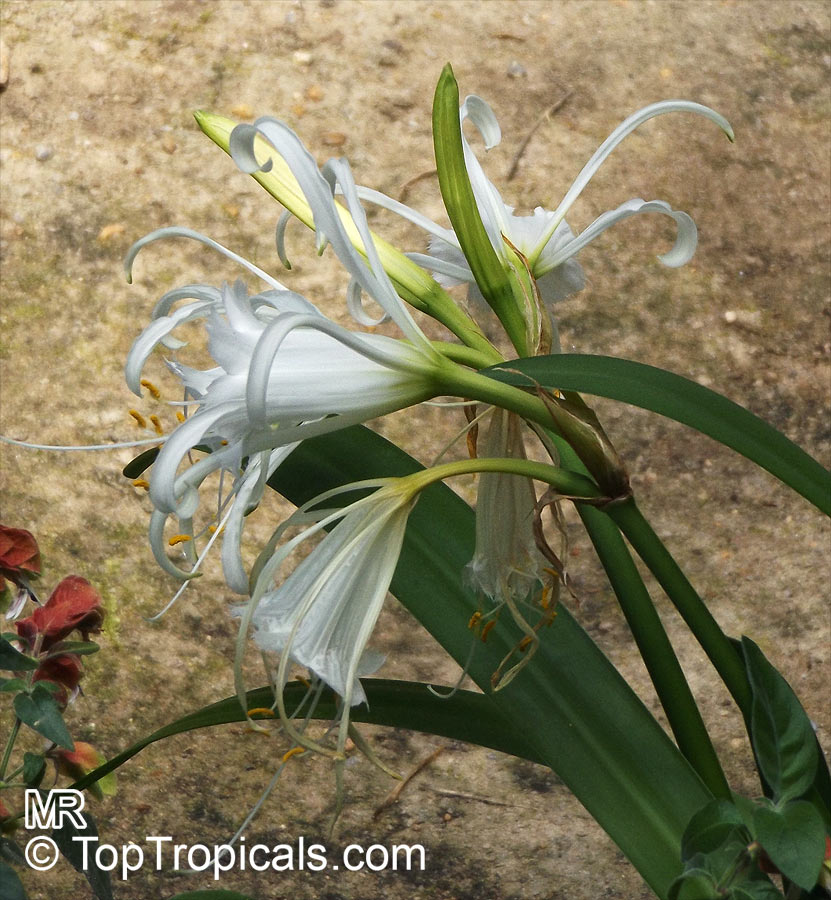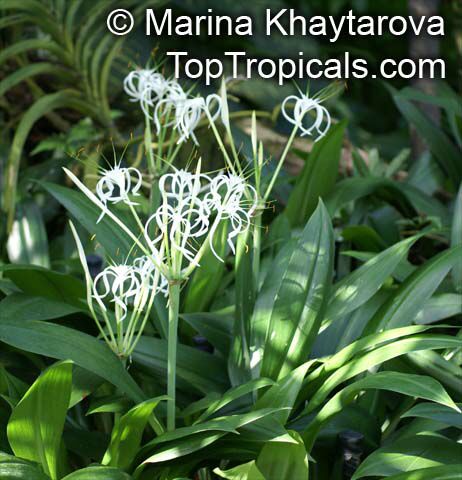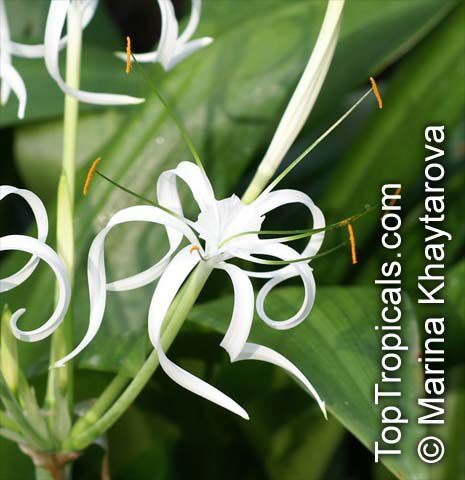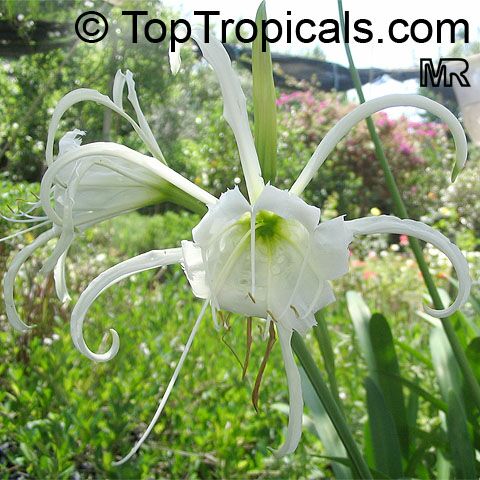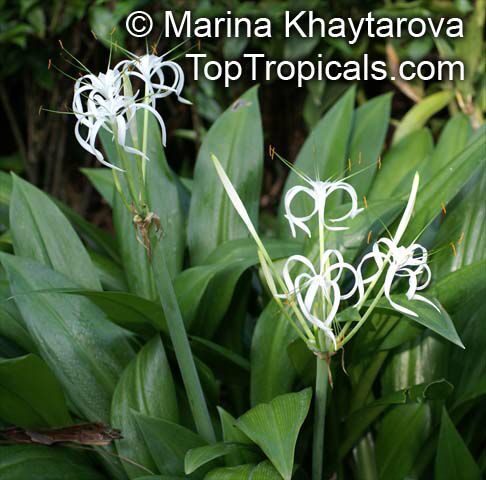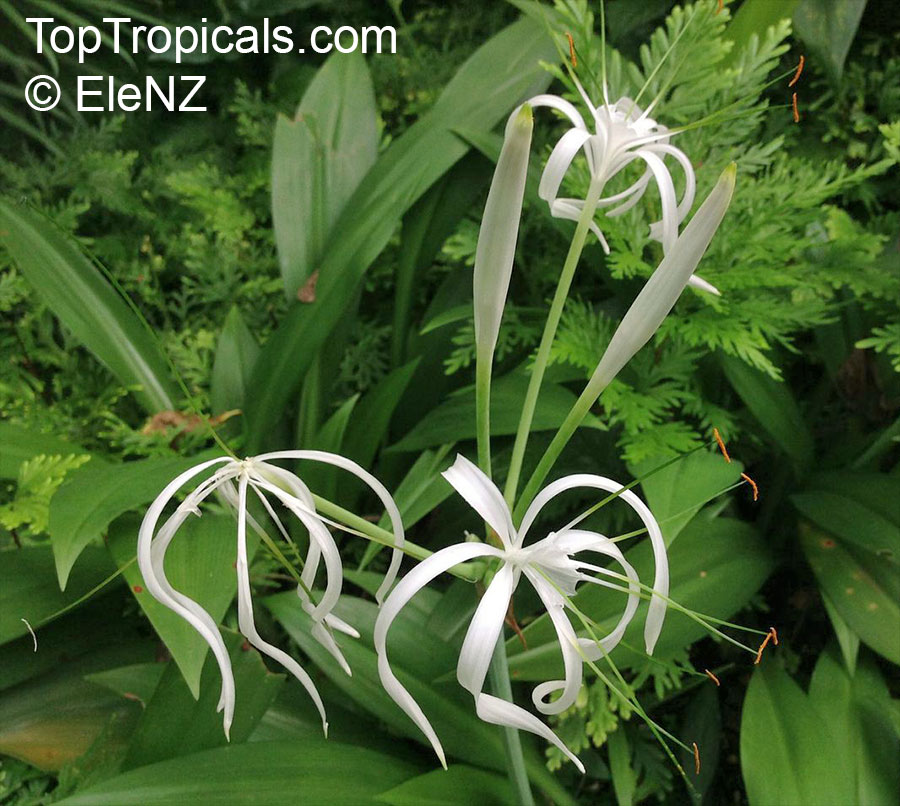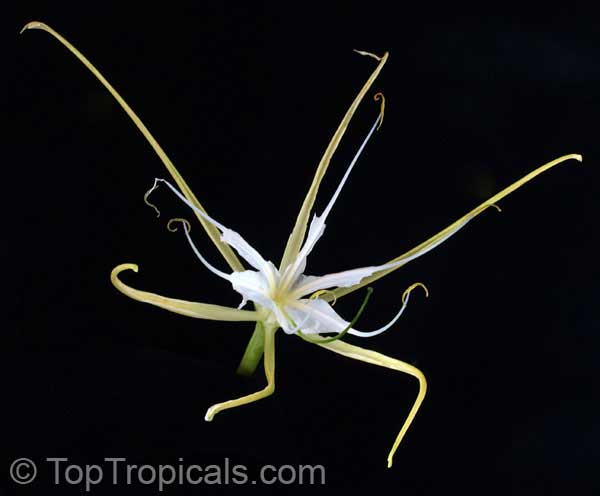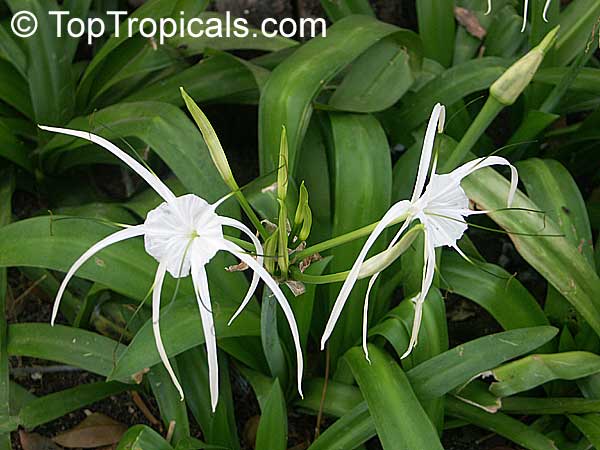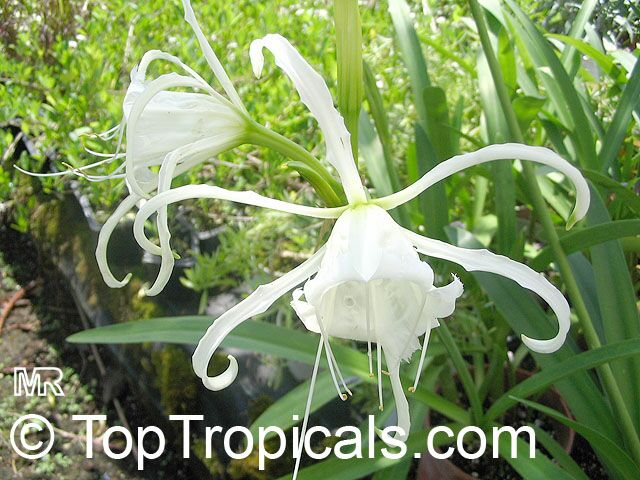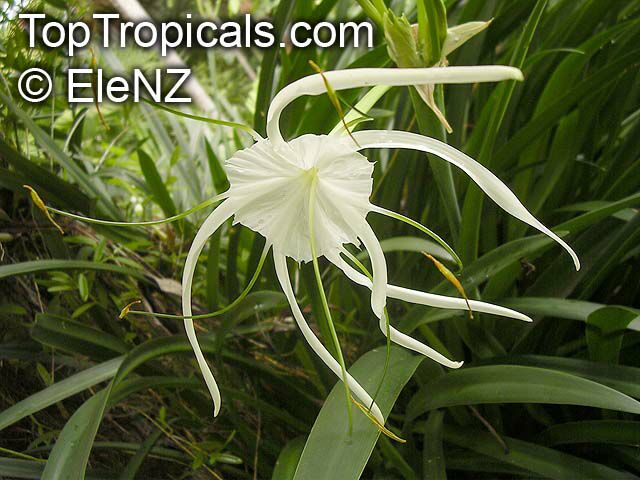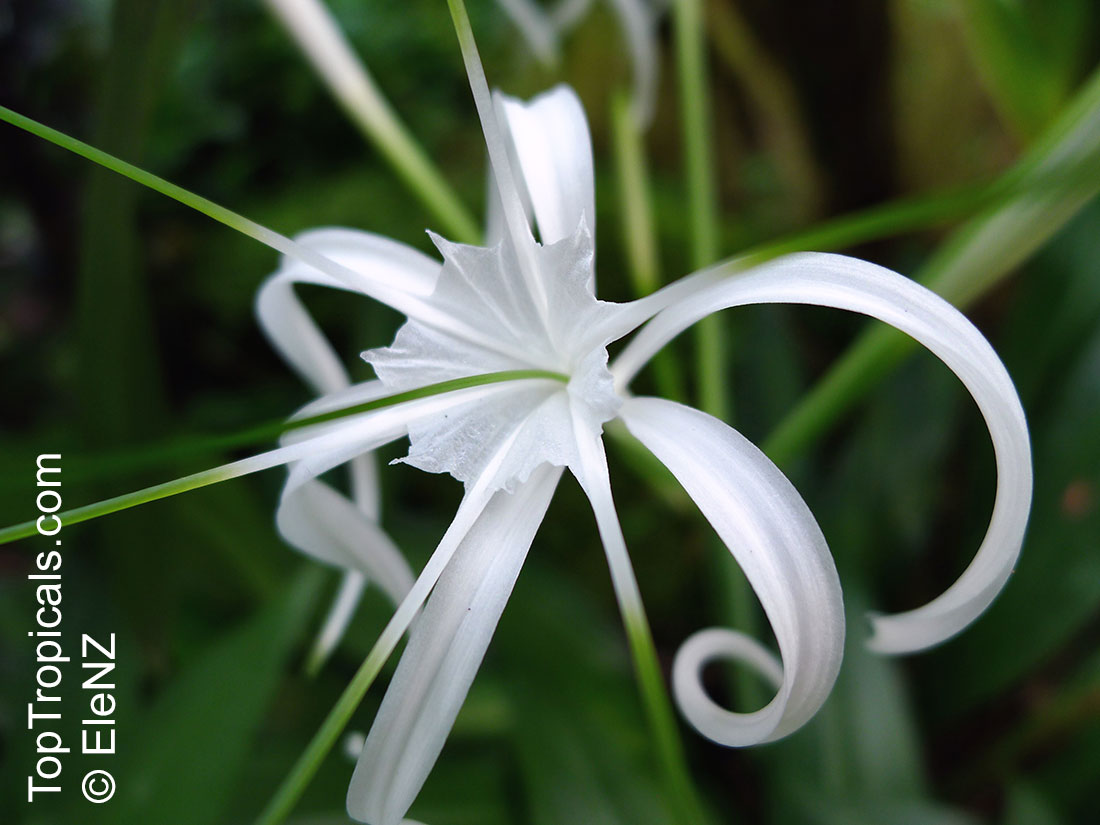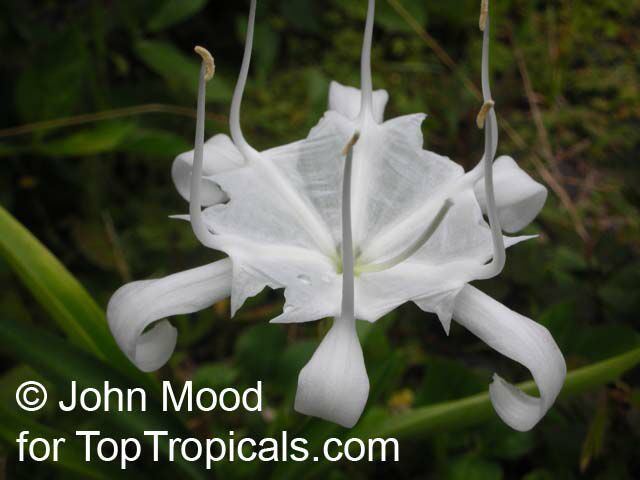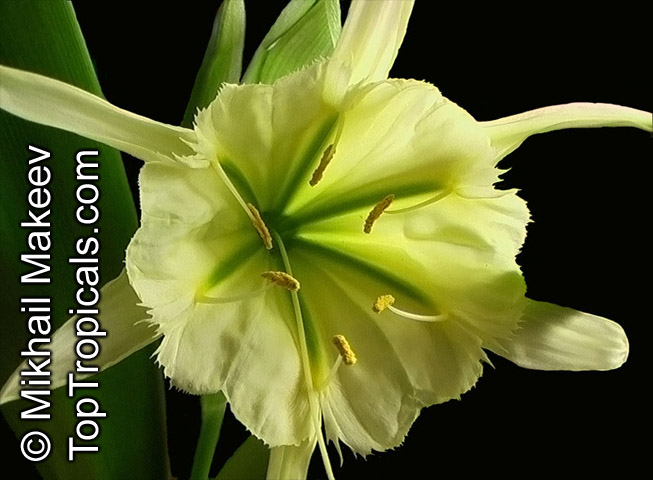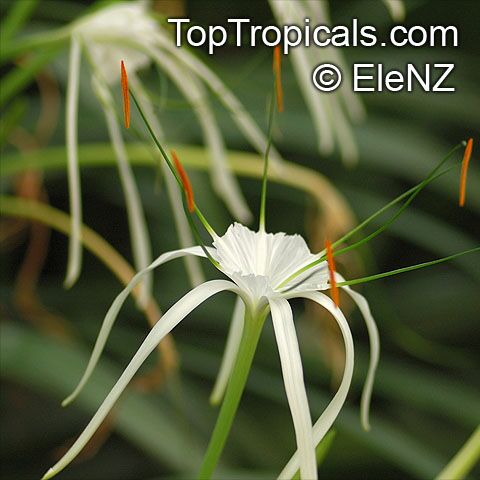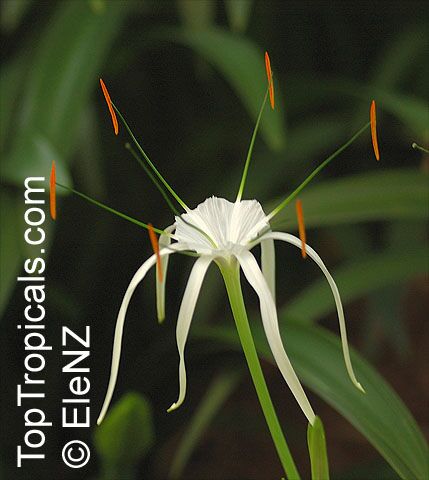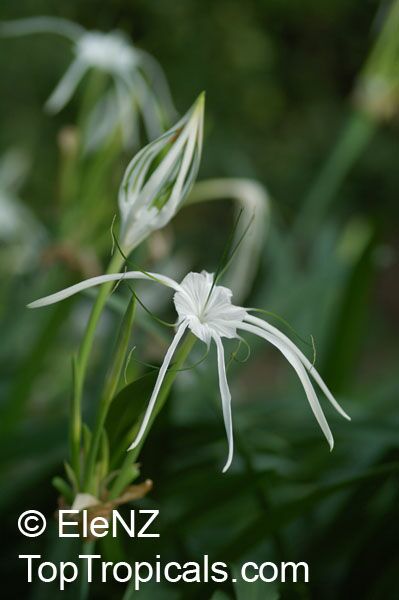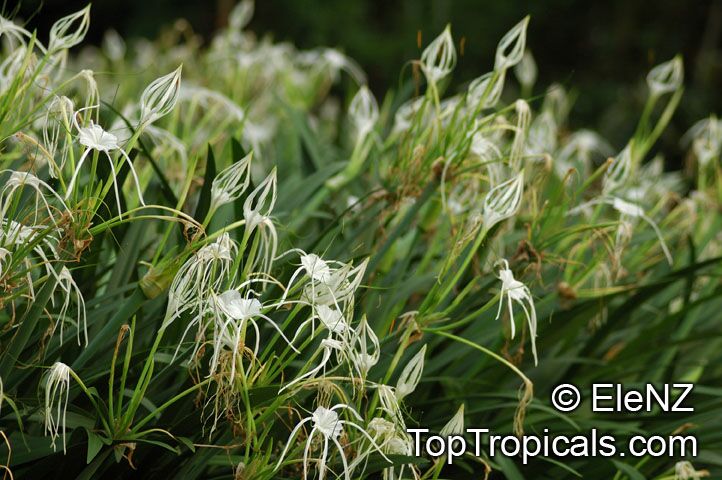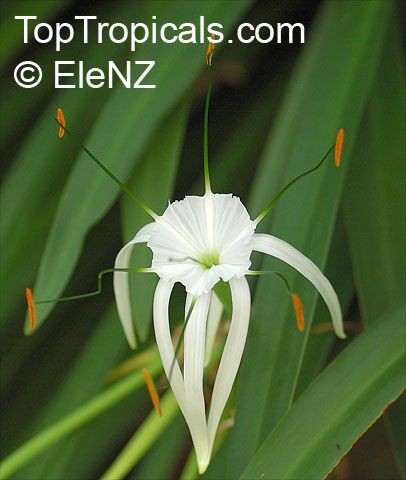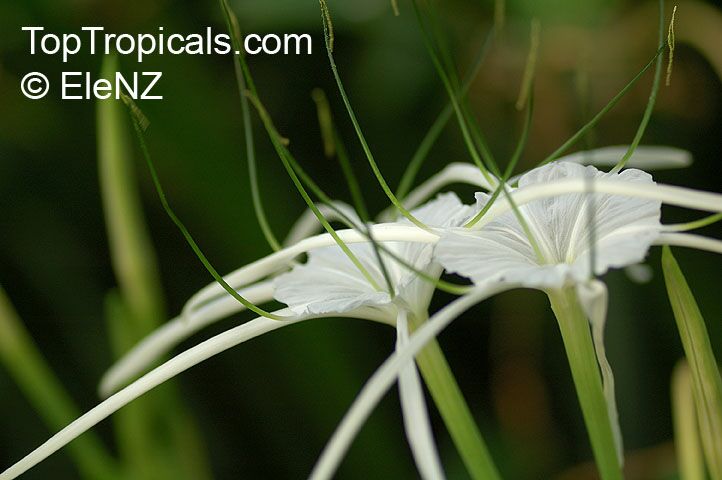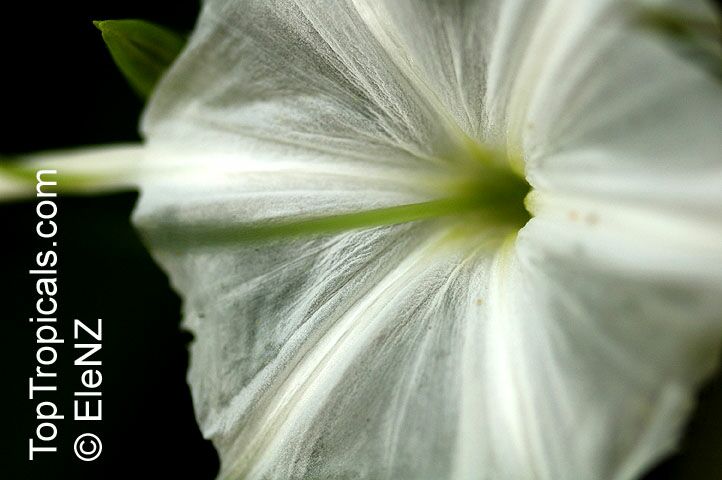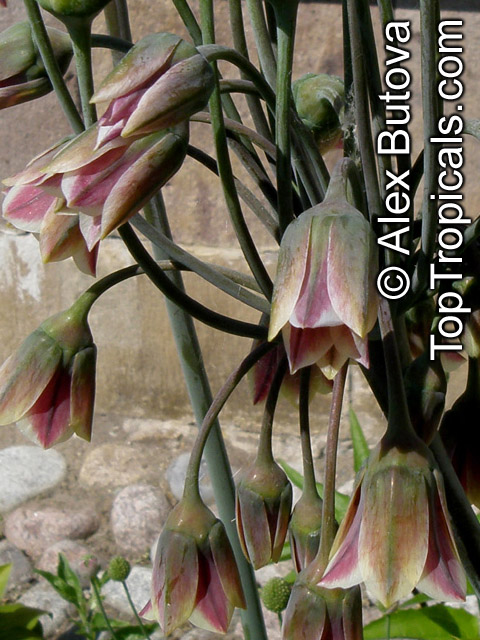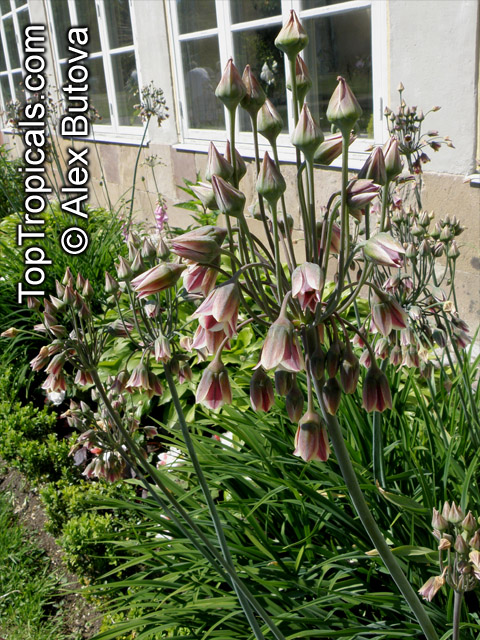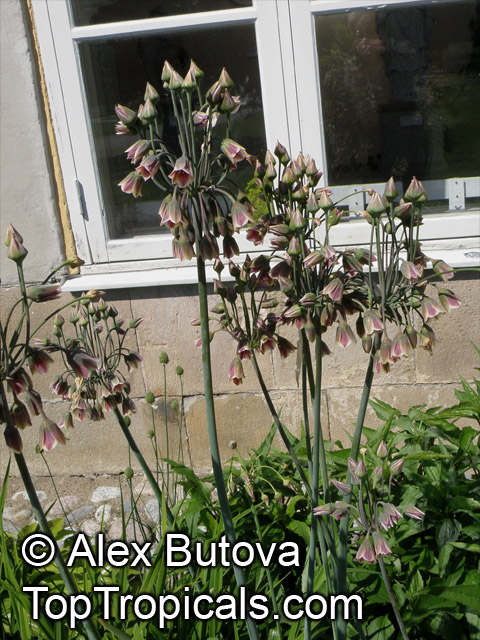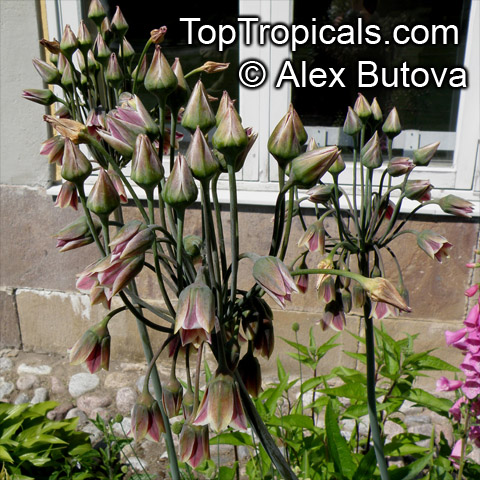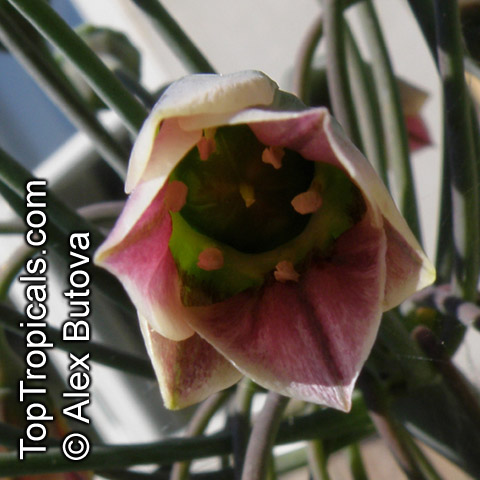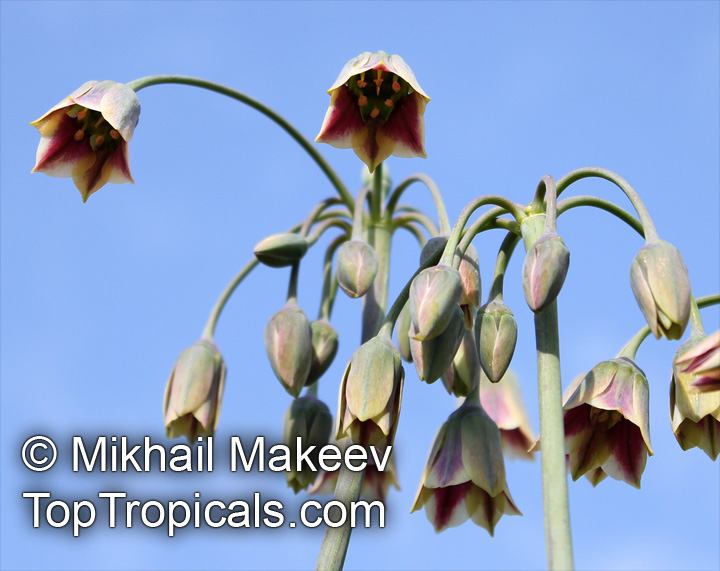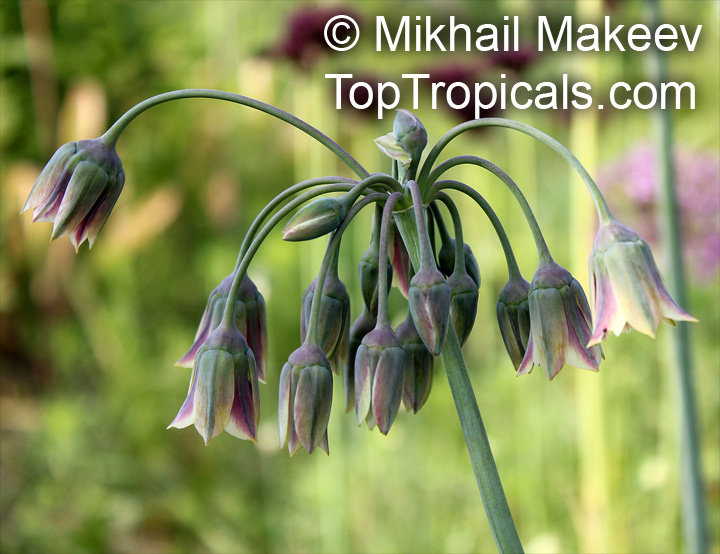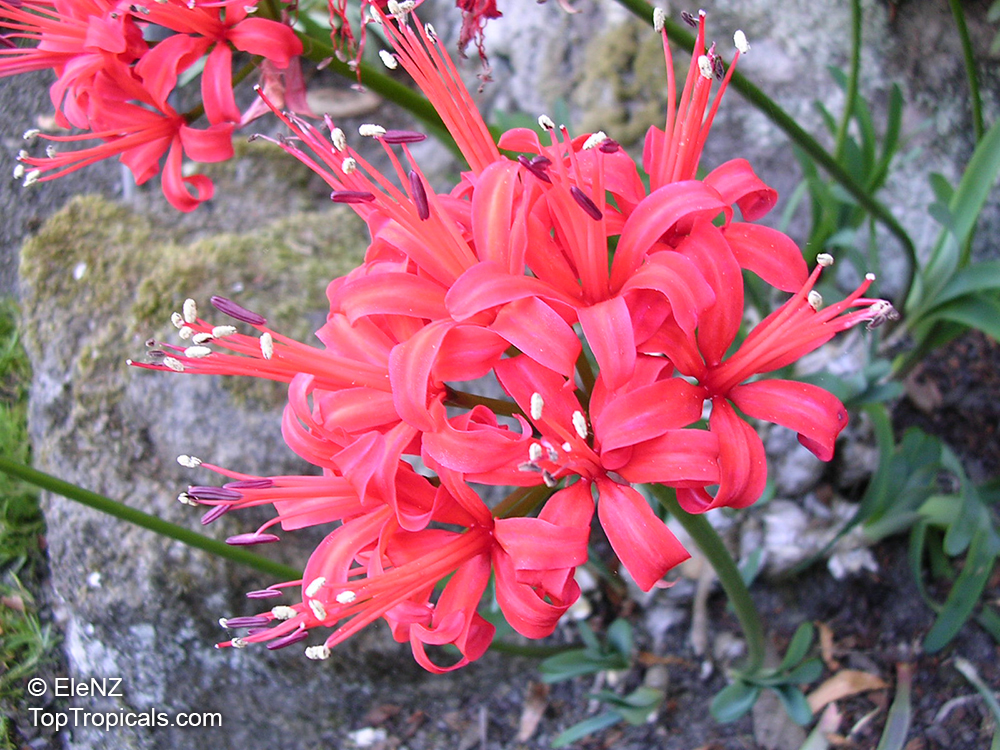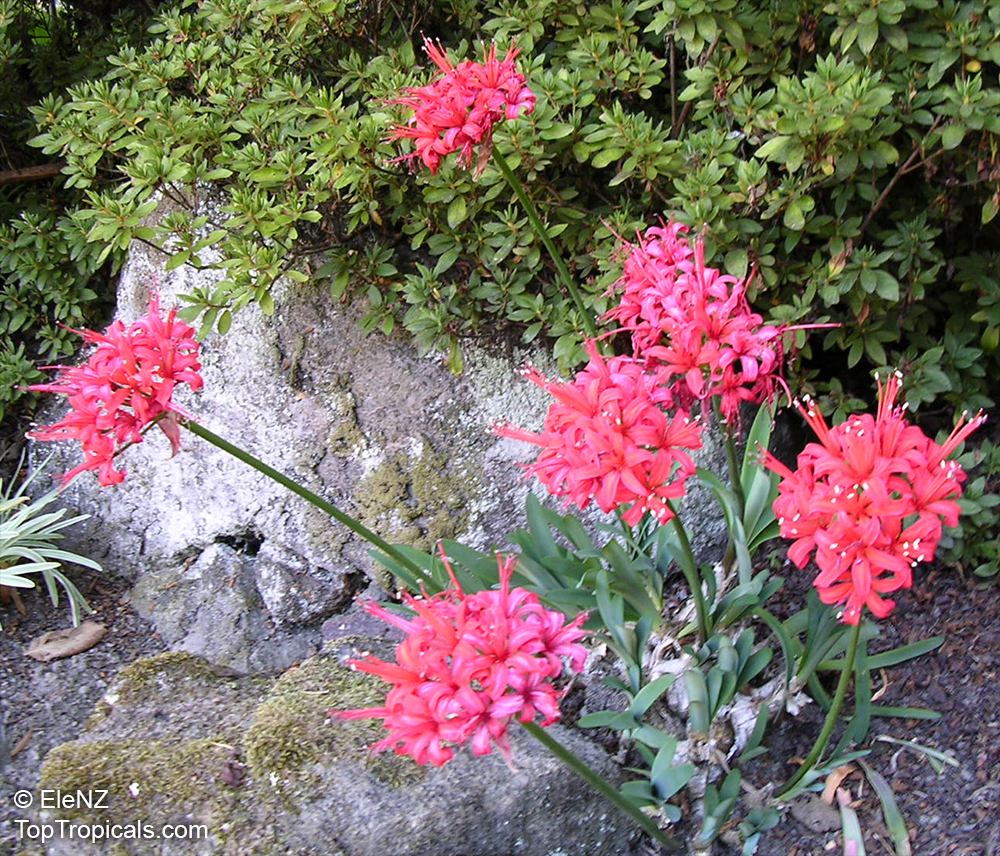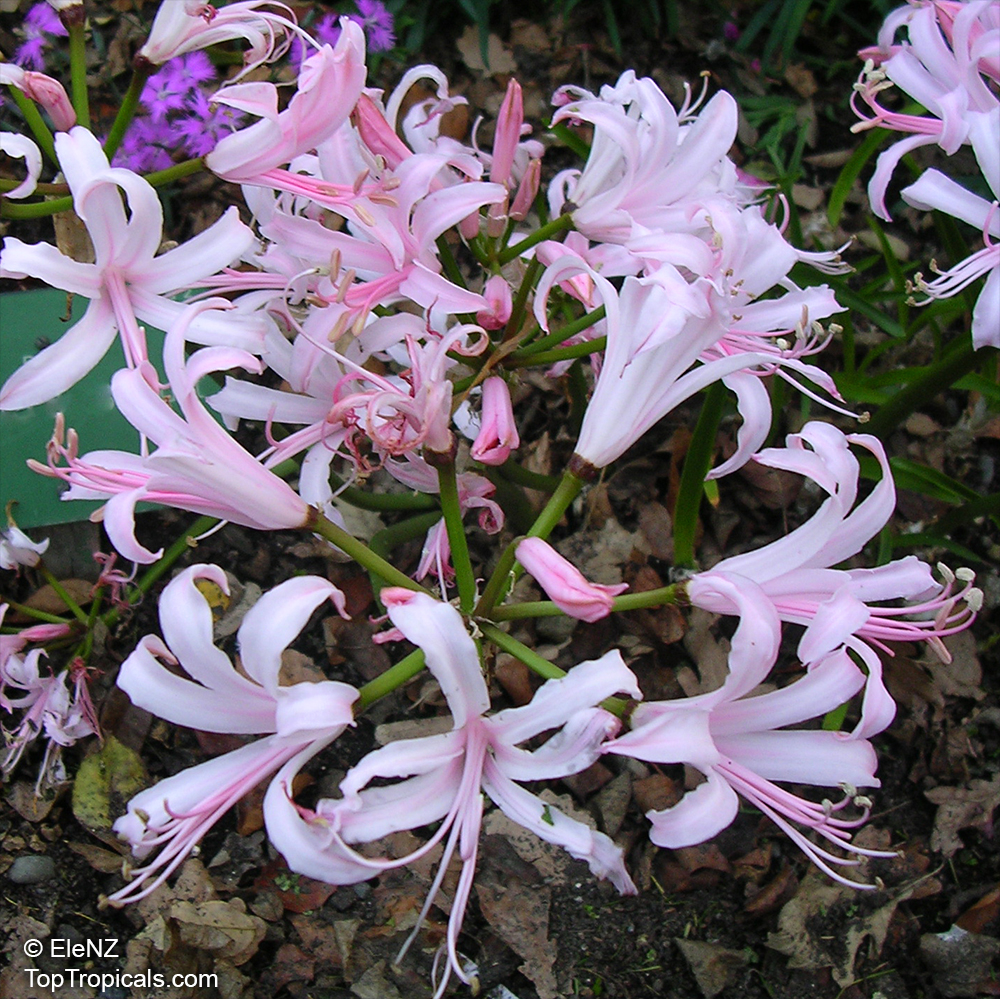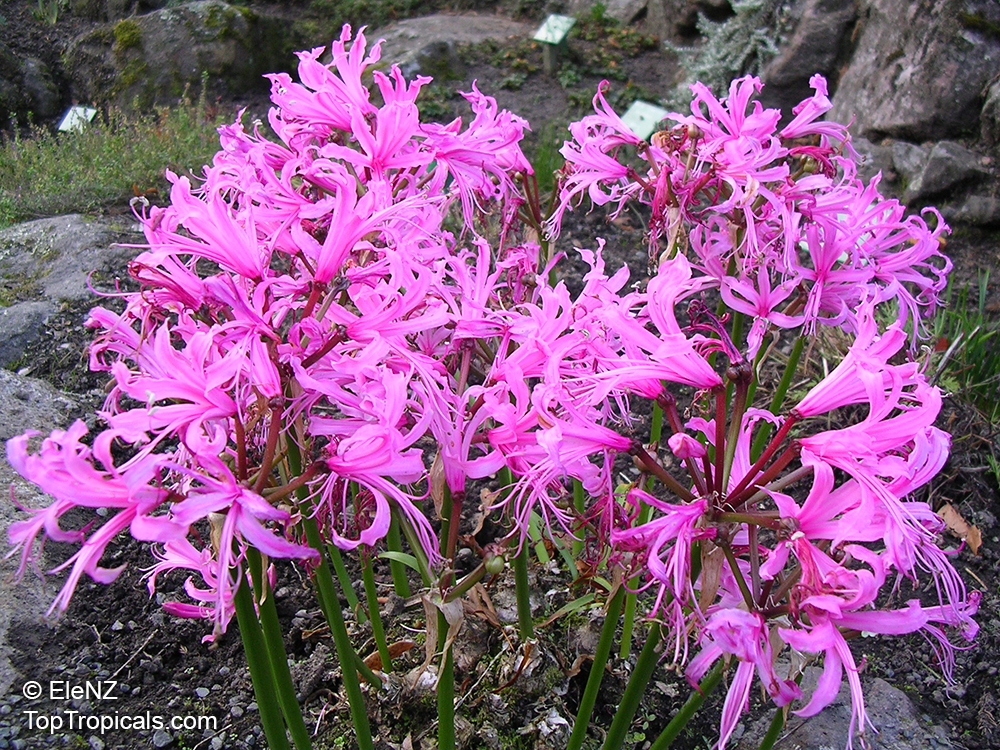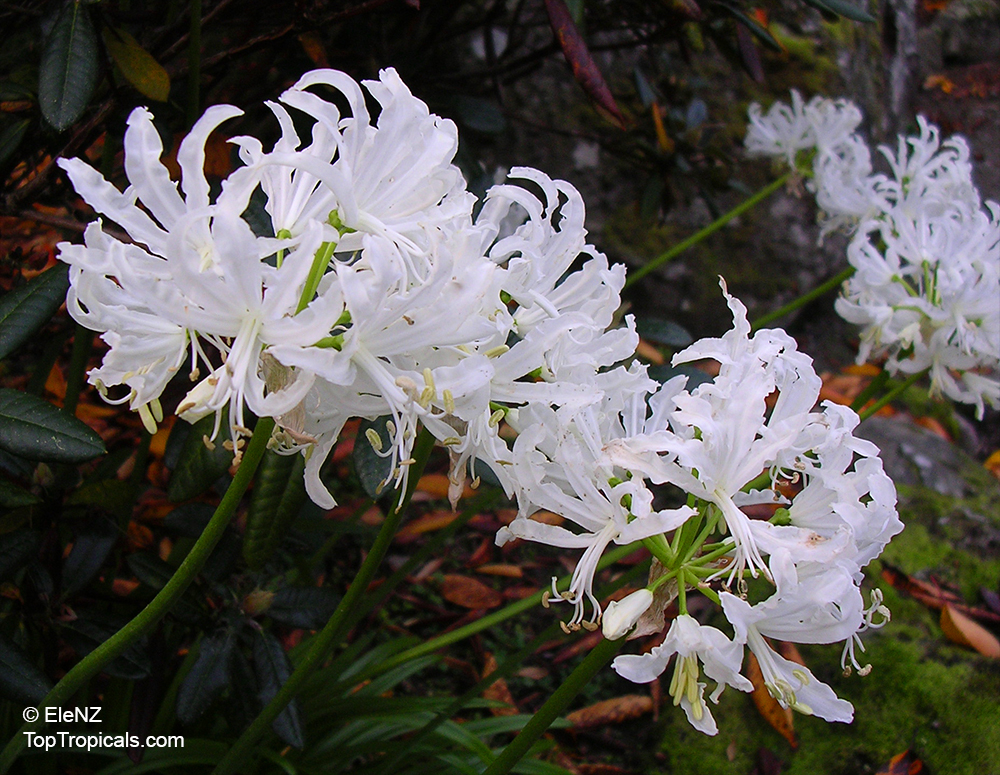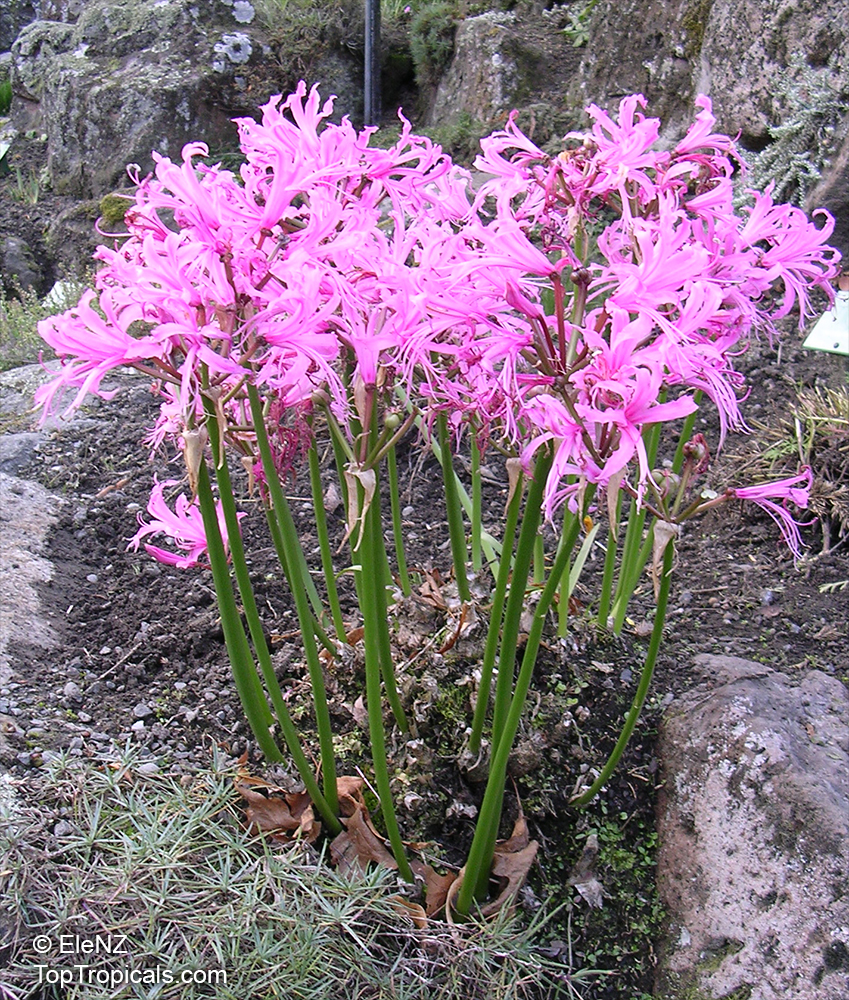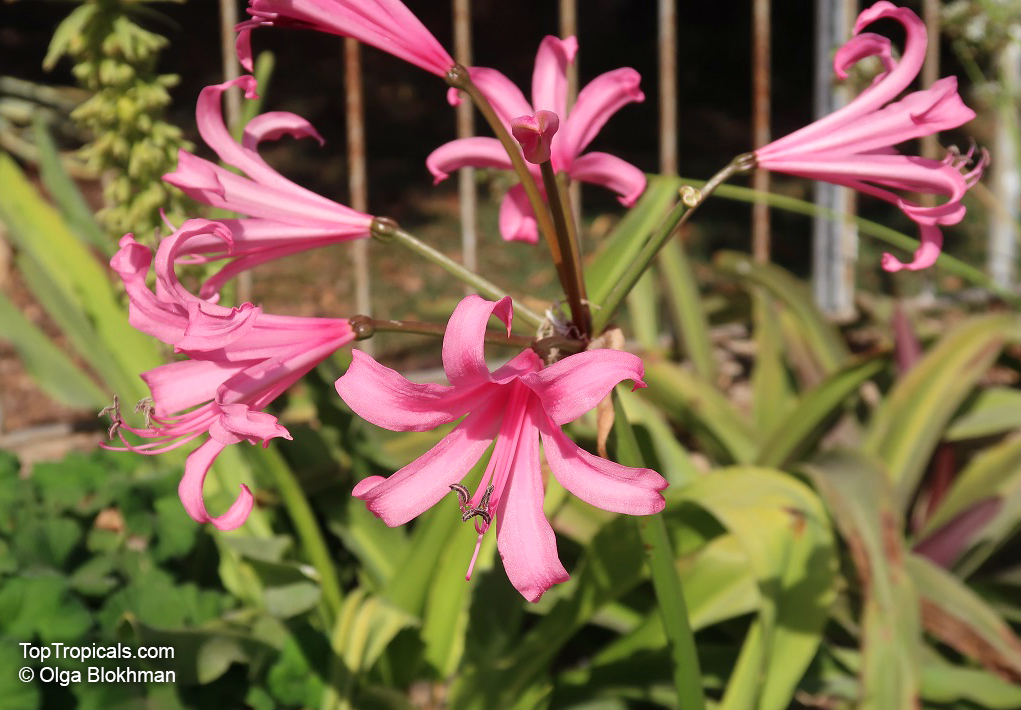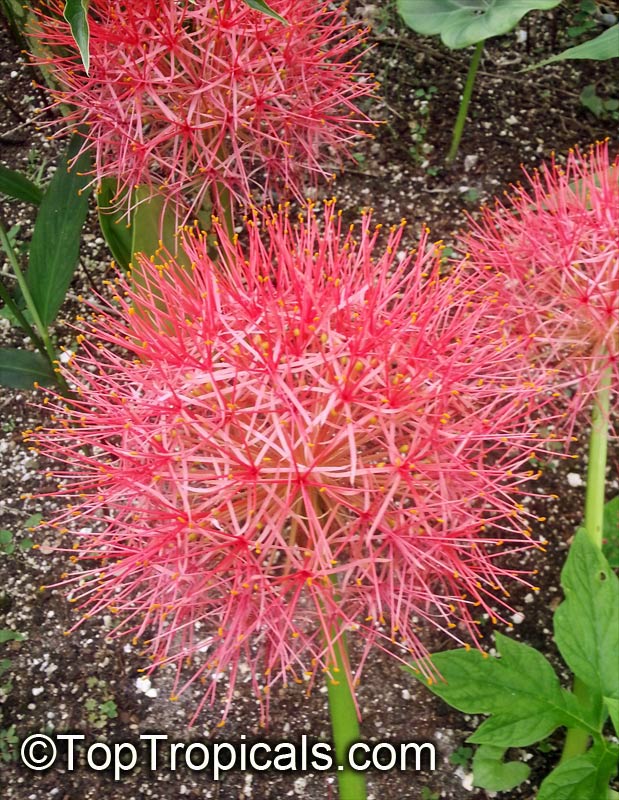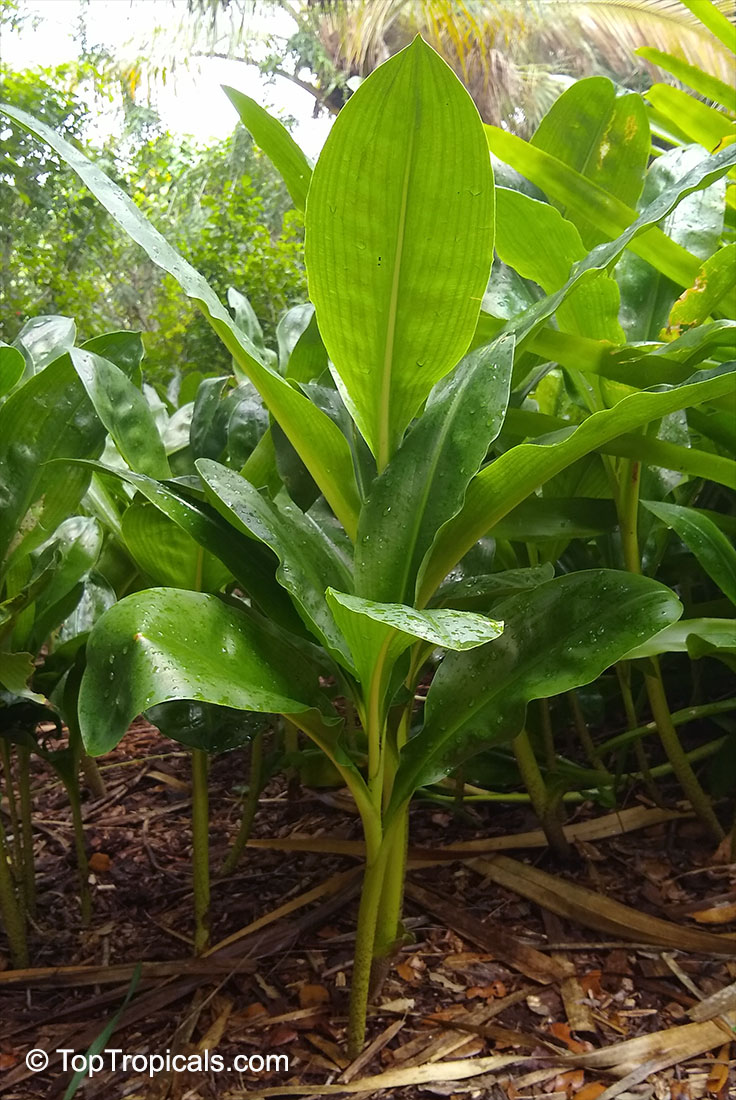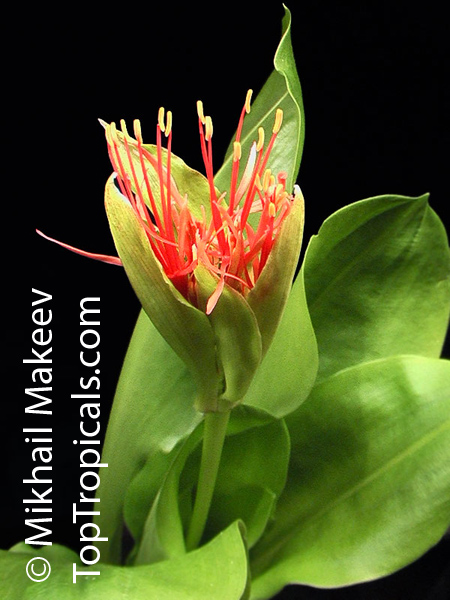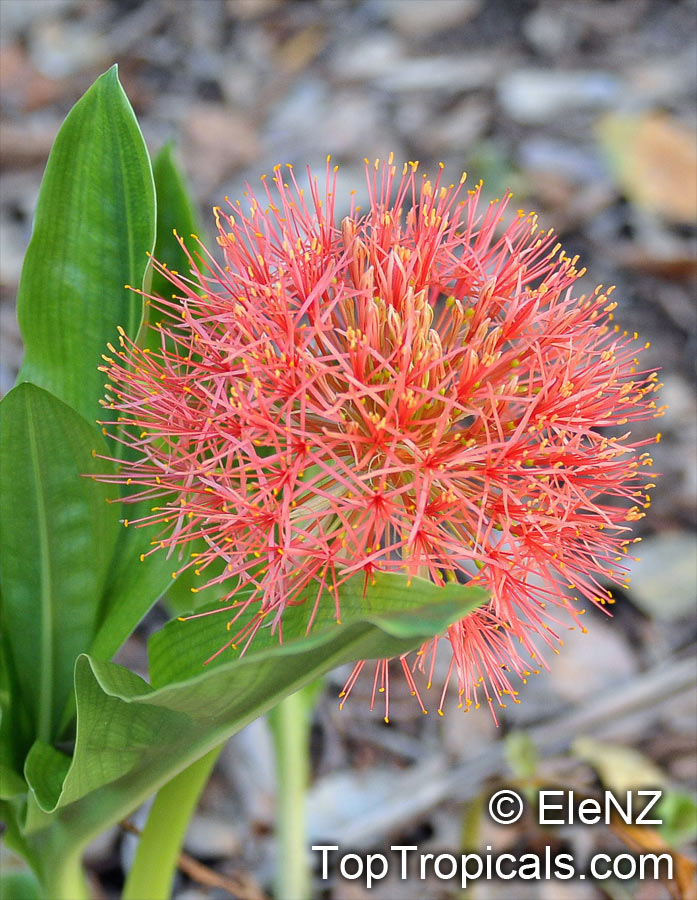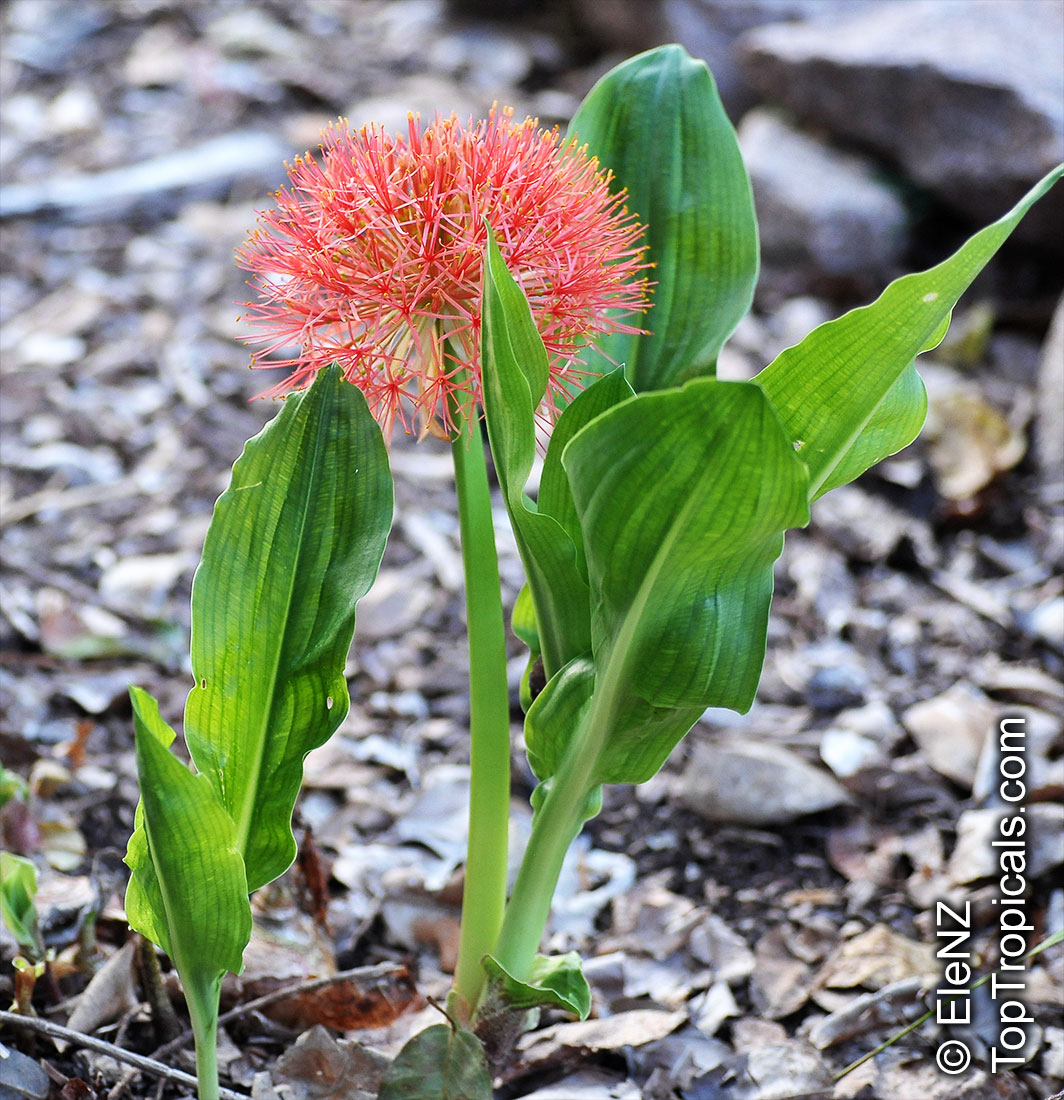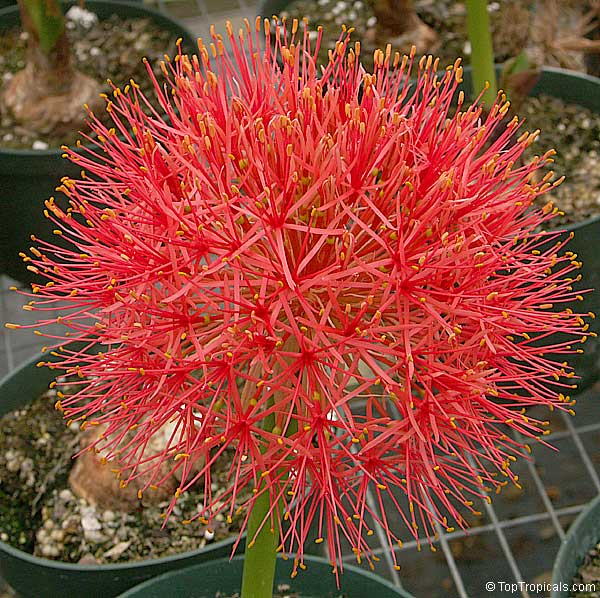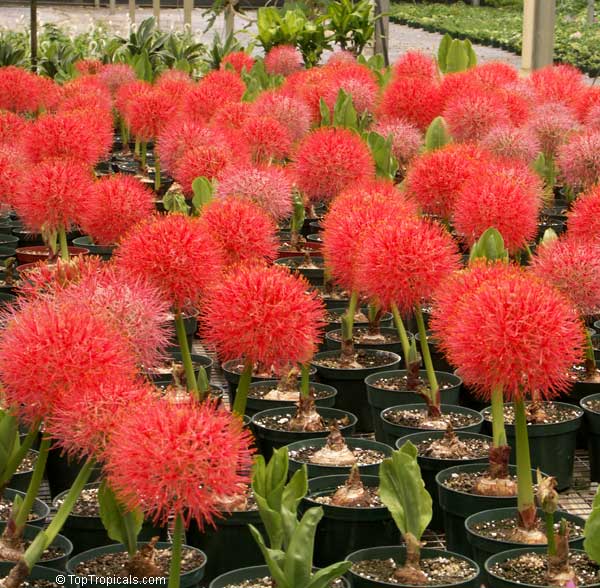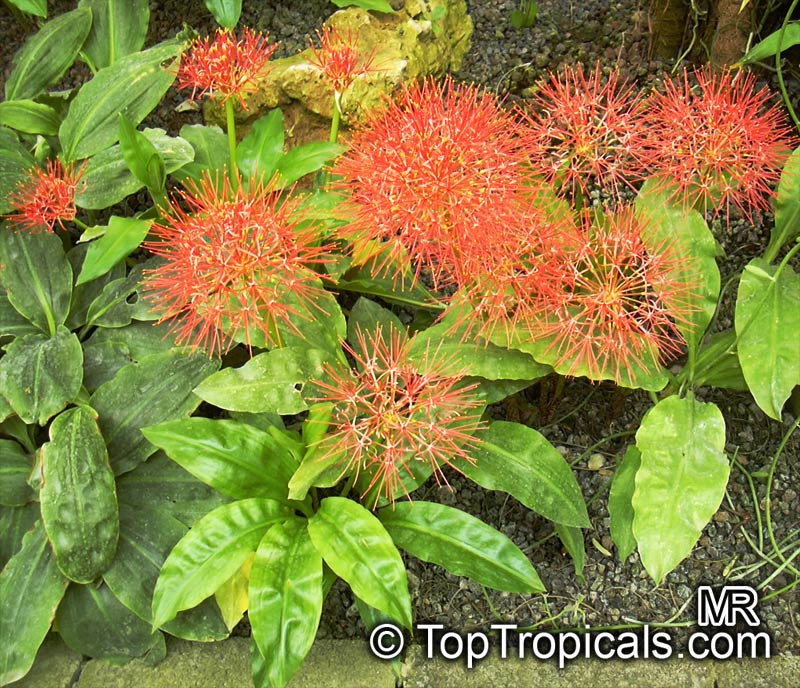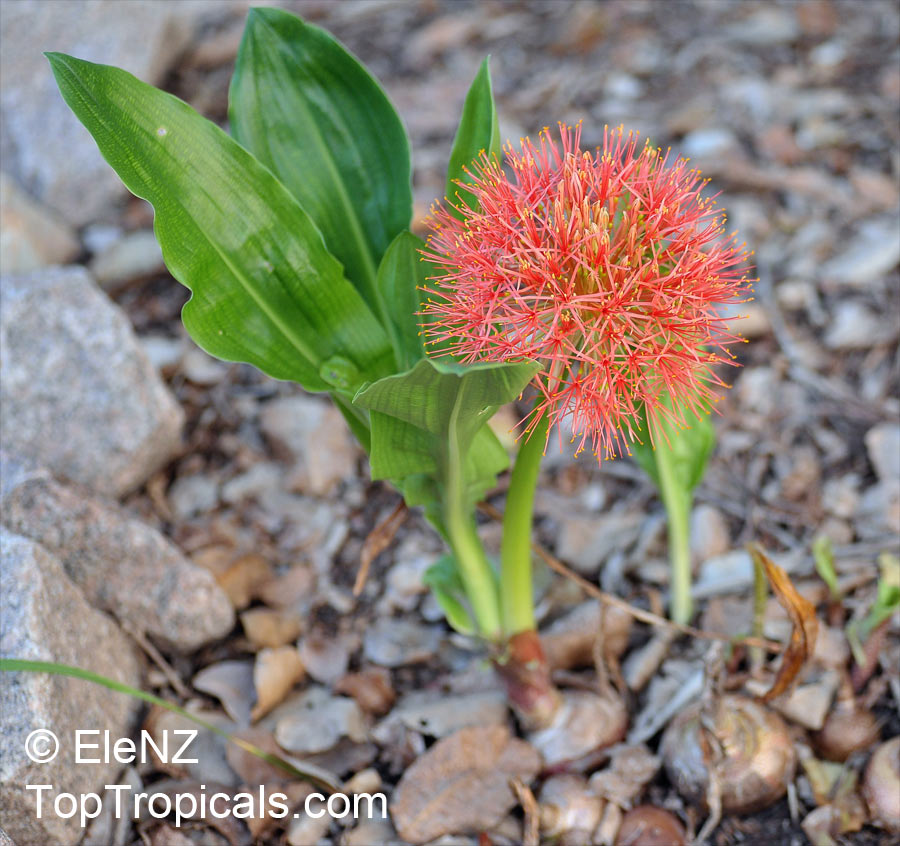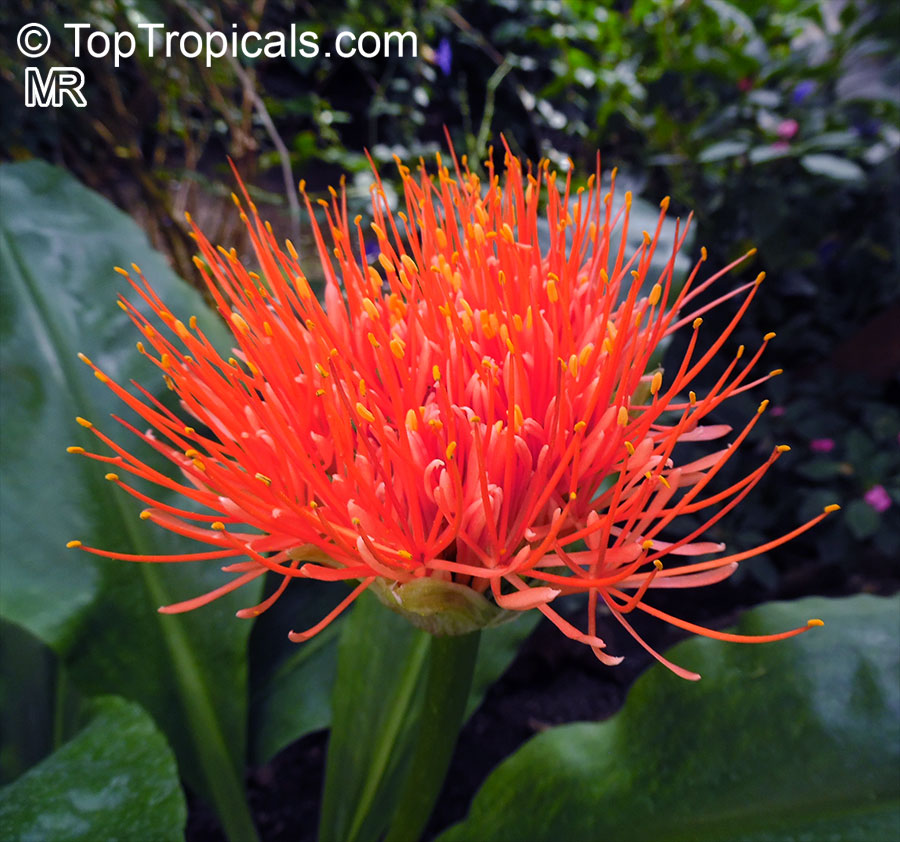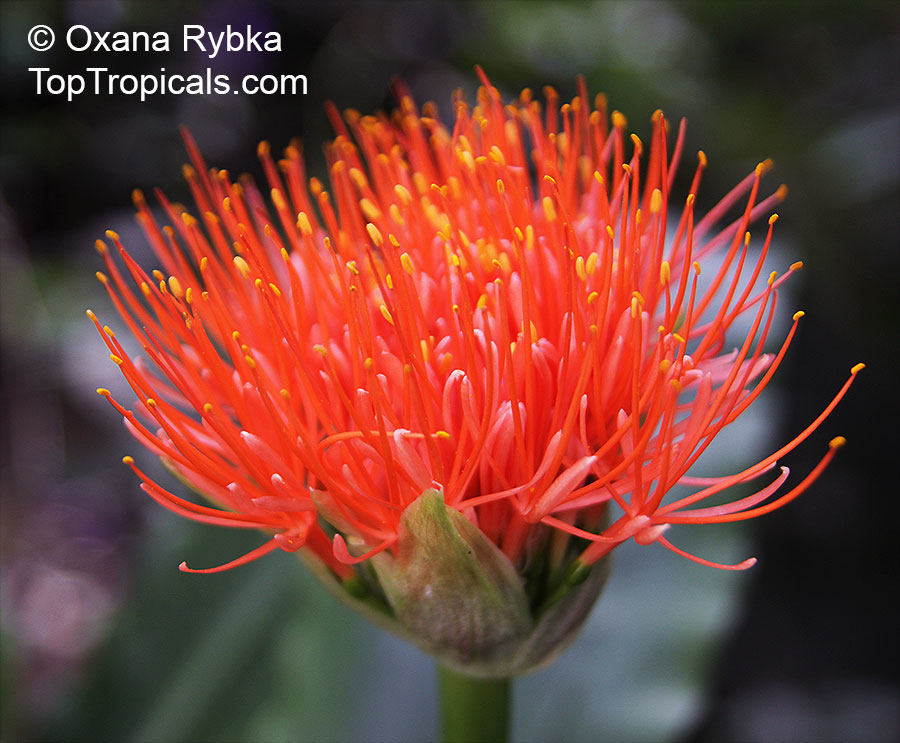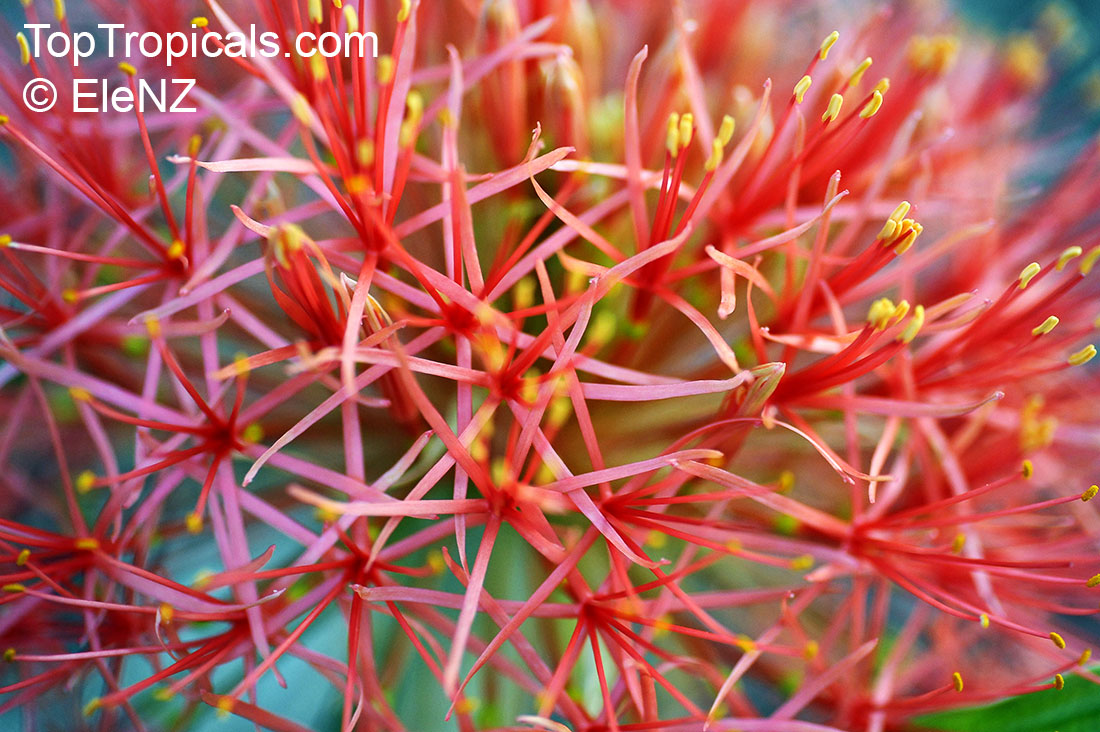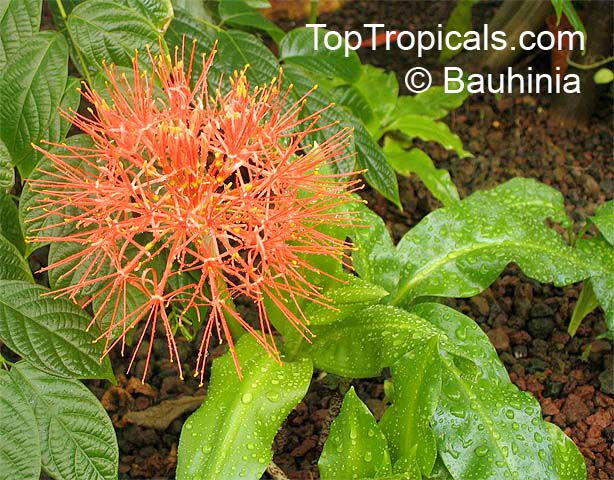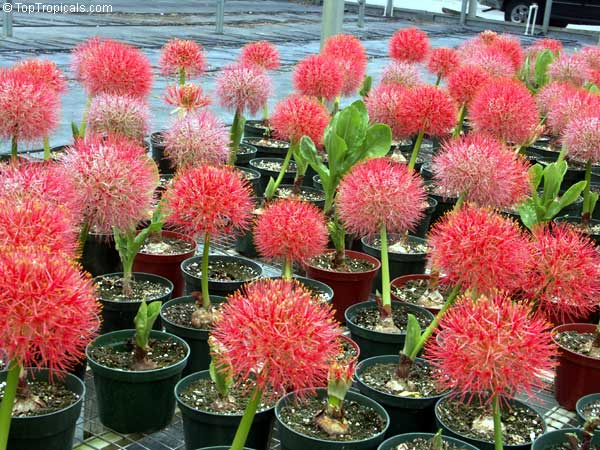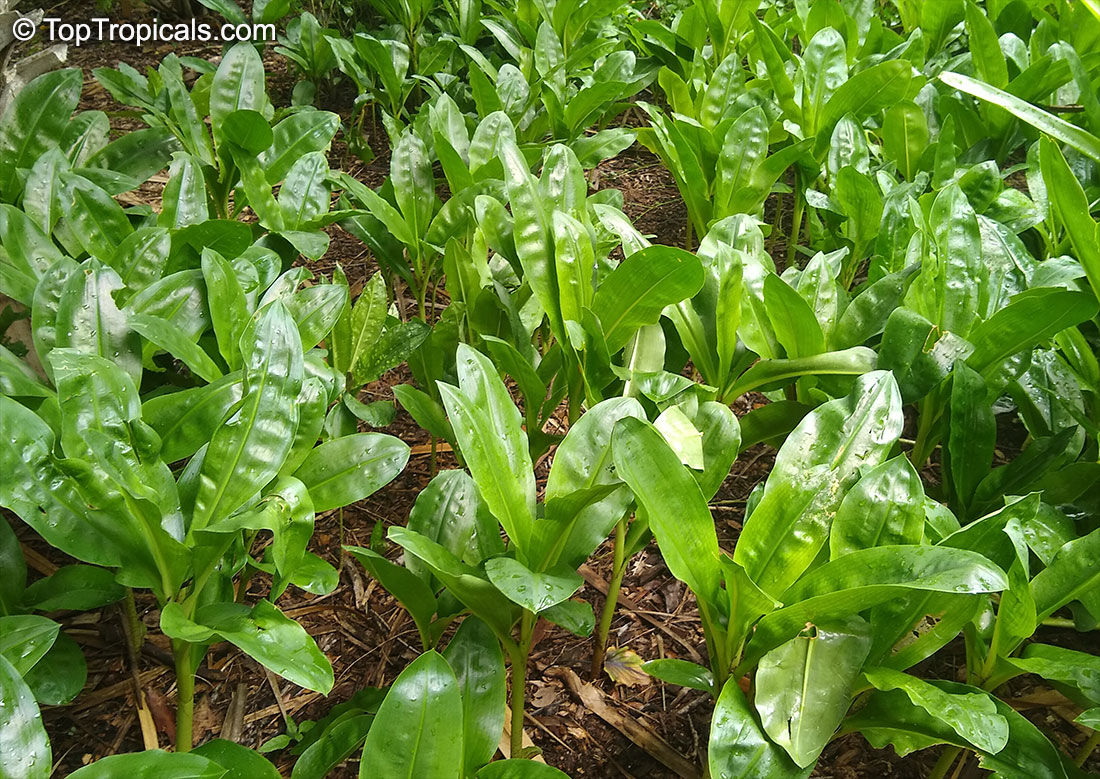Pictogram Guide · Mouse over pictogram for definition
Botanical family: Amaryllidaceae
| Number of plants found: 13 | Next | 
|
Go to page: | 1 | 2 |
Amaryllis belladonna, Callicore rosea
Belladonna Lily, March Lily, Naked LadyFamily: Amaryllidaceae (Formerly:Amaryllidaceae / Liliaceae)
Subfamily: Amaryllidoideae
Origin: South Africa









The large clusters of scented, trumpet-shaped pink or white flowers are carried on a long purplish-red and green stem appearing 50cm above the soil. Up to twelve flowers are produced from the flowering stem. These flowers are 10cm long and apically flare open about 8cm. The inflorescence tends to face the direction that receives the most sun.
The strap-like leaves are deciduous and are produced after flowering.
Eucharis grandiflora
Amazon LilyFamily: Amaryllidaceae (Formerly:Amaryllidaceae / Liliaceae)
Subfamily: Amaryllidoideae
Origin: South America






Large, sweet scented white flowers. Ideal for potting. Likes heavy feeding and plenty of water. Amazon lilies don't like to be disturbed, so keep them in the same pot for several years.
Read more about Eucharis grandiflora...
Haemanthus albiflos
Paint BrushFamily: Amaryllidaceae (Formerly:Amaryllidaceae / Liliaceae)
Subfamily: Amaryllidoideae
Origin: South Africa







This small shrub is native to South Africa and grows 2-5 feet tall and requires shade or semi-shaded areas in order to thrive. It does not require a great deal of water and prefers moderate levels, so it is perfect for those who don't want to water plants often. Haemanthus albiflos produces clusters of off-white to white flowers that attract butterflies and hummingbirds and make for a lovely garden addition. It has also been used in ethnomedical practices.
Although it is originally from warmer climates, Haemanthus albiflos can be grown in USDA Zone 9-11, with some extra care. Keep in mind that if you live in an area with cold winters, it is best to grow it in a pot that you can bring indoors. When kept in a pot, it should be kept in a cool, dry area and watered sparingly during winter and more often during summer. Fertilize several times a year and use a mix specifically formulated for bulbs. If you notice drooping in the leaves, it means you're overwatering.
Make sure to keep an eye out for pests, such as thrips, snails, aphids and slugs. These can be hard to spot due to their size and Haemanthus albiflos foliage providing a perfect hiding spot. Neem oil can help get rid of them and prevent further infestations.
Overall, Haemanthus albiflos is an easy to maintain, drought and pest-resistant plant. With its white to off-white flowers and slender stamens, it is a remarkable addition for anyone who likes to add color to their garden.
Hippeastrum reticulatum
Netted-Veined Amaryllis, Striped-Leaved AmaryllisFamily: Amaryllidaceae (Formerly:Amaryllidaceae / Liliaceae)
Subfamily: Amaryllidoideae
Origin: Brazil






Hippeastrum sp.
AmaryllisFamily: Amaryllidaceae (Formerly:Amaryllidaceae / Liliaceae)
Subfamily: Amaryllidoideae
Origin: Tropical South America















Hippeastrum sp. (Amaryllis) is a plant that is commonly grown in containers in colder regions, as it can be easily brought indoors when the weather turns cold and kept in a cool place until spring. It can be grown in full sun or semi-shade, but requires moderate watering and does not tolerate soggy soil. The flowers come in a variety of colors, including pink, white, blue, lavender, purple, red, yellow, and orange, and attract butterflies, hummingbirds, and other pollinators.
The Amaryllis is a tender bulb that requires warm temperatures (70 to 75 F) for 9 to 10 months to promote flowering and vegetative growth, followed by 2 to 3 months of cool dry storage or cool growing conditions to promote reflowering. Amaryllis bulbs are easy to bring to bloom and are popular worldwide, coming in many beautiful varieties in shades of red, white, pink, salmon, and orange, as well as striped and multicolored varieties. Planting period for Amaryllis is from October until the end of April, with a flowering period from late December until the end of June, lasting 7-10 weeks.
When planting the Amaryllis bulb, the base and roots should be placed in lukewarm water for a few hours before planting up to its neck in potting mix, being careful not to damage the roots. Bulbs should be planted 8 weeks before the desired bloom time. After flowering, the stem of the Amaryllis should be cut back to the top of the bulb when it starts to sag, and the bulb should be stored in a cool, dark place, such as the crisper of a refrigerator for a minimum of 6 weeks before planting again.
Hymenocallis sp.
Spider Lily, Ismene, Sea DaffodilFamily: Amaryllidaceae (Formerly:Amaryllidaceae / Liliaceae)
Subfamily: Amaryllidoideae
Origin: West Indies






Hymenocallis sp., also known as the Spider Lily, is a small flowering plant native to the West Indies. It generally grows between 2-5 feet and prefers a semi-shady area. Regular water is a must for this plant, as well as moist to wet soil.
The Spider Lily has arched and narrow petals that have a delicate, spider-like appearance and are usually white or off-white in color. They're slightly fragrant, making them popular for planting in gardens for a sweet aroma.
This flowering plant can be grown in USDA hardiness zones 9-11 and needs protection during winter months if grown in zones with severe cold temperatures. To grow it in cold regions, the best option is to pot it and bring it indoors during cold weather. Regular water and fertilization will help it thrive even if grown in a pot.
In addition to regular watering, the Spider Lily should be fertilized every two-four weeks with an all-purpose fertilizer. To prevent disease, it's important to avoid over-watering and give it good air circulation. Pruning the plant back to the ground every two to three years can help maintain its shape and prevent it from growing too tall.
The Spider Lily is an attractive plant that is sure to be a conversation starter in any garden. It's easy to maintain, making it a great choice for novice gardeners. With regular water and care, it is sure to bring a spot of vibrant beauty to any outdoor space.
Hymenocallis speciosa, Pancracium speciosum
Spider LilyFamily: Amaryllidaceae (Formerly:Amaryllidaceae / Liliaceae)
Subfamily: Amaryllidoideae






Nectaroscordum siculum, Allium siculum,
Ornamental Onion, Mediterranean BellsFamily: Amaryllidaceae (Formerly:Alliaceae / Liliaceae /Amaryllidaceae )
Subfamily: Allioideae
Origin: South Europe
USDA Zone: 5-9?









A very fine species with large, nodding umbels of white or cream flowers, flushed pink or purplish red, and tinted green at the base. It grows easily in well-drained soil.
Nerine sp.
Jersey Lily, Guernsey Lily, Spider LilyFamily: Amaryllidaceae (Formerly:Amaryllidaceae / Liliaceae)
Subfamily: Amaryllidoideae
Origin: South Africa











Nerine sp. (Jersey Lily) is a small plant, typically standing between 2-5 ft tall. They are native to South Africa and are a deciduous species that is known to attract butterflies and hummingbirds. This plant grows in USDA zones 9-11 and is best cultivated in pots and flowerbeds. It is advised to pot in a somewhat gritty mix that allows drainage but also safeguards the bulb from dehydration in its dry dormant period. While in active growth, they require full sun or semi shade to flourish. Regular water is necessary and a moderate level of fertilizer is preferred.
Nerine sp. exhibits beautiful pink, white, off-white, red, crimson and vinous flowers. These flowers make the plant aesthetically pleasing and enrich any garden. While these flowers require more water and care than most, it is totally worth the effort for the delightful sight and scent it brings to your home. In colder regions, pots are the ideal choice to grow this plant. When potting, be sure to use a medium that drains well and contains organic material to ensure proper development. Regular watering and moderate fertilizing will help retain the bloom of the flowers throughout the year.
Scadoxus multiflorus, Haemanthus katherinae, Haemanthus multiflorus
Blood Lily, Sea Egg, Powder PuffFamily: Amaryllidaceae (Formerly:Amaryllidaceae / Liliaceae)
Subfamily: Amaryllidoideae
Origin: Africa







Scadoxus multiflorus (Blood Lily) is also known for its flowers and attractive foliage. Its deep-green, wavy-margined leaves are huge, up to 18 inches long and 6 inches wide. Its bright red, crimson and vinous-colored flowers make a stunning contrast against the foliage. Blooming in late spring to mid-summer. The flowers form a dense, globular and will attract butterflies and hummingbirds to its nectar-rich petals.
Scadoxus multiflorus needs to be grown in full sun, and requires regular water when grown in a container. When planted in the ground, it is drought tolerant and only needs moderate water to keep the foliage looking lush. Planting of the bulbs in autumn is recommended. It can be grown in USDA Zone 9-11 with care during the cold winter months. When growing the Scadoxus multiflorus in a pot in colder regions, it is recommended to bring the pot indoors during winter and let it rest in a cool place until it can be replanted outdoors in the spring.
This plant will make an excellent addition to a rock or gravel garden, or a stunning container or greenhouse specimen.
| Next |  |
Use link to repeat this search:
https://toptropicals.com/cgi-bin/garden_catalog/cat.cgi?search_op=and&keyword_op=and&language=e&family=Amaryllidaceae
&number=10&no_change_lang=1&user=tt&sale=1&first=0
